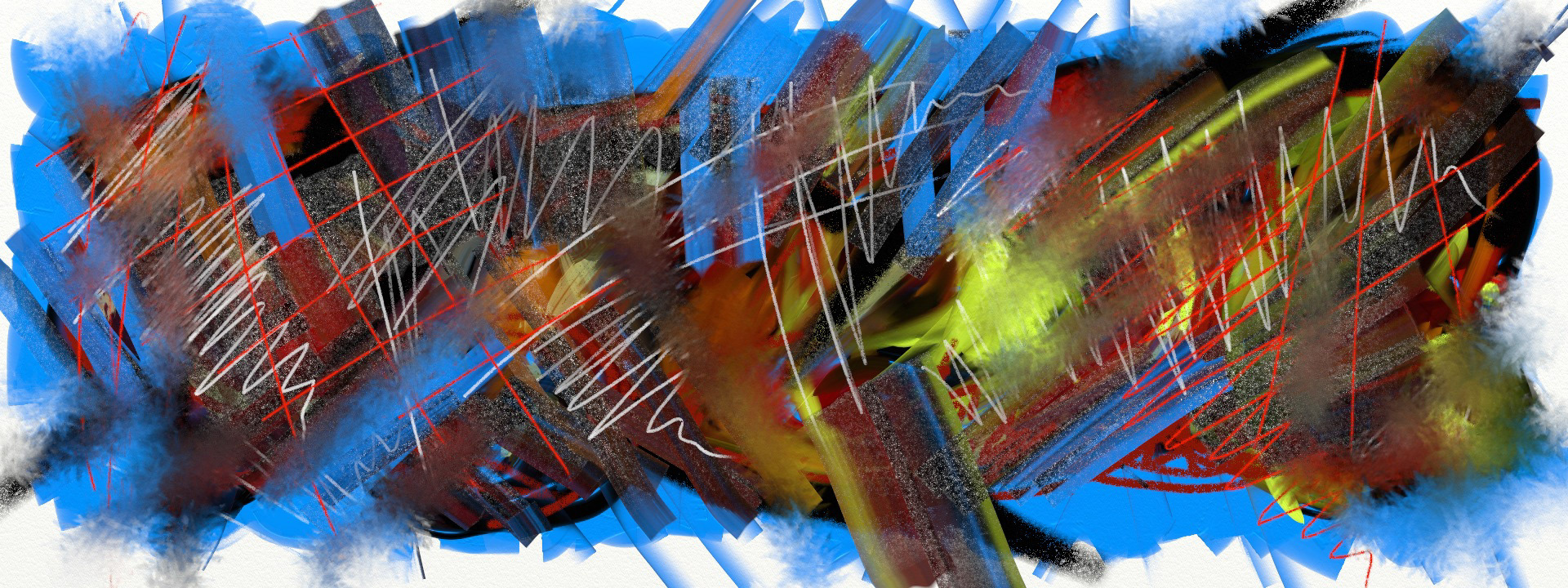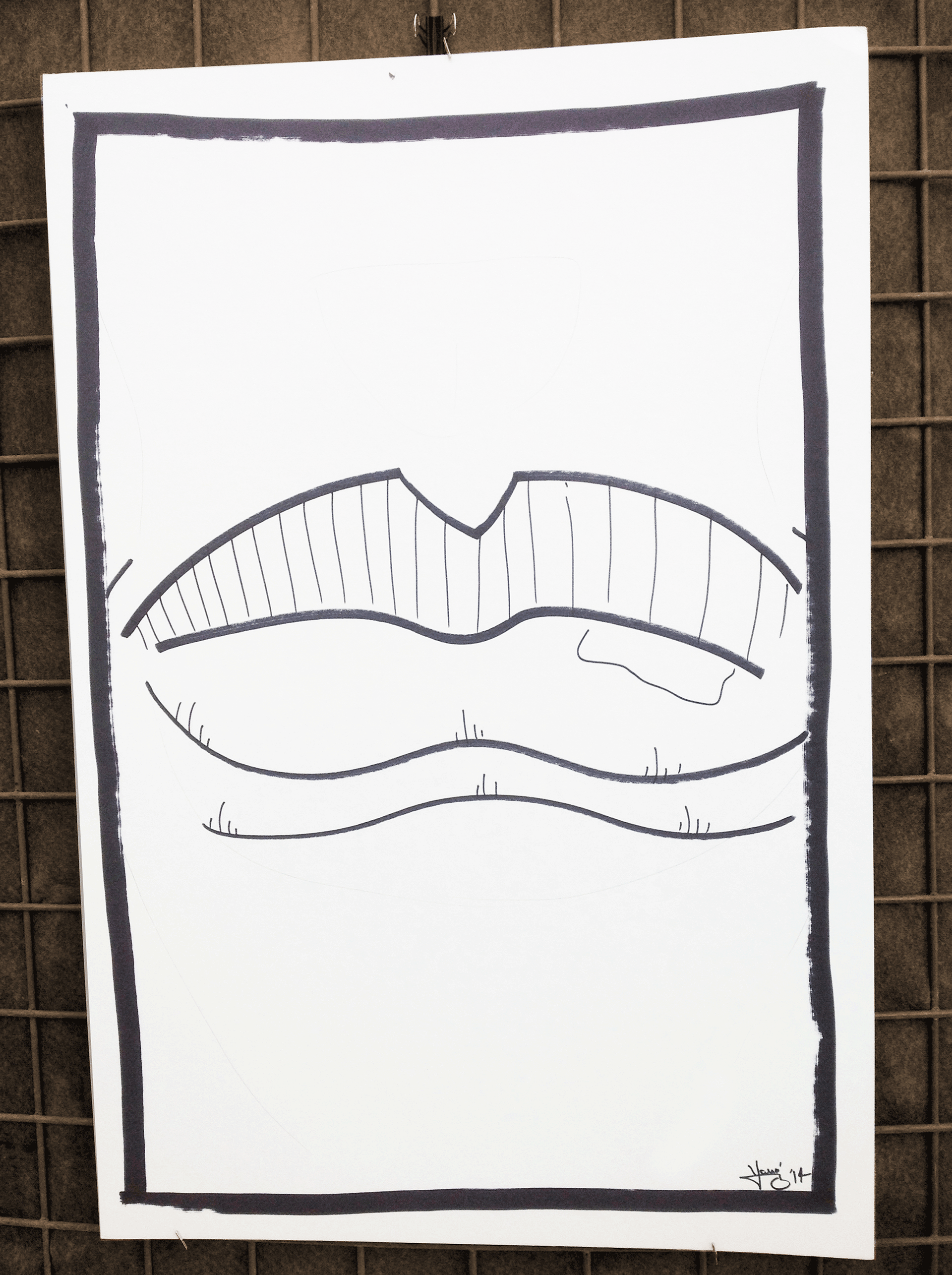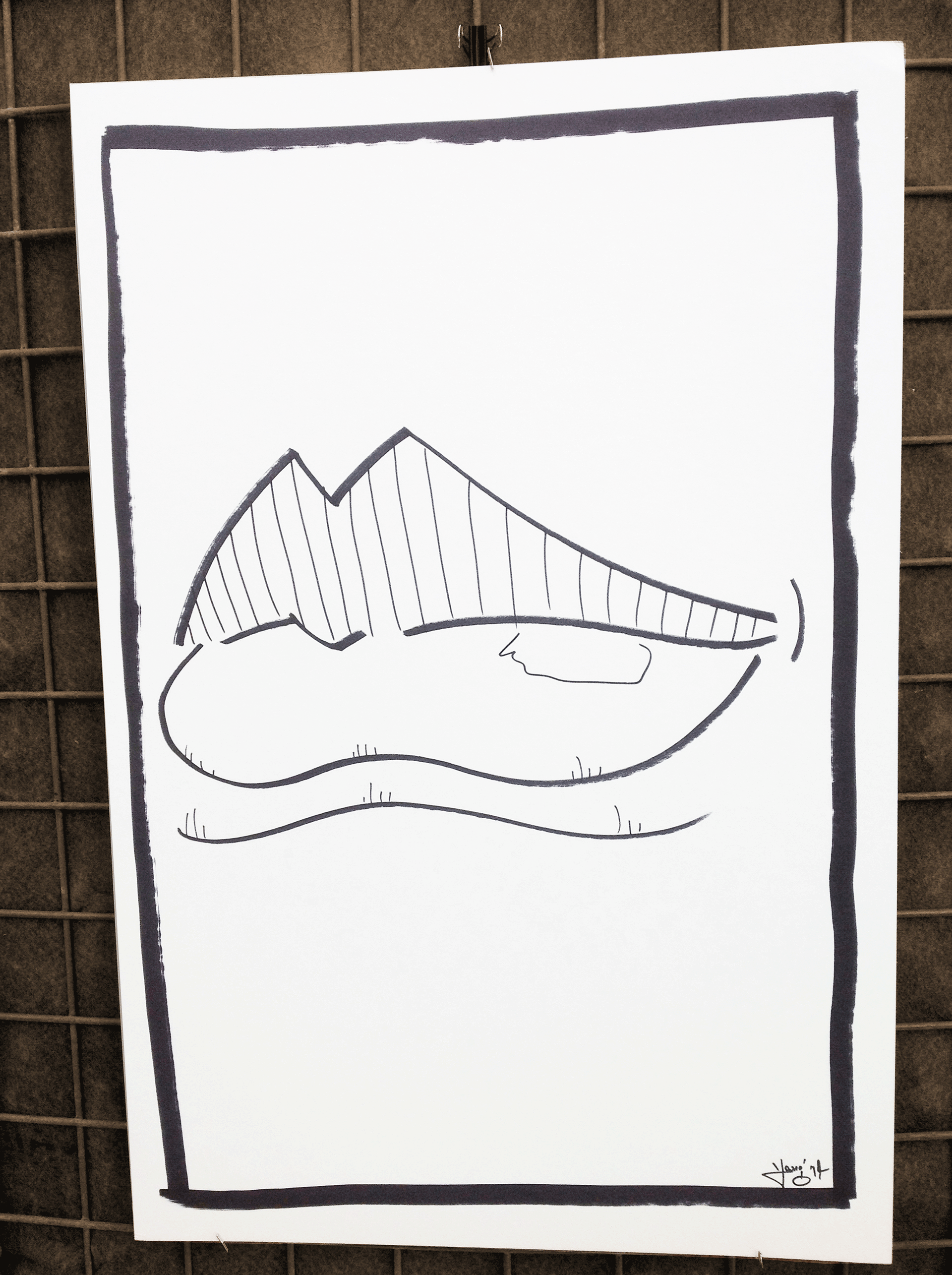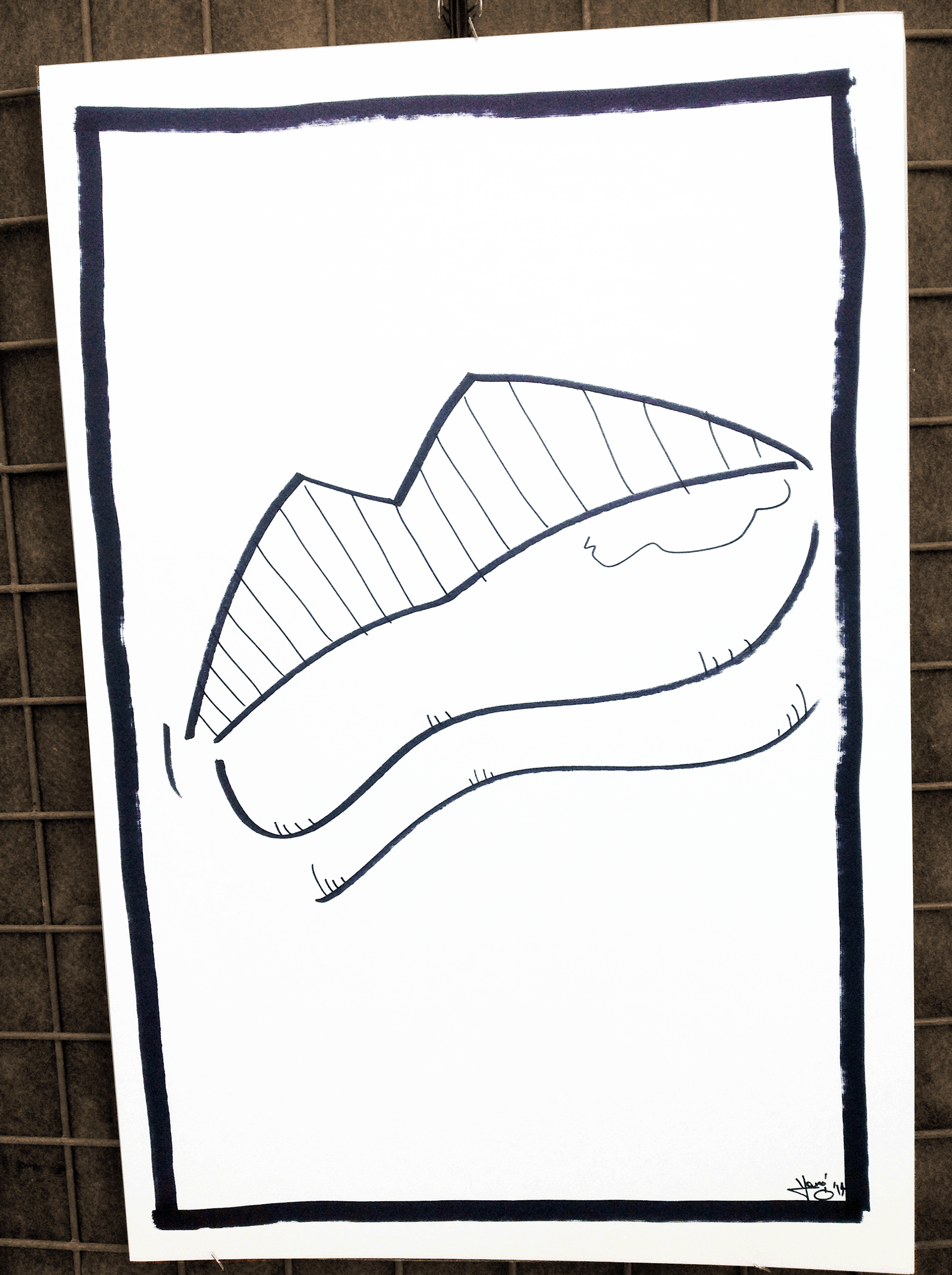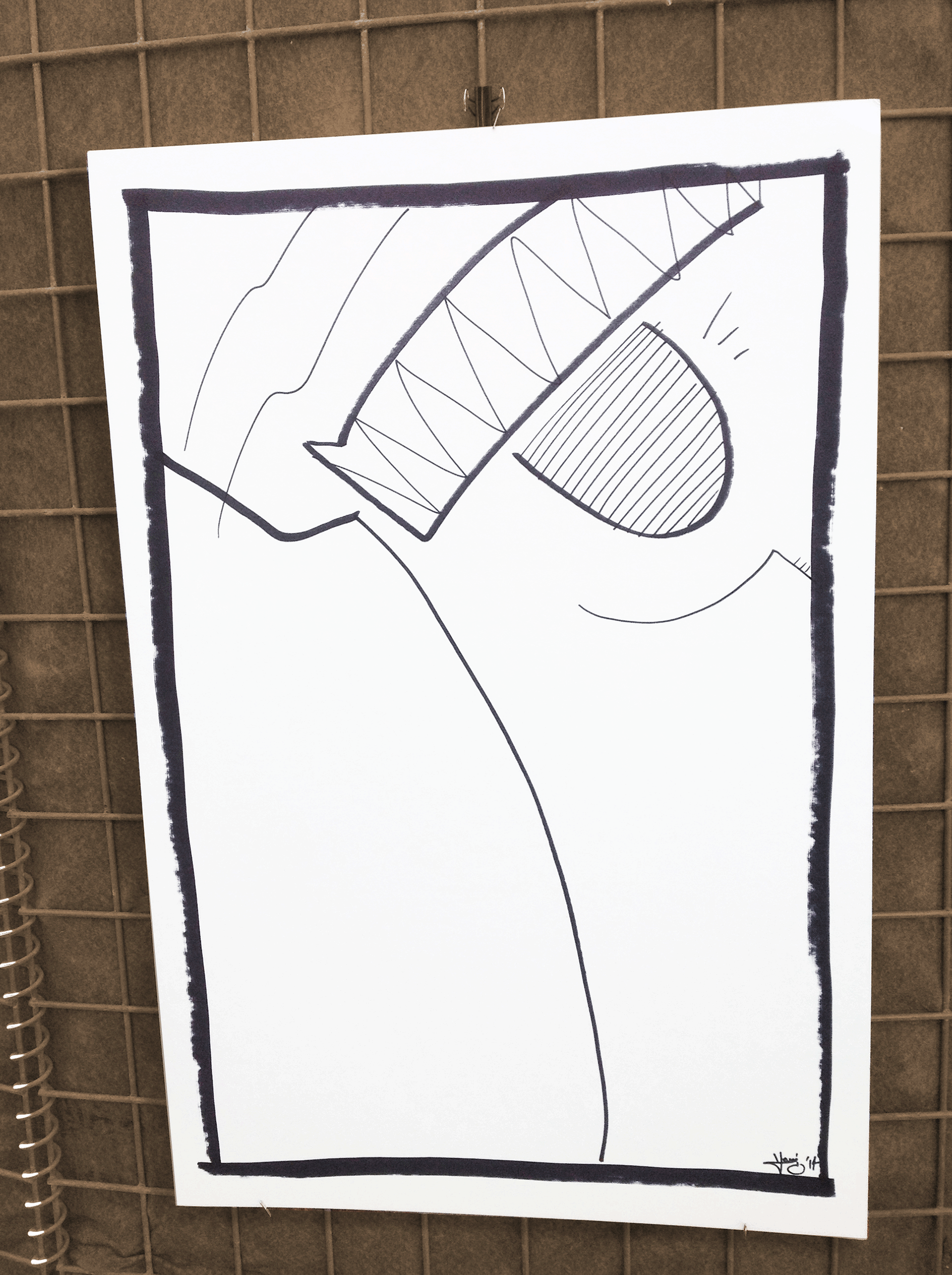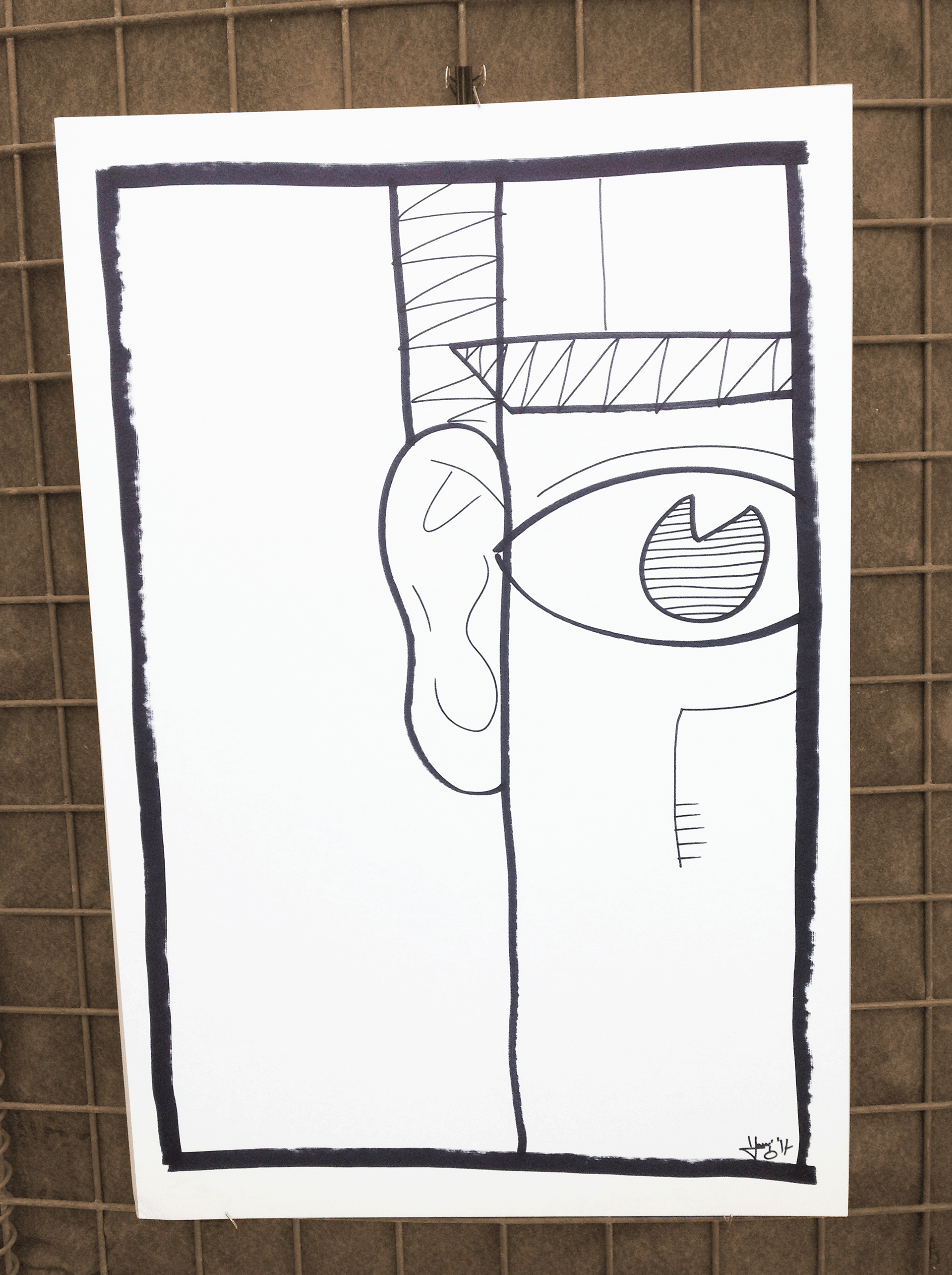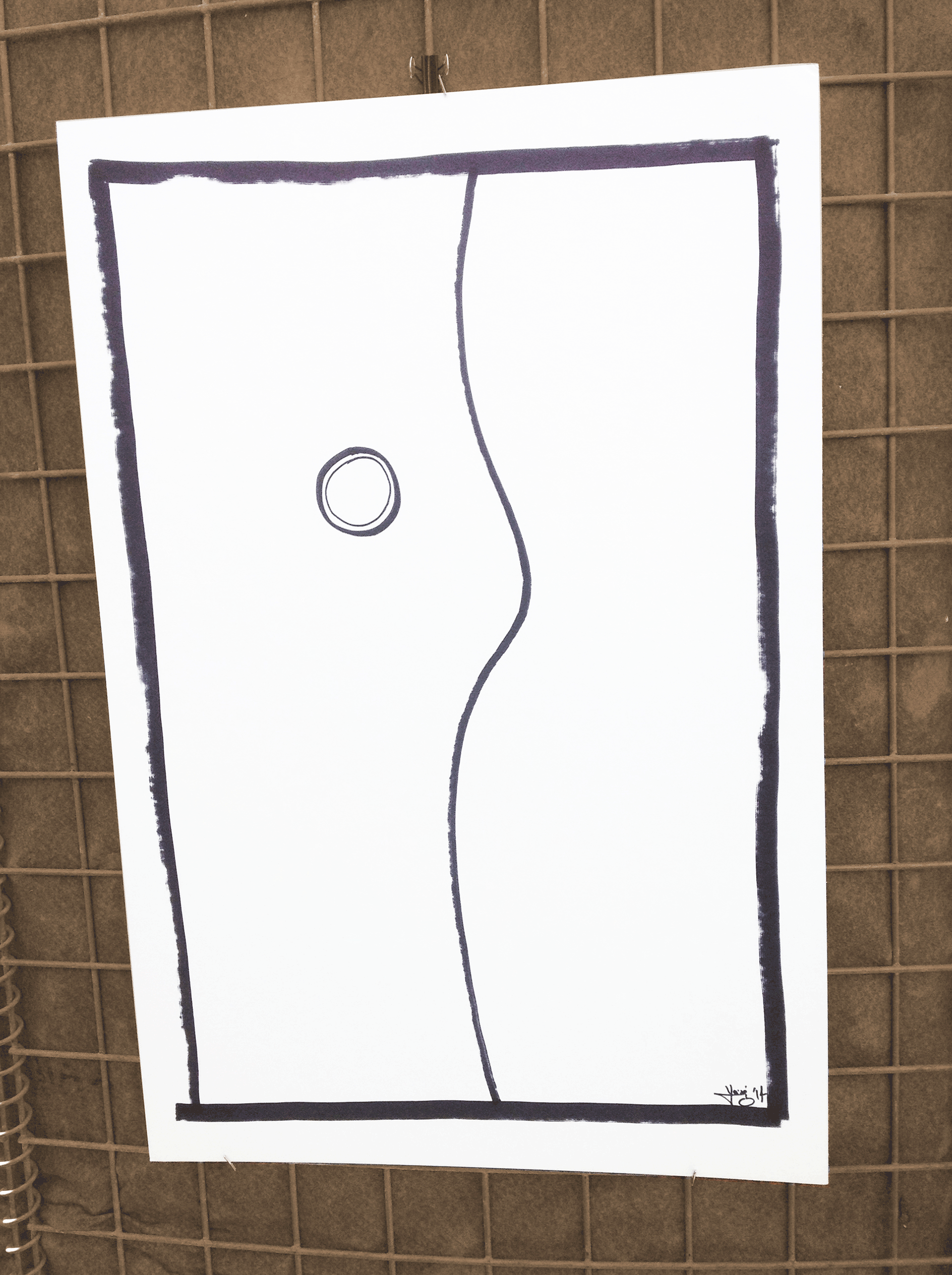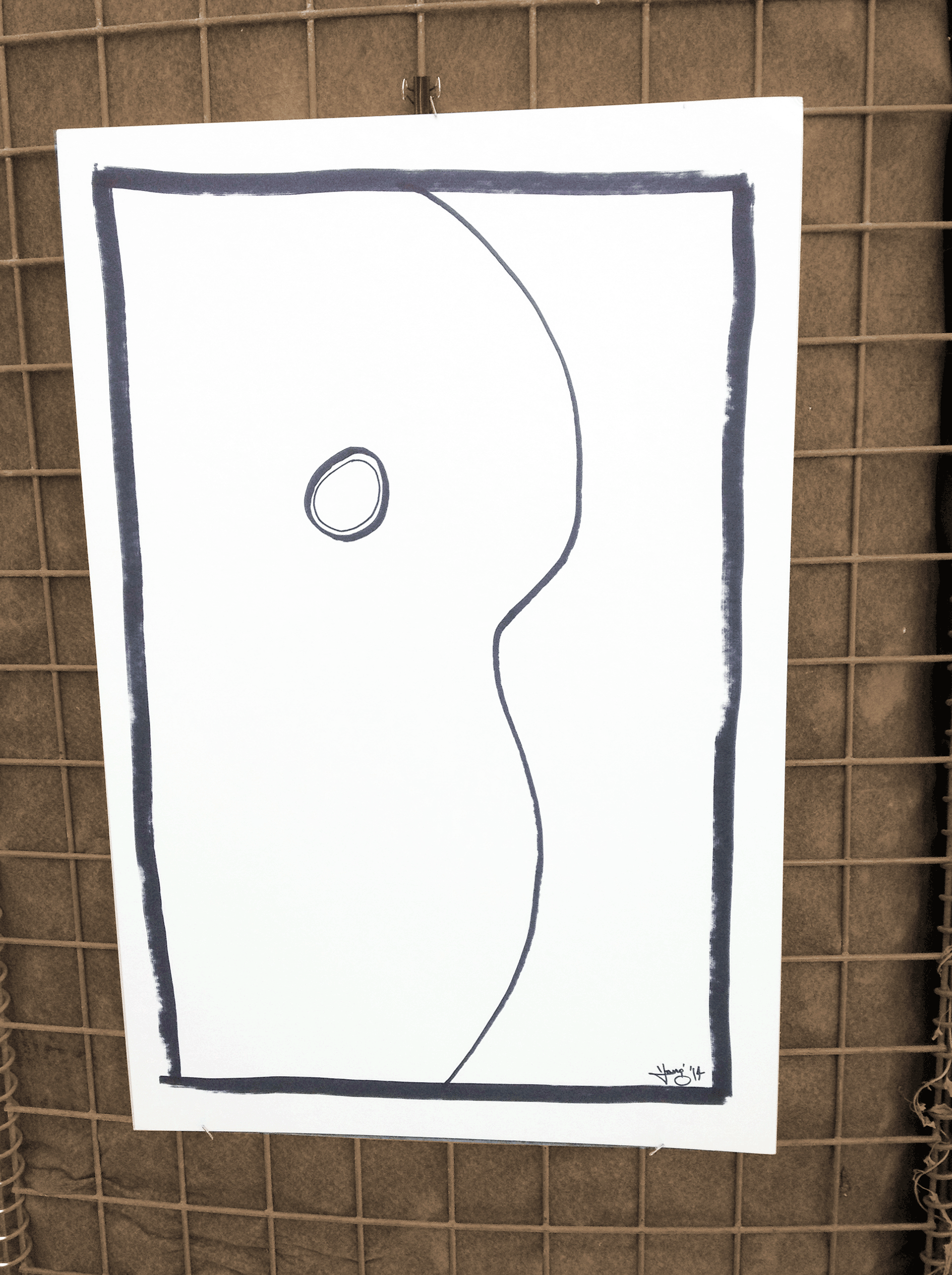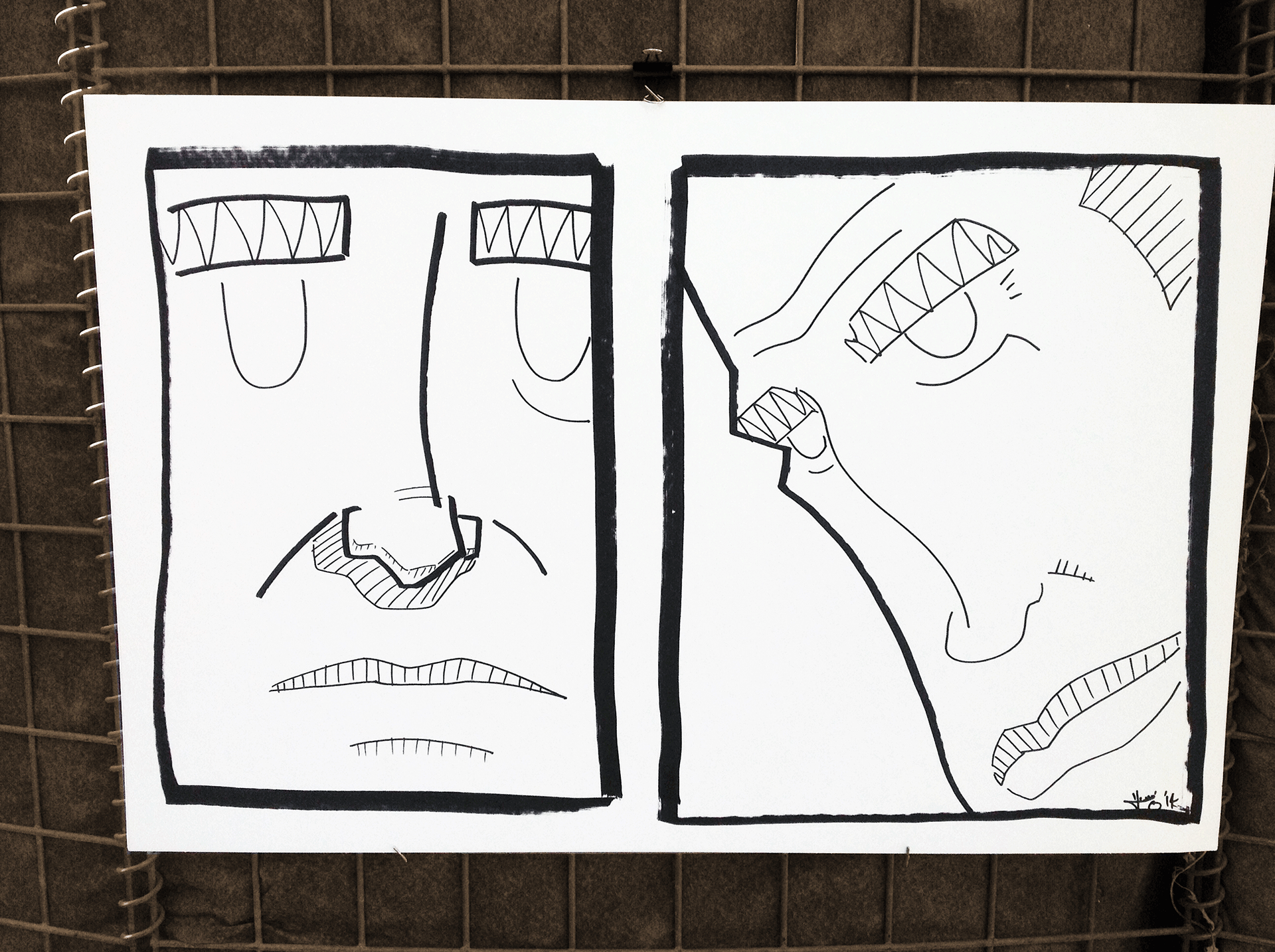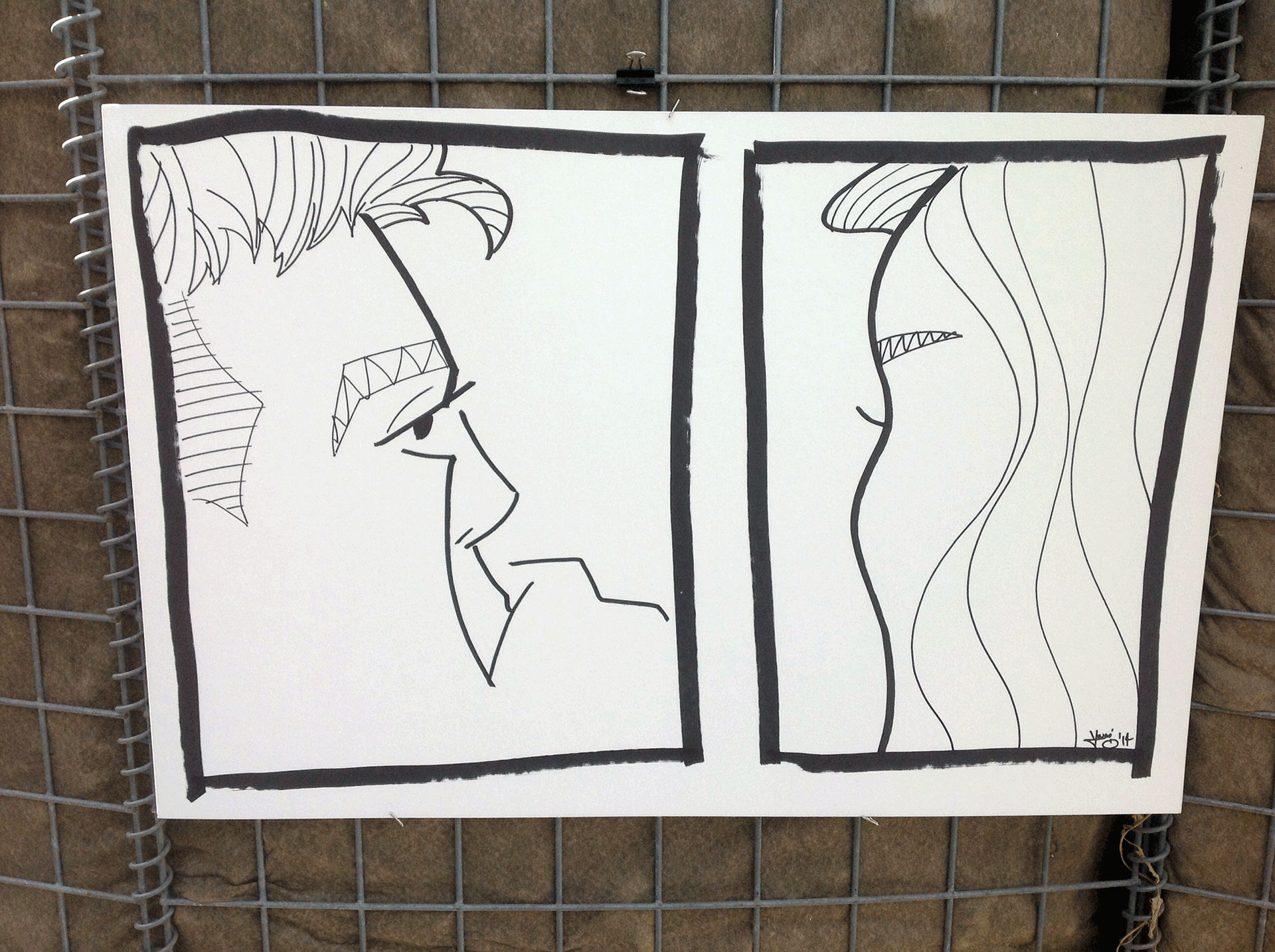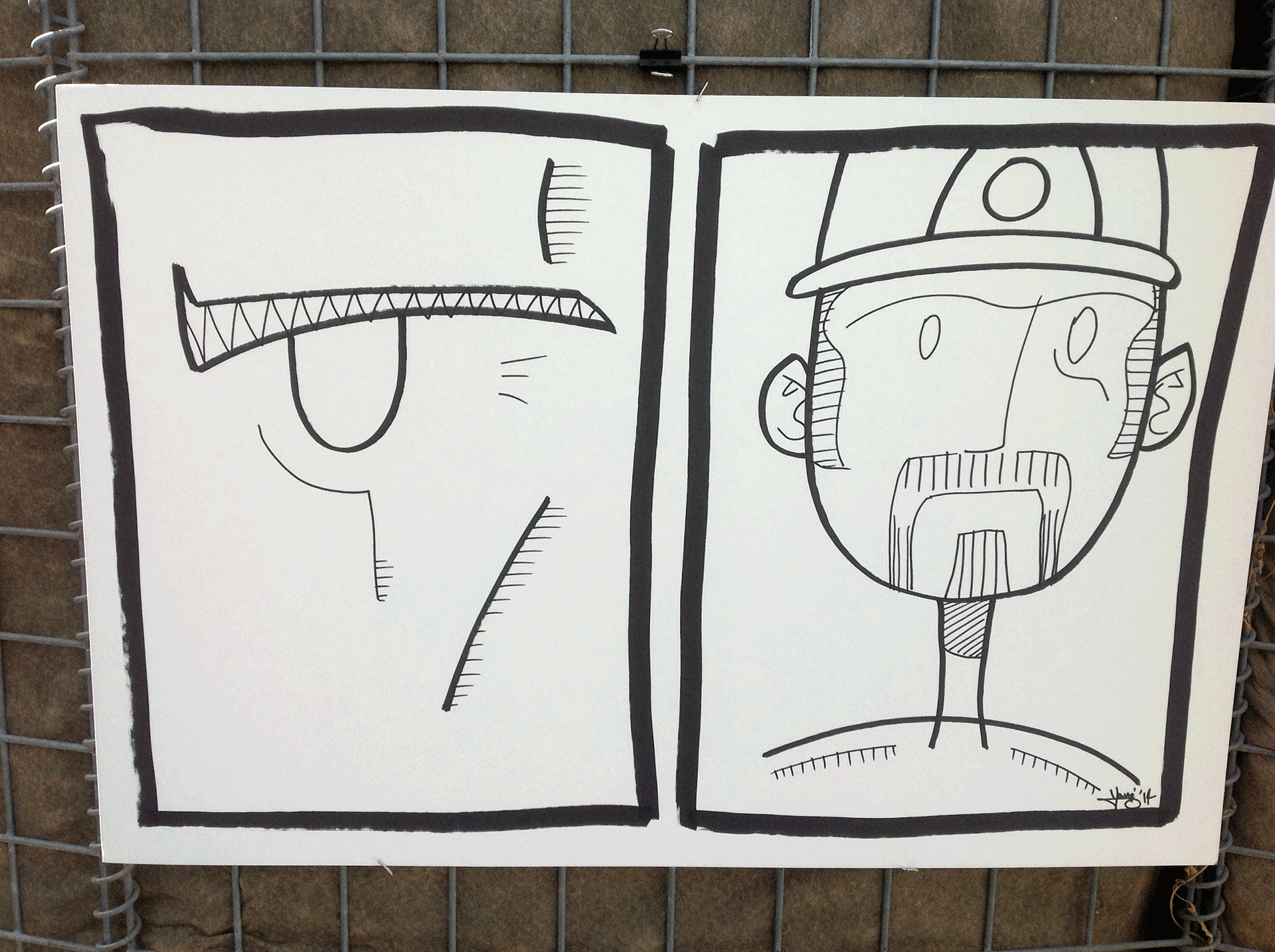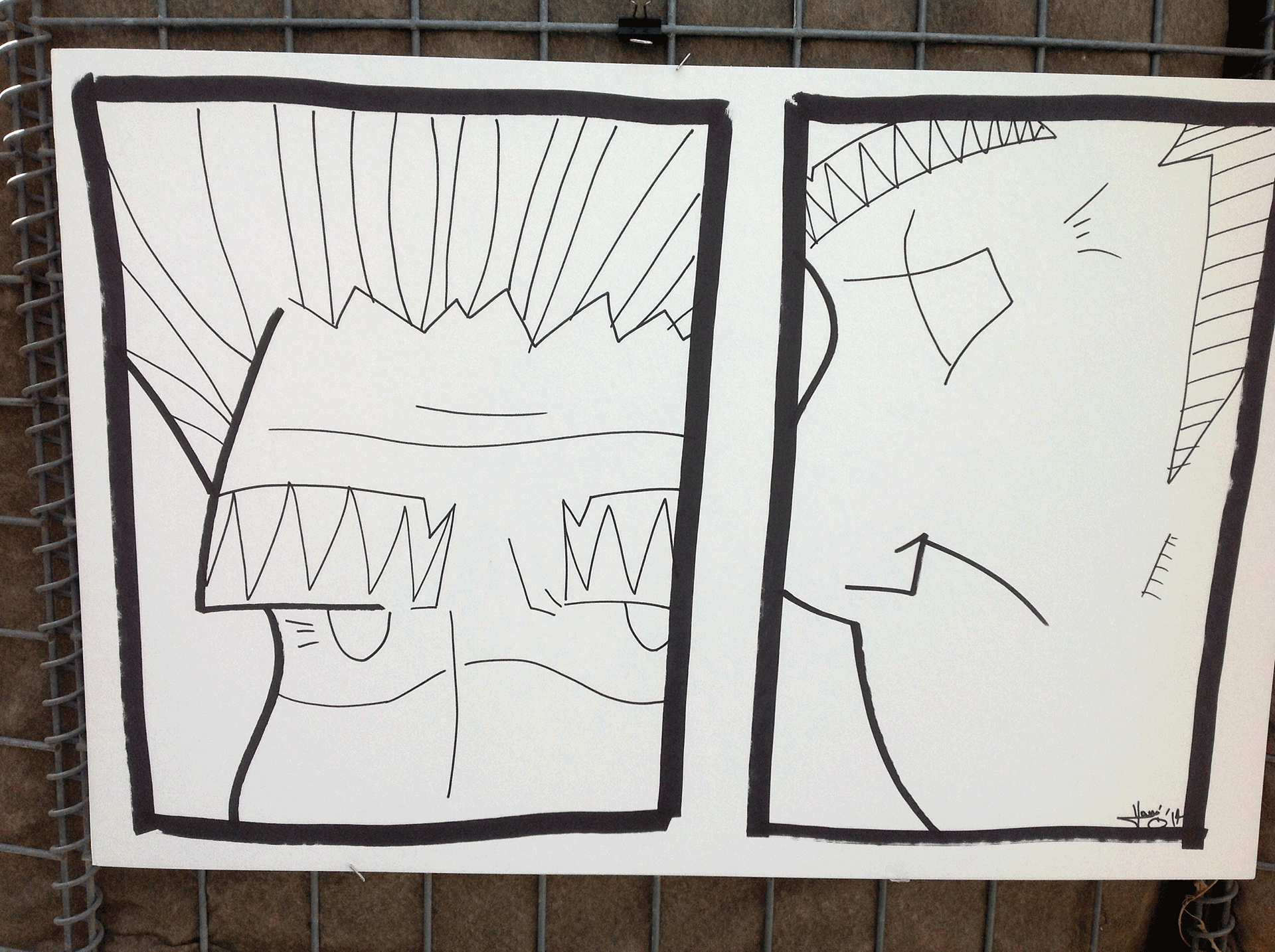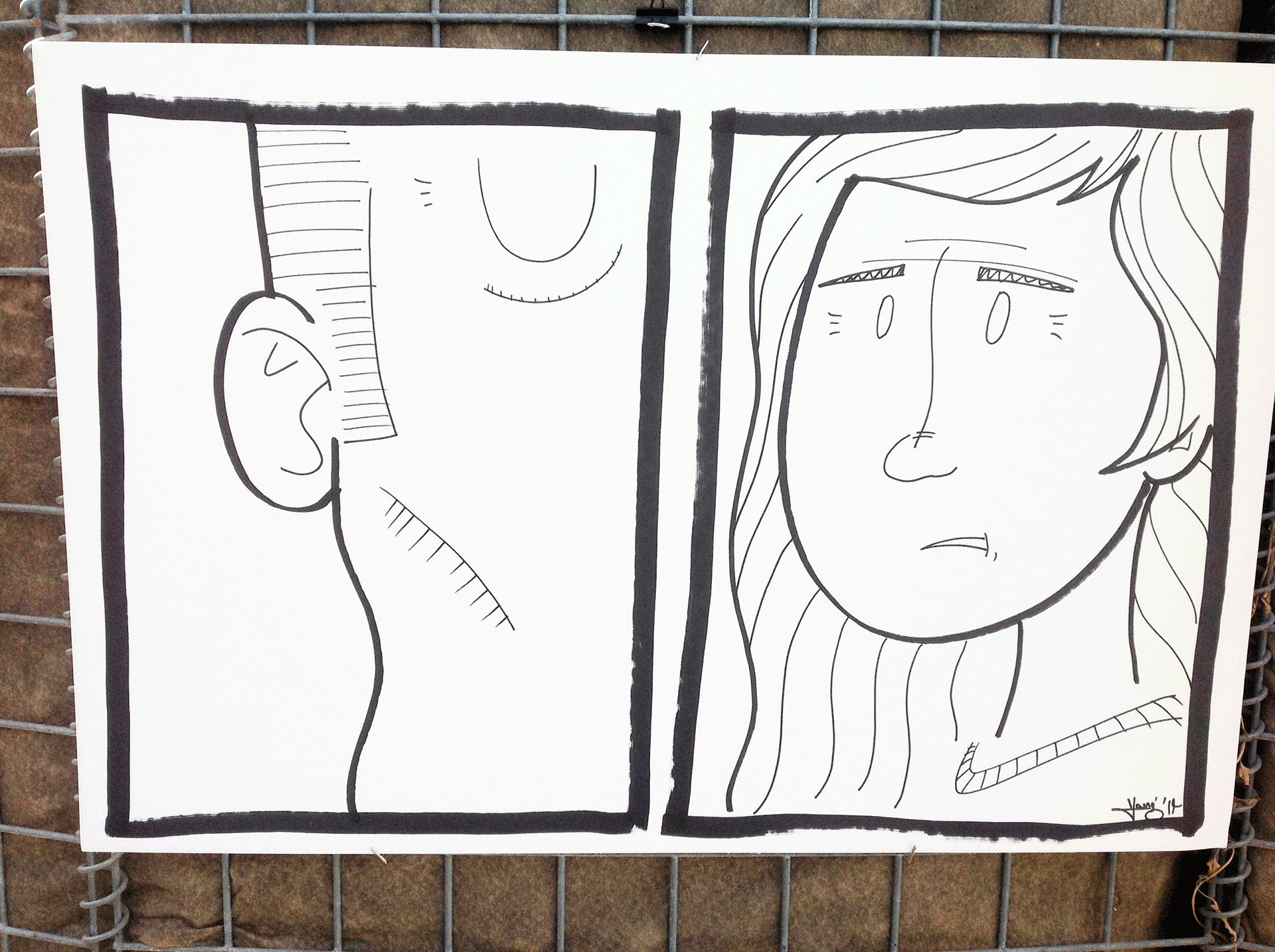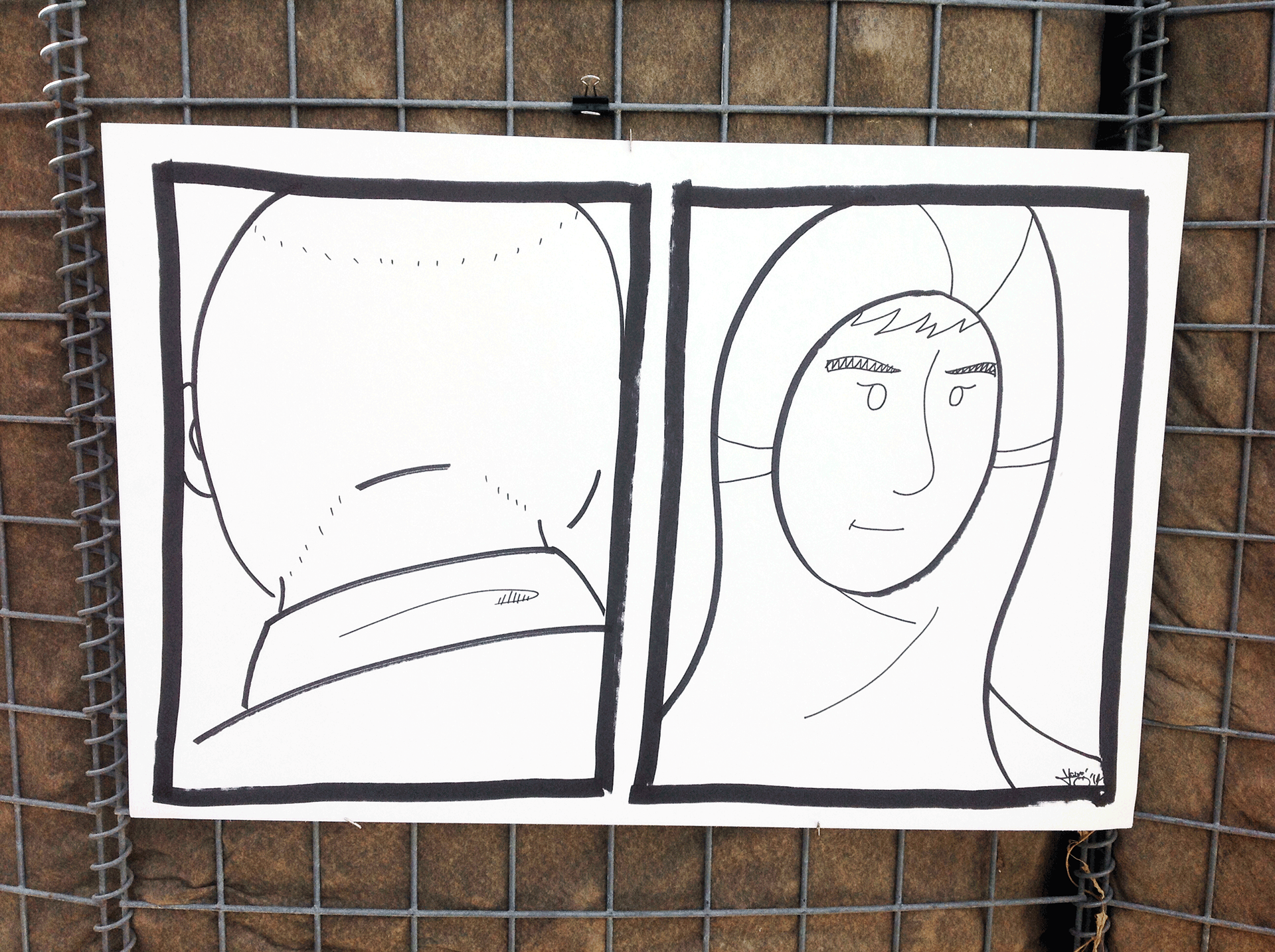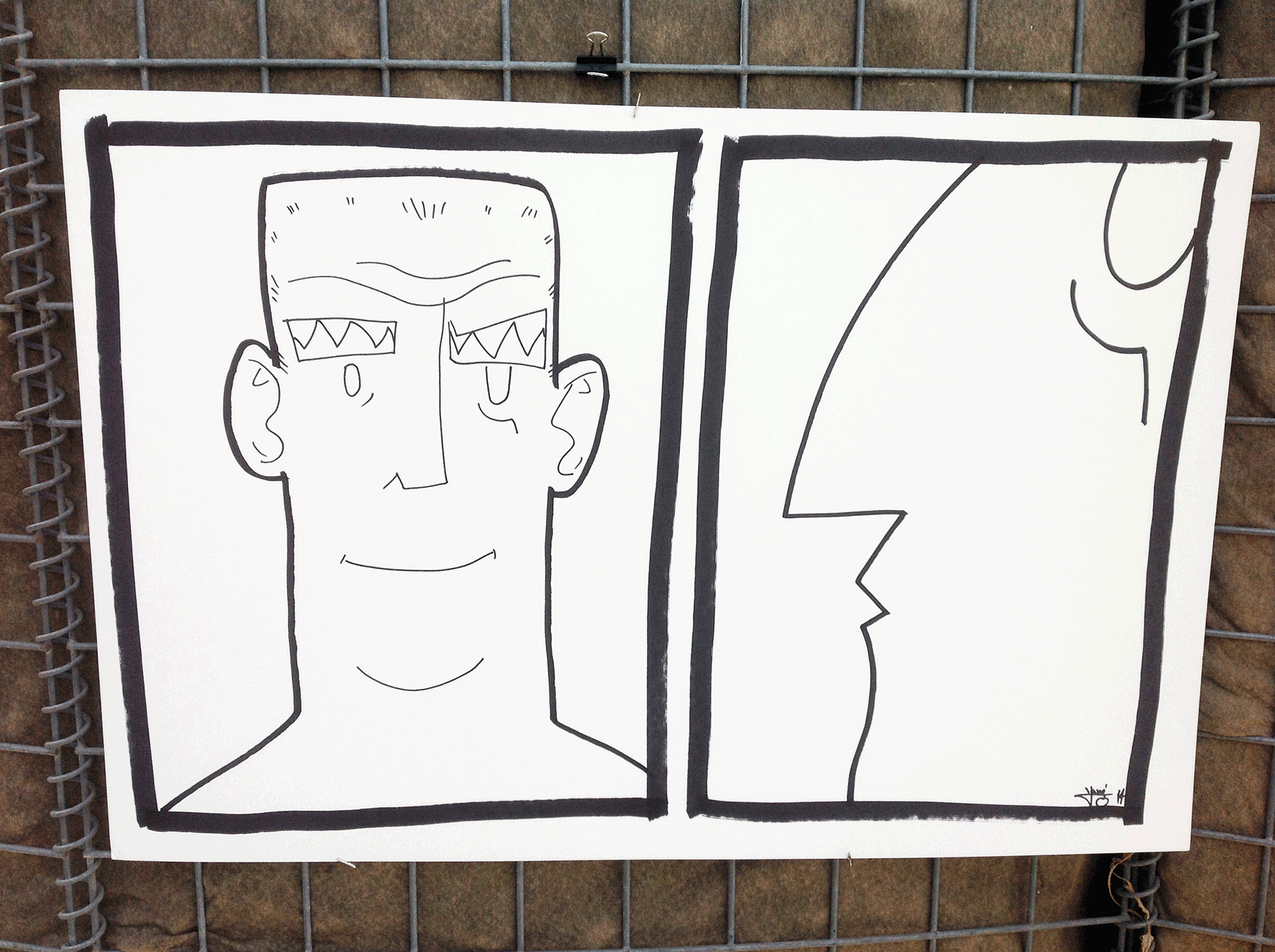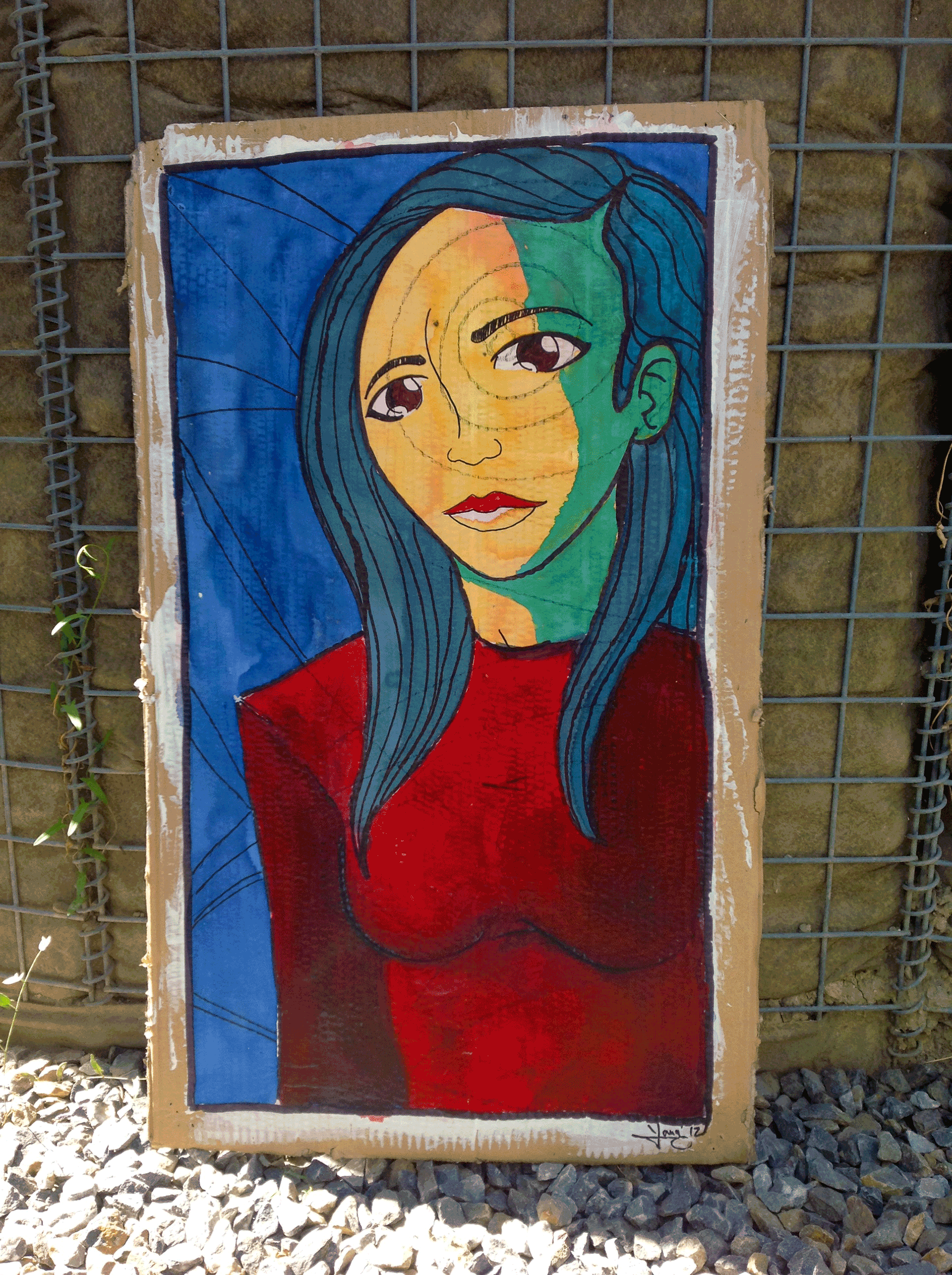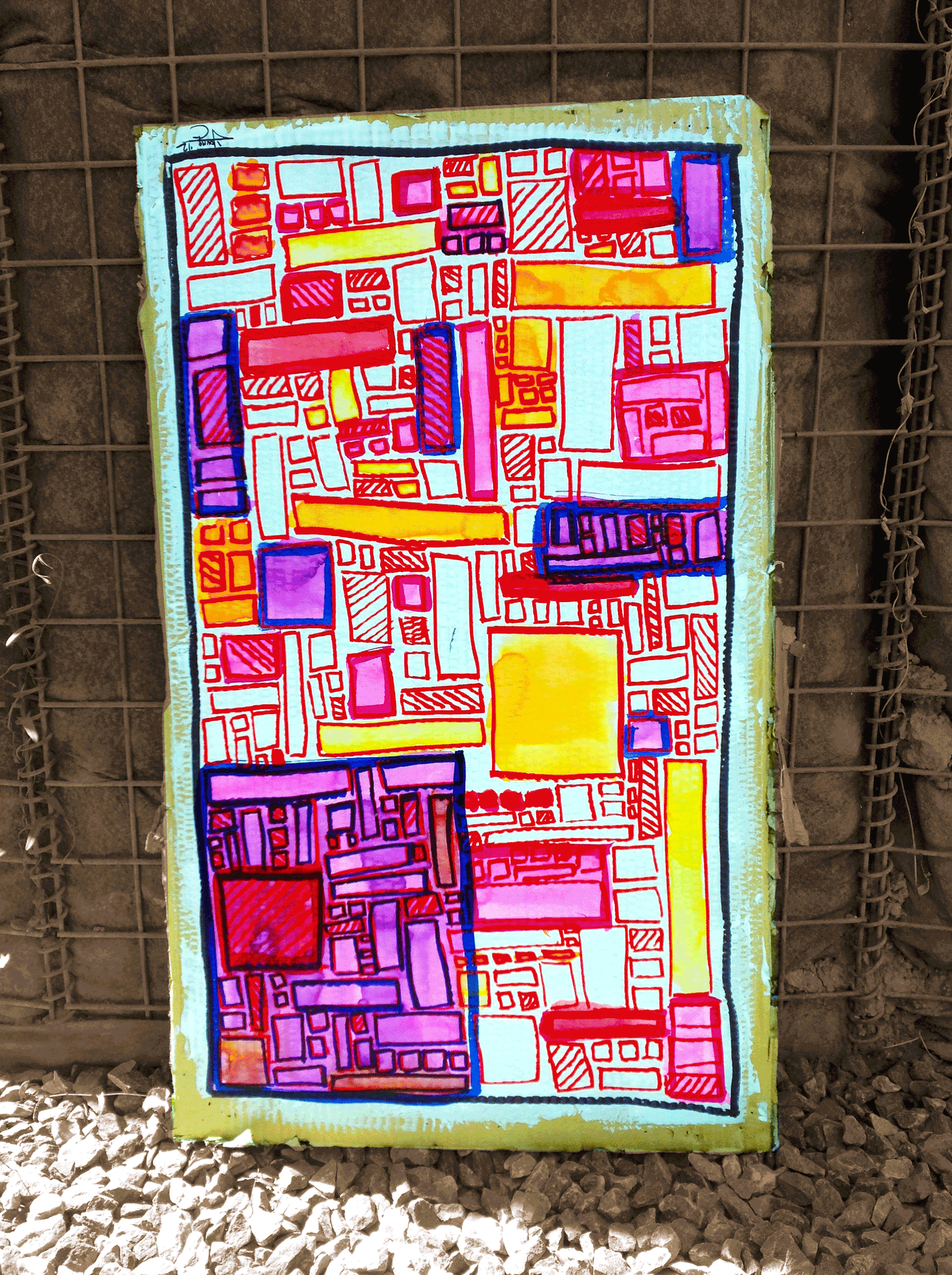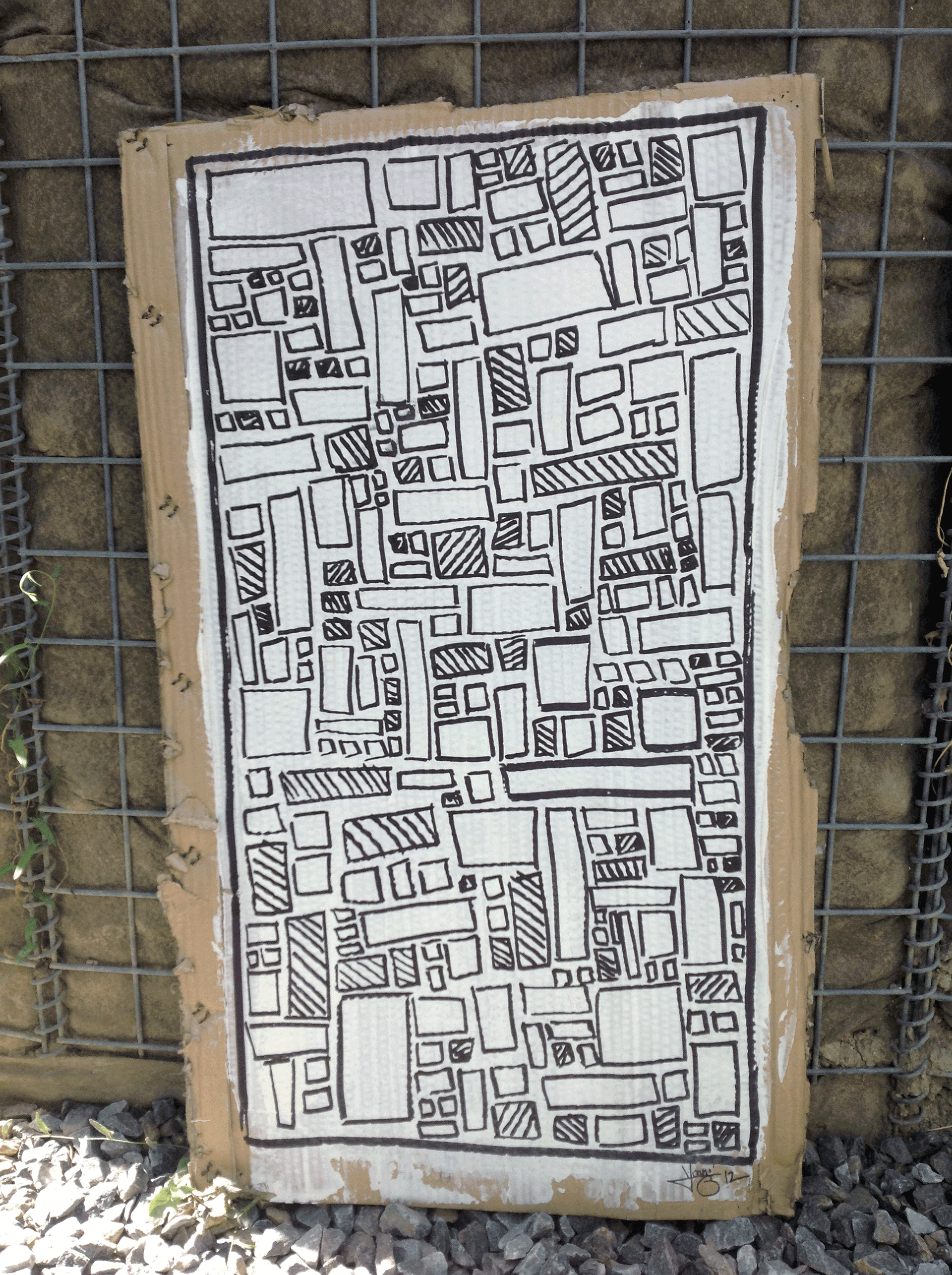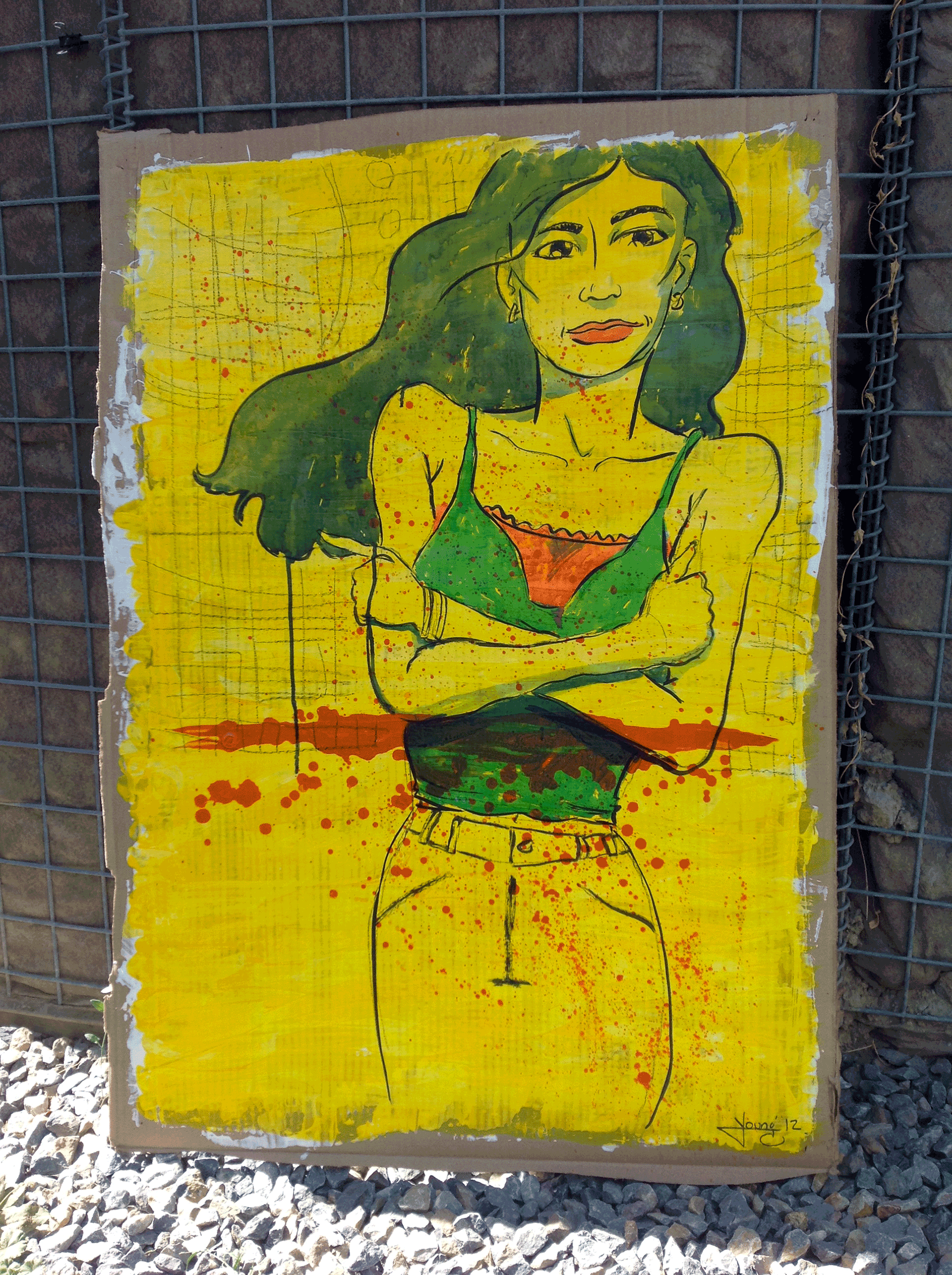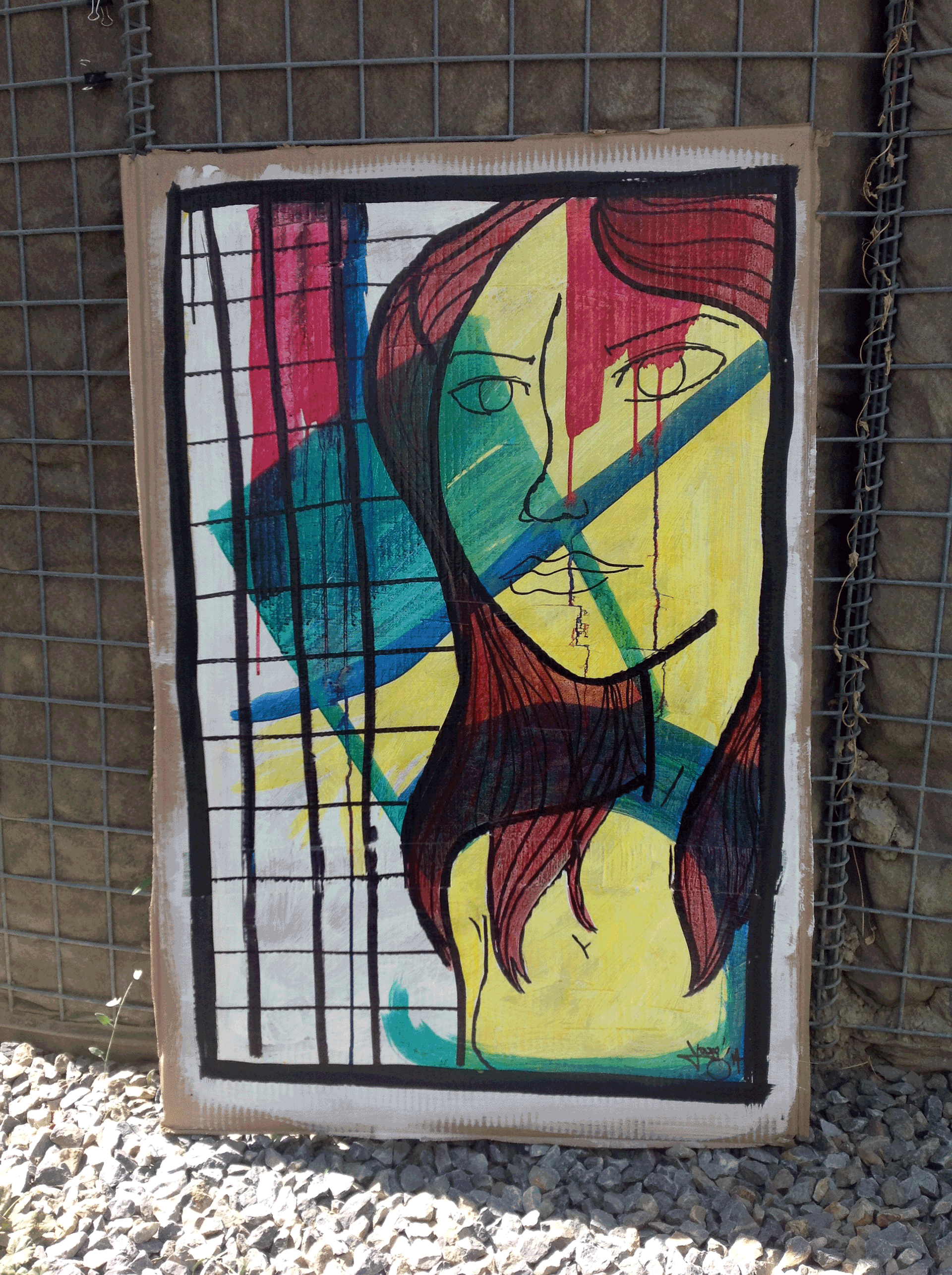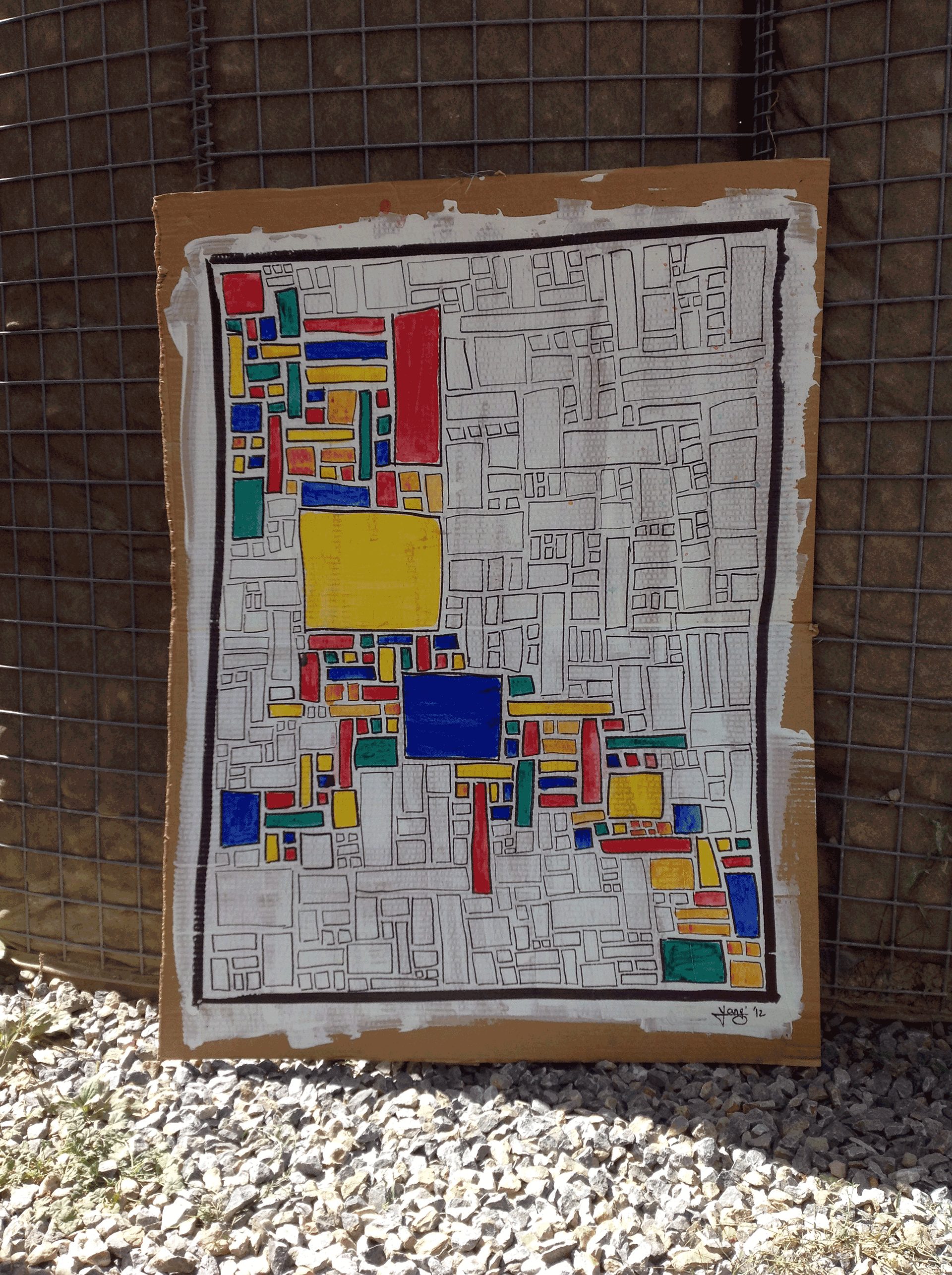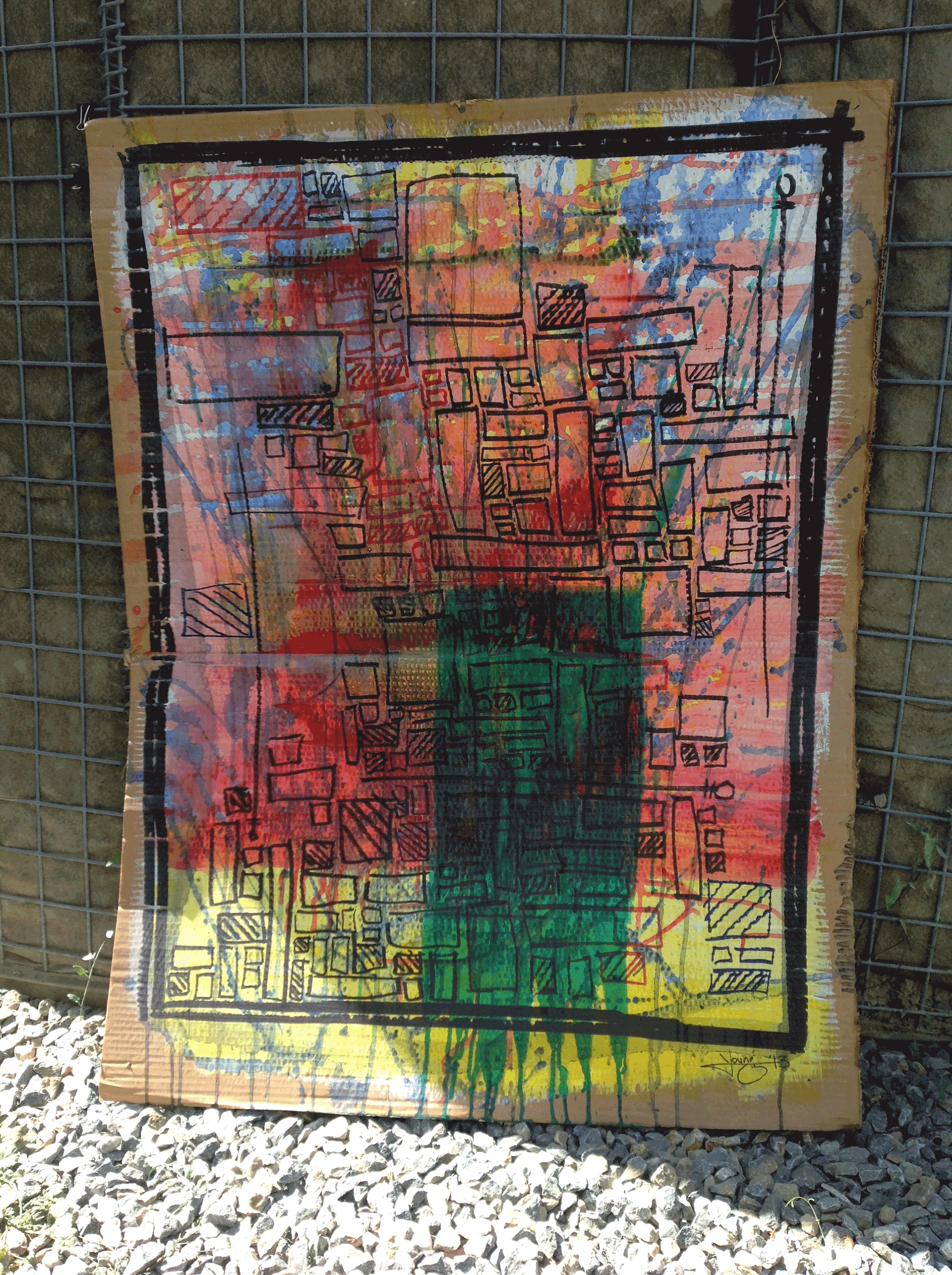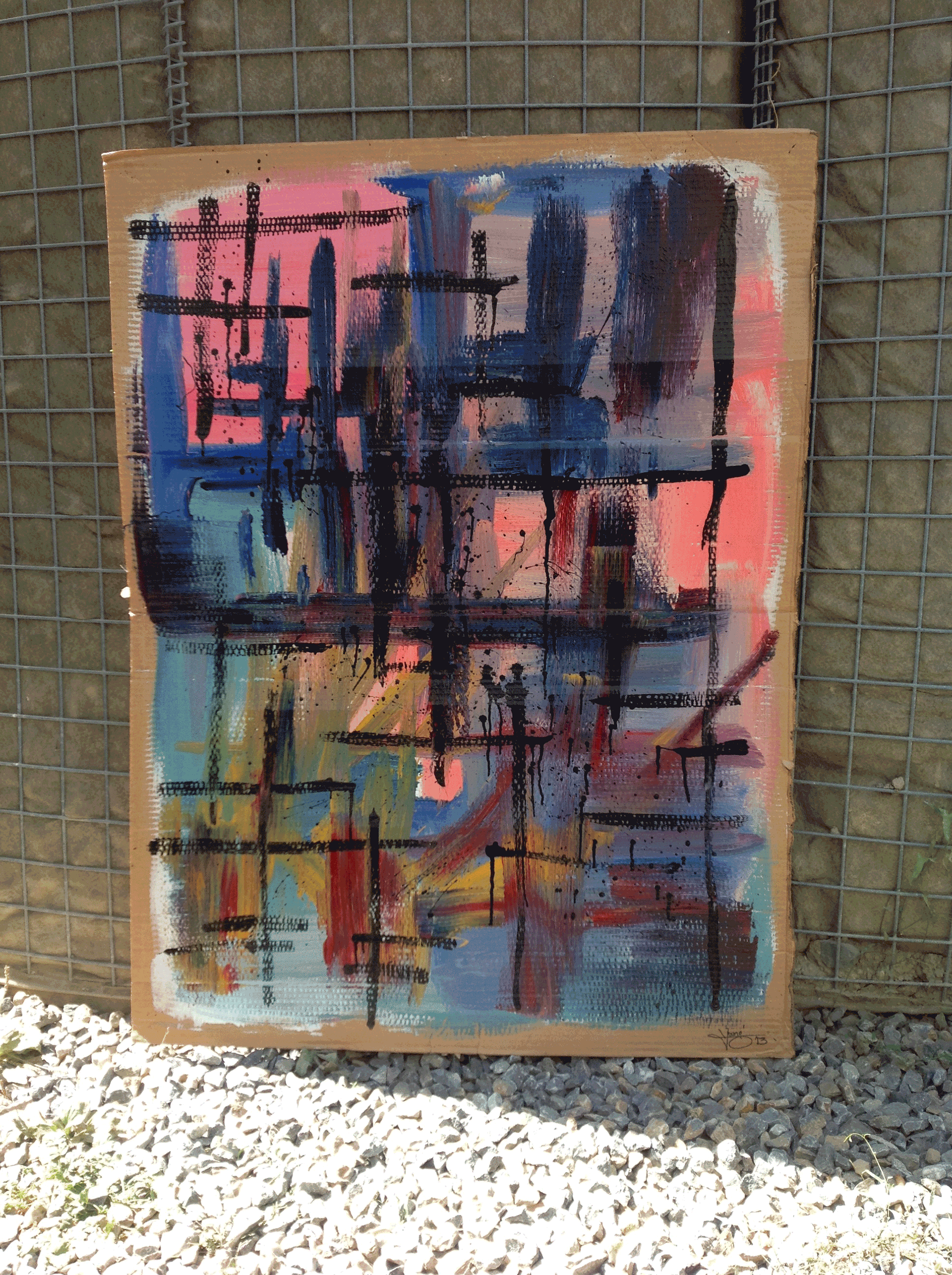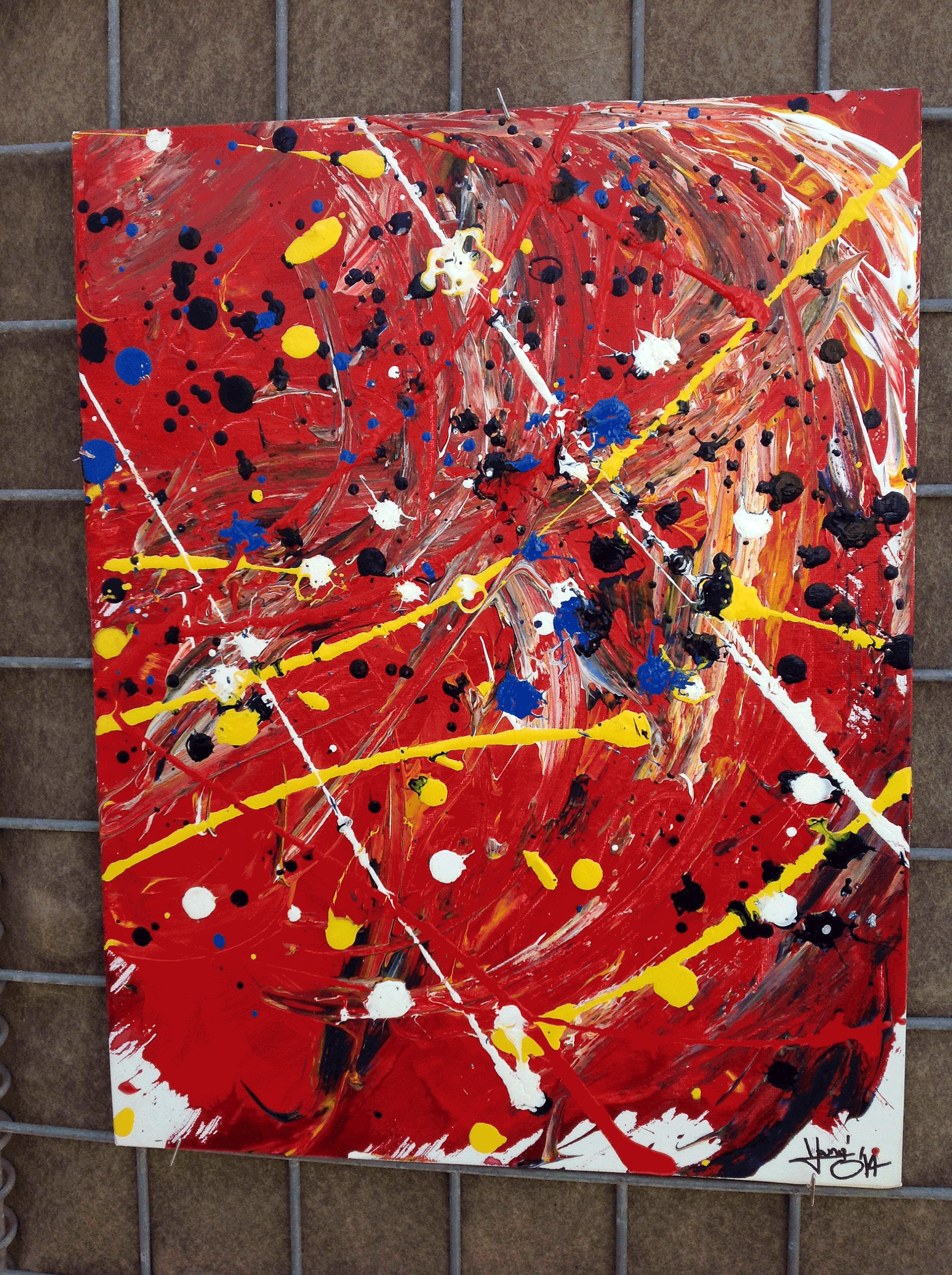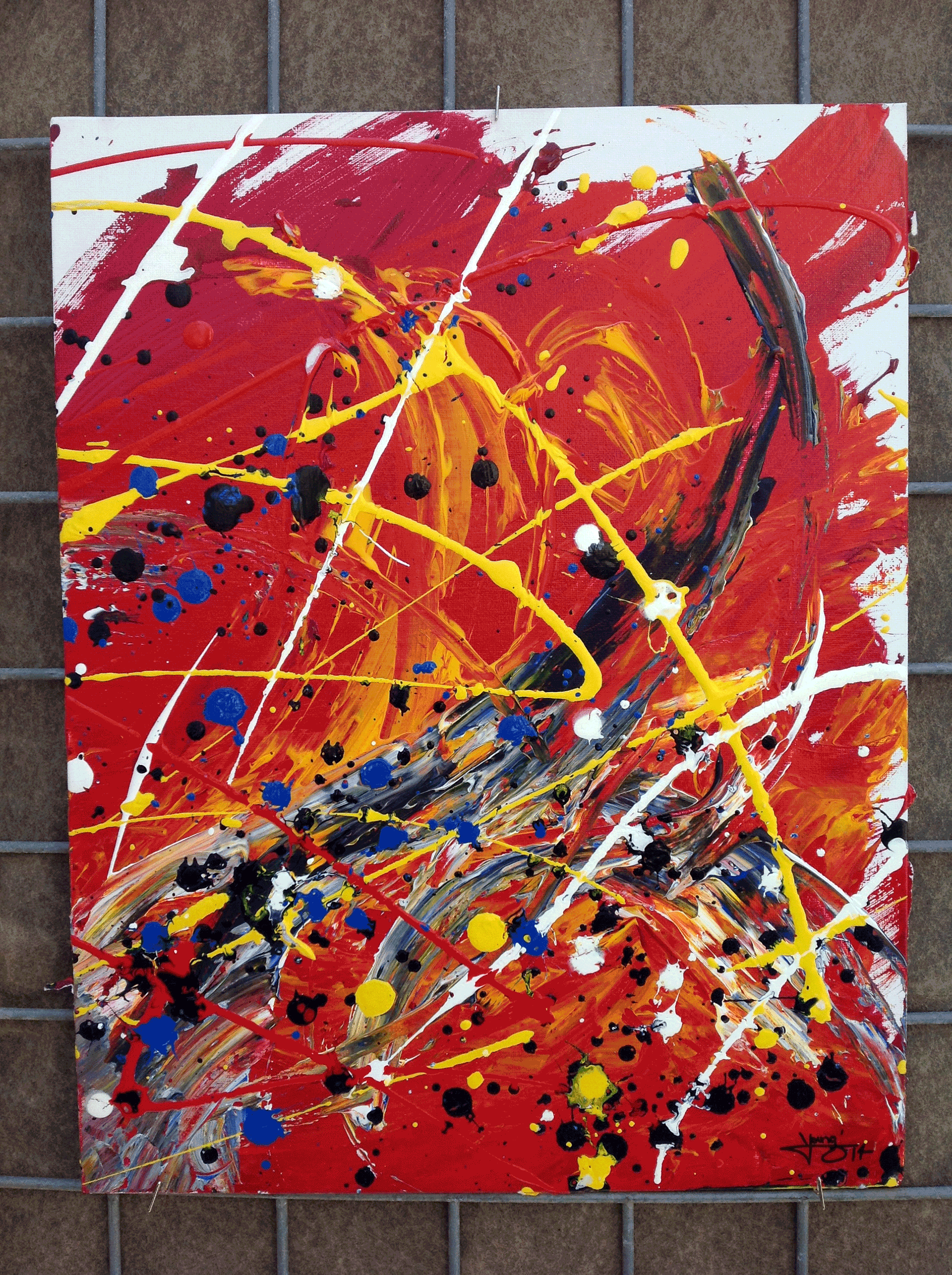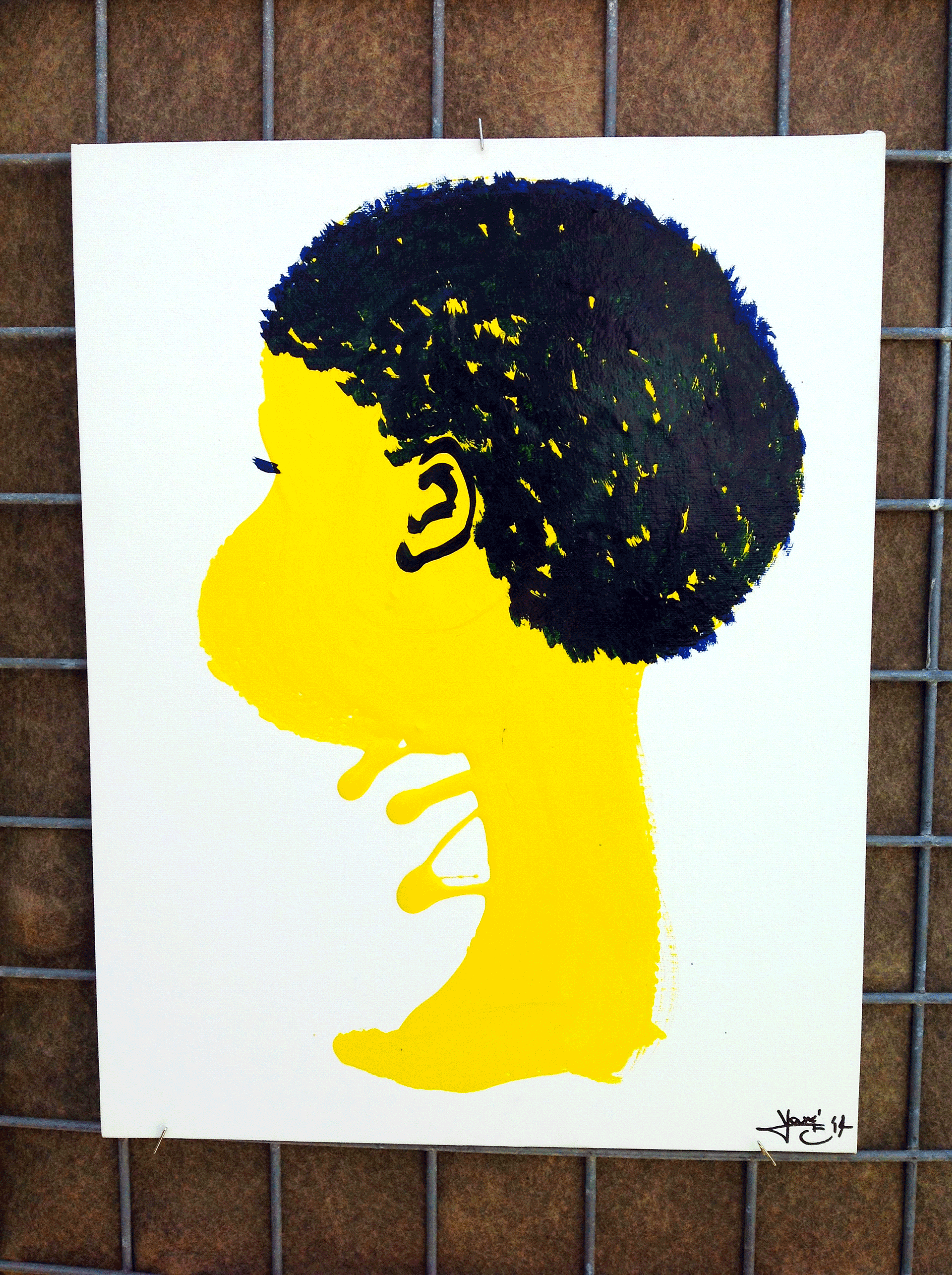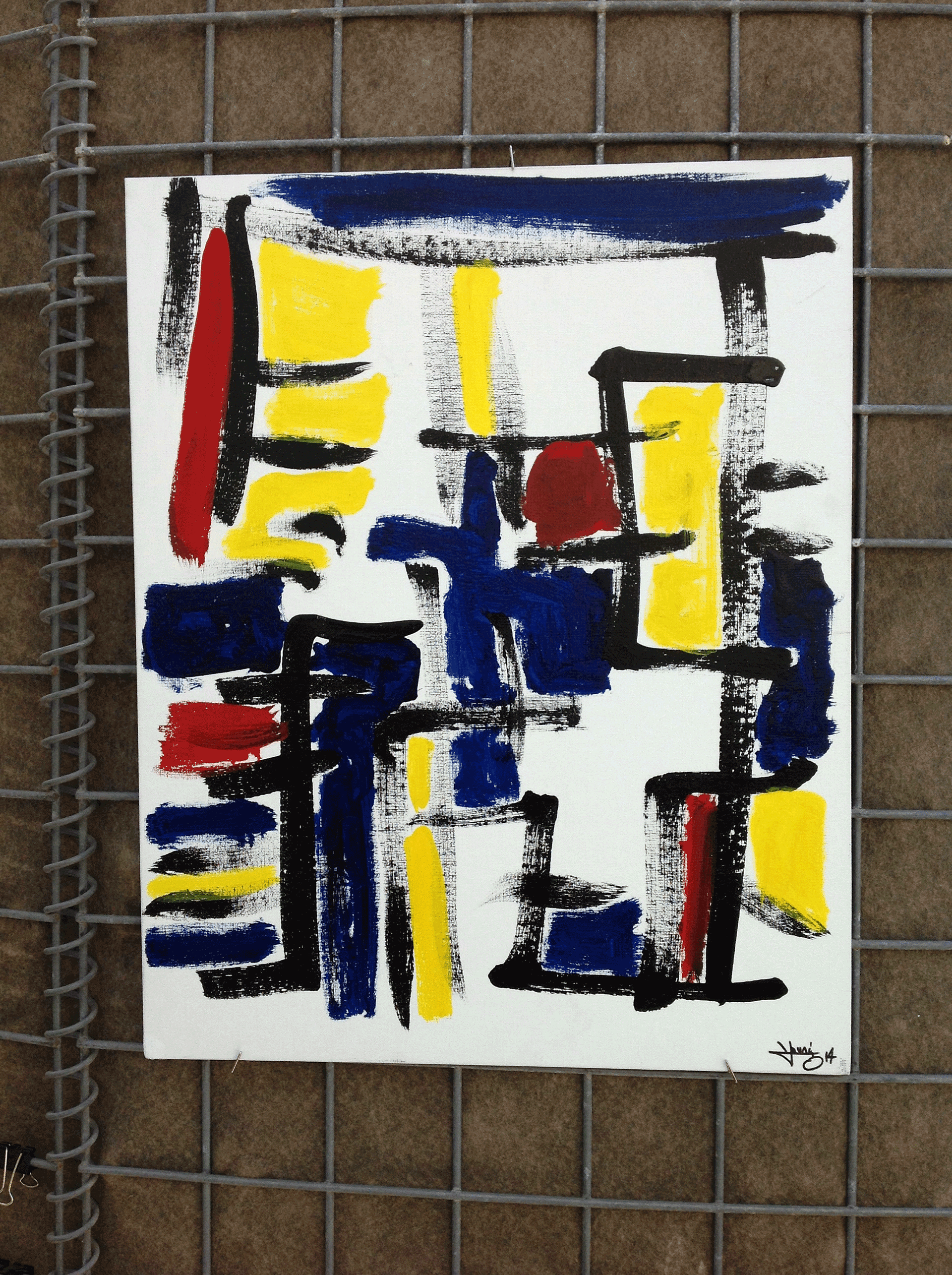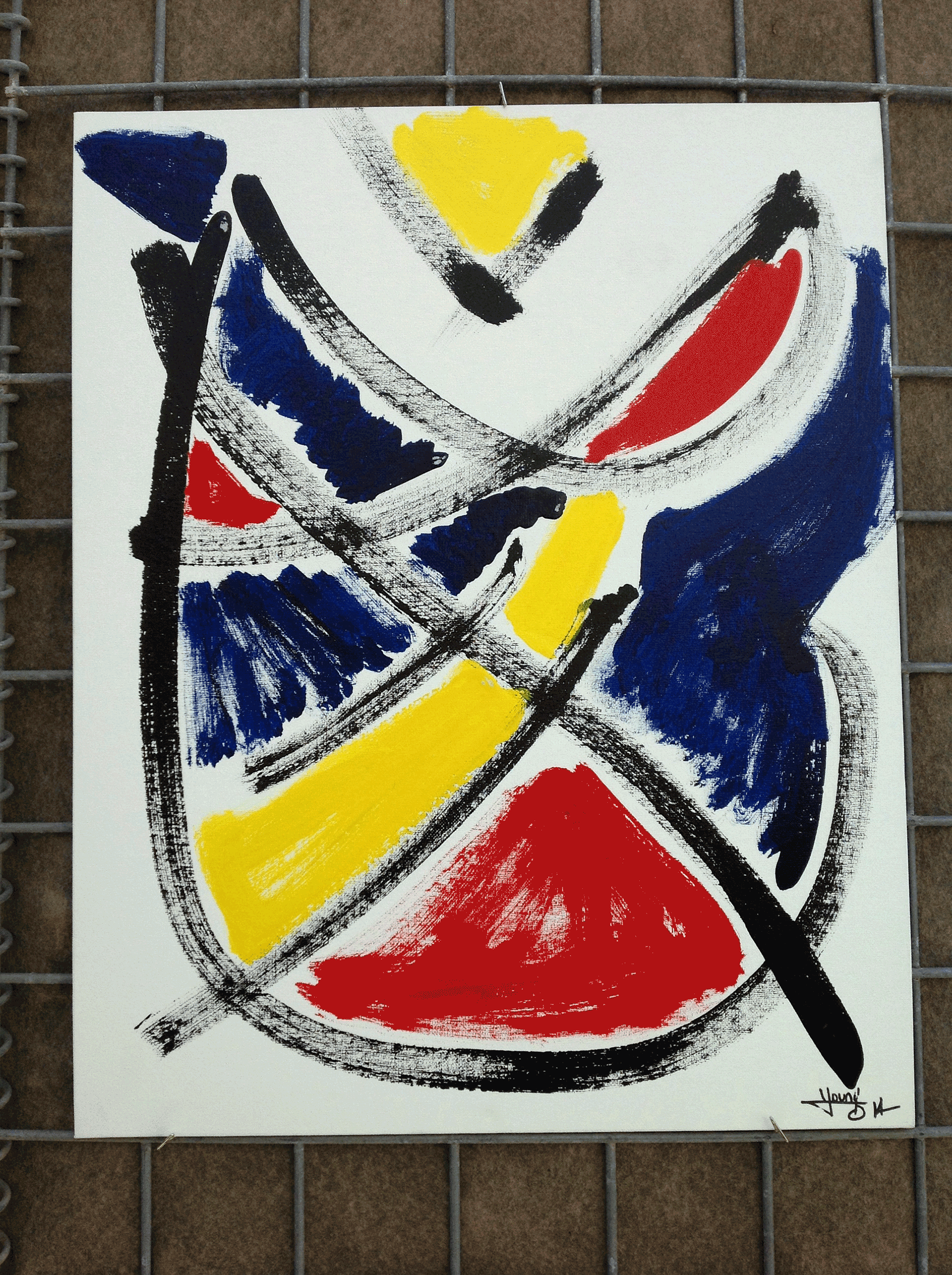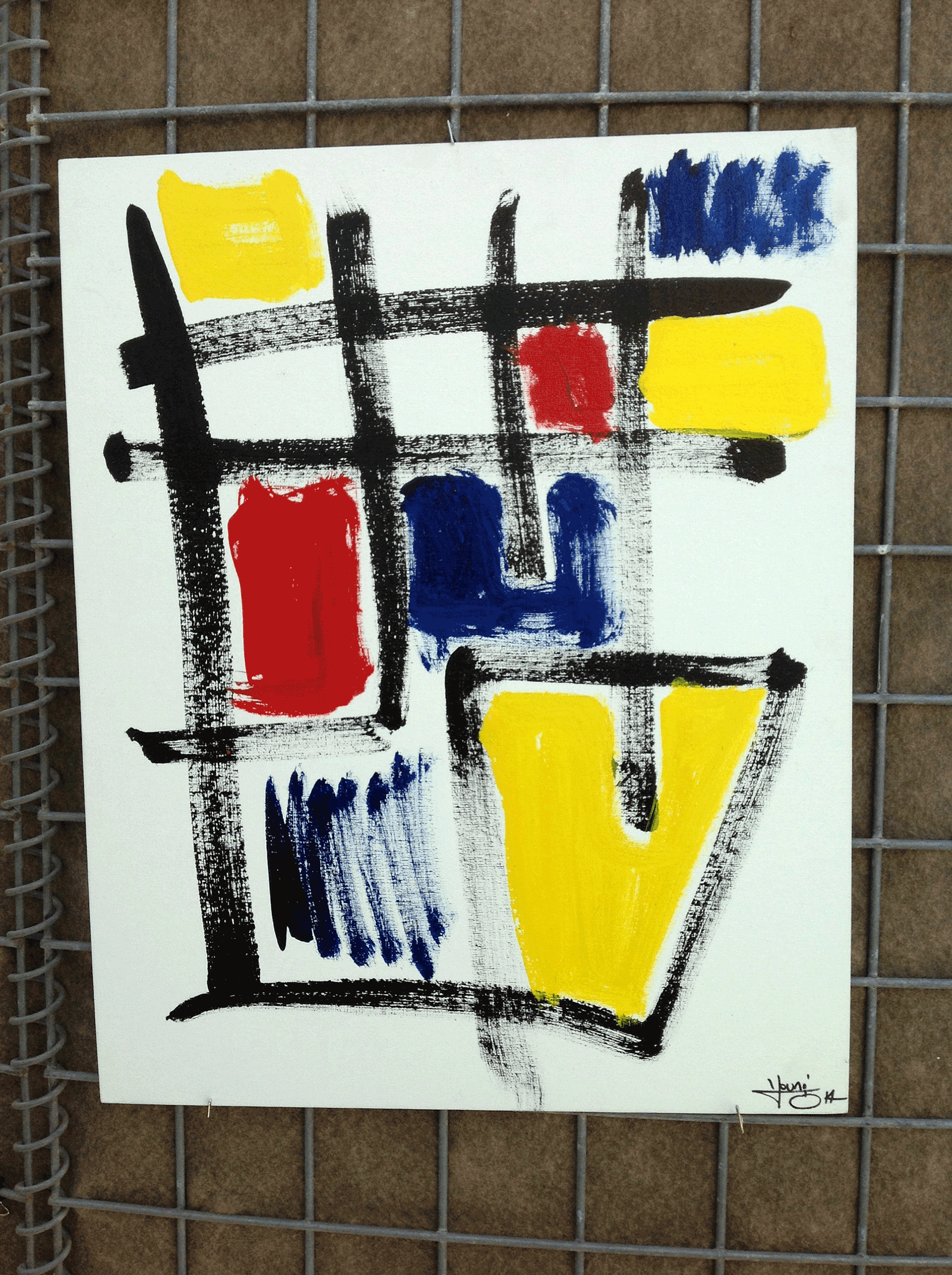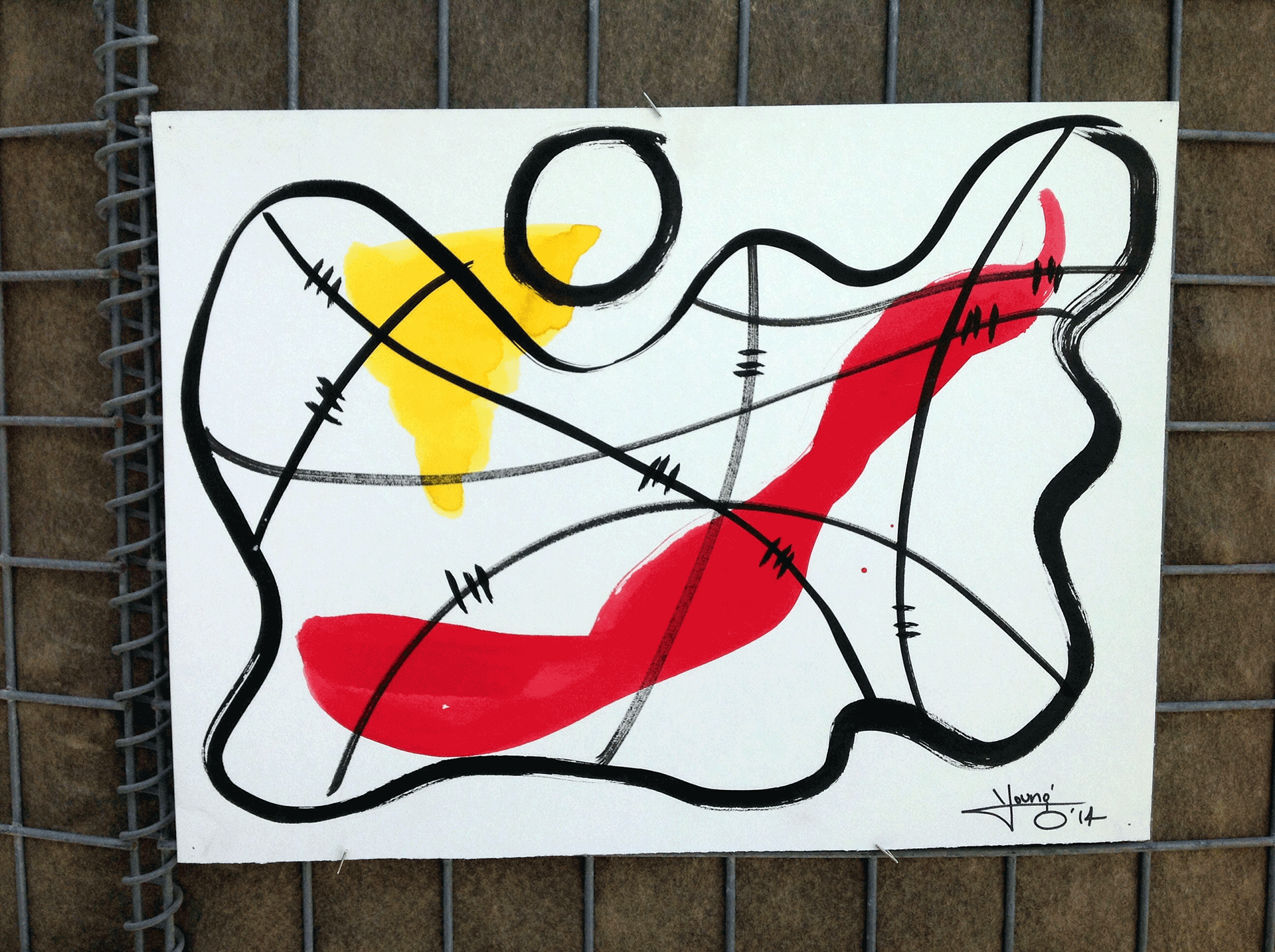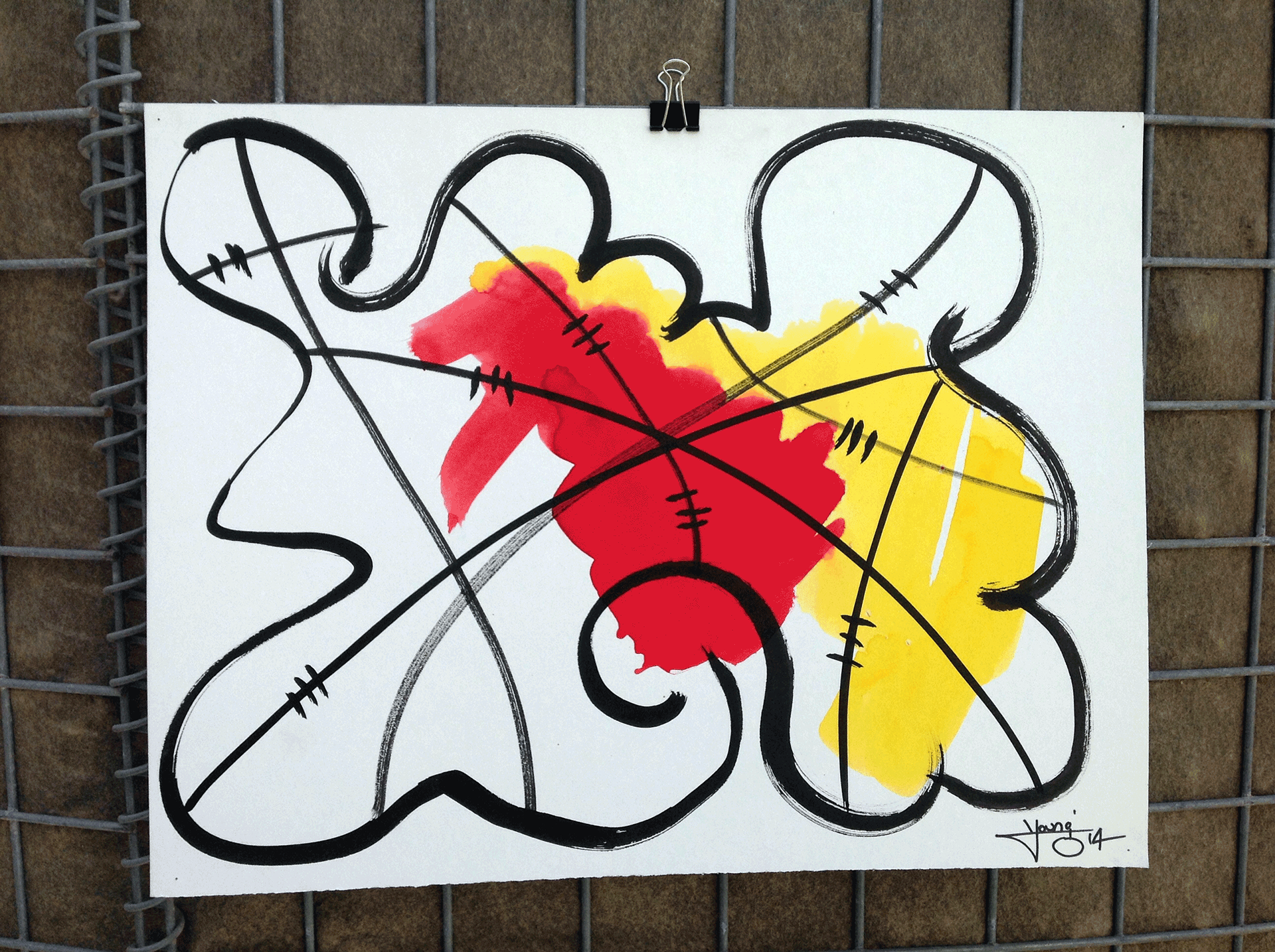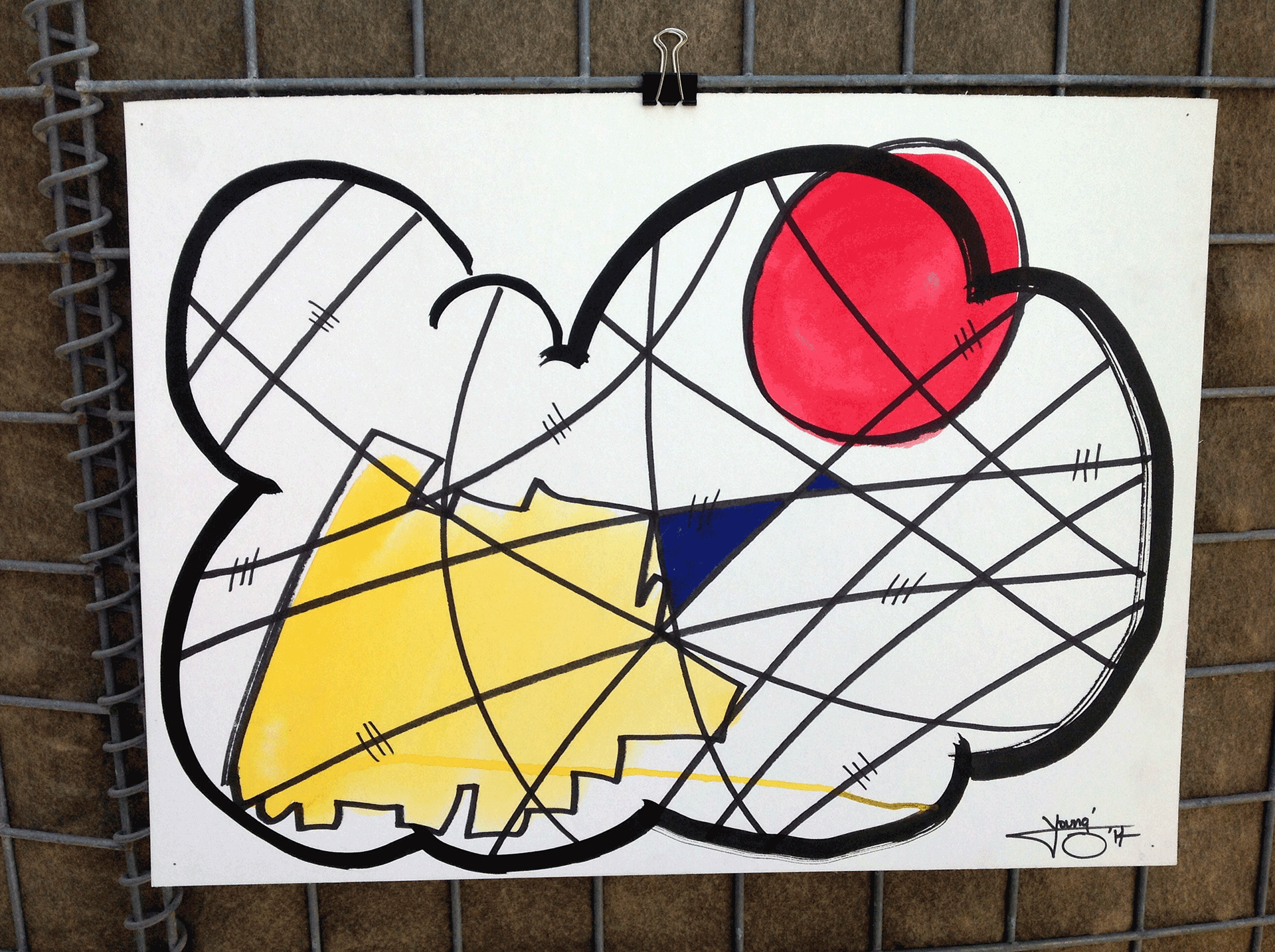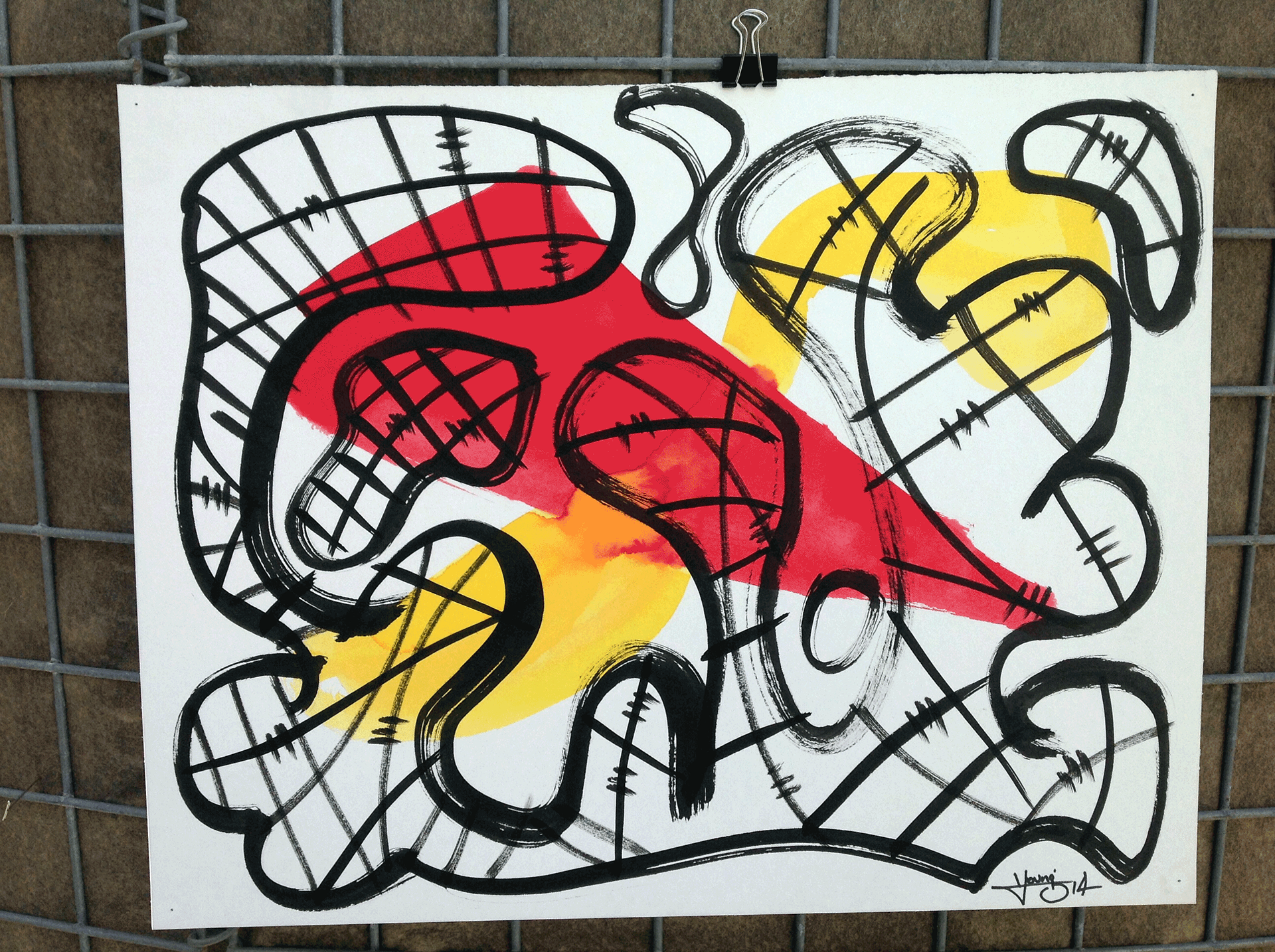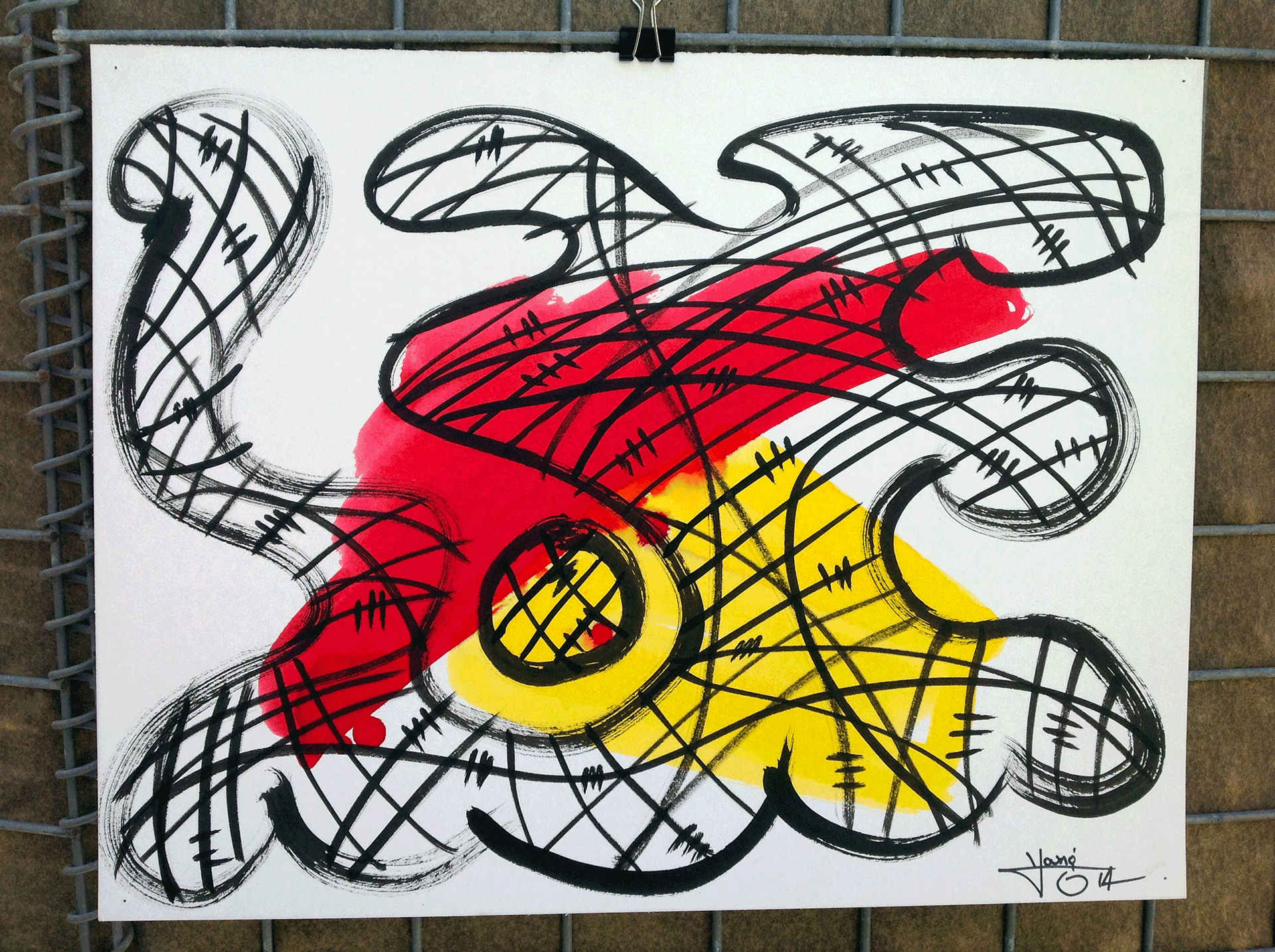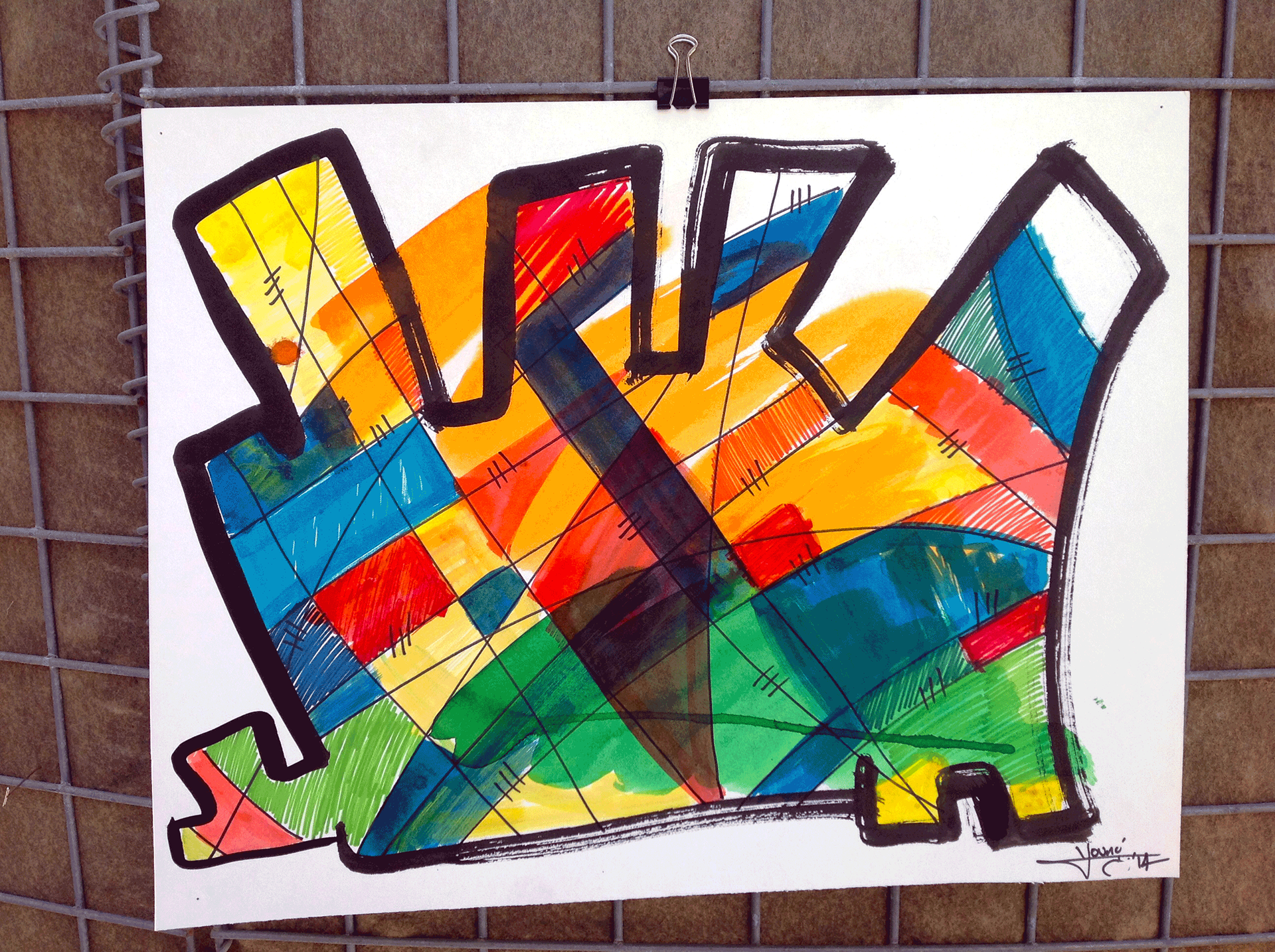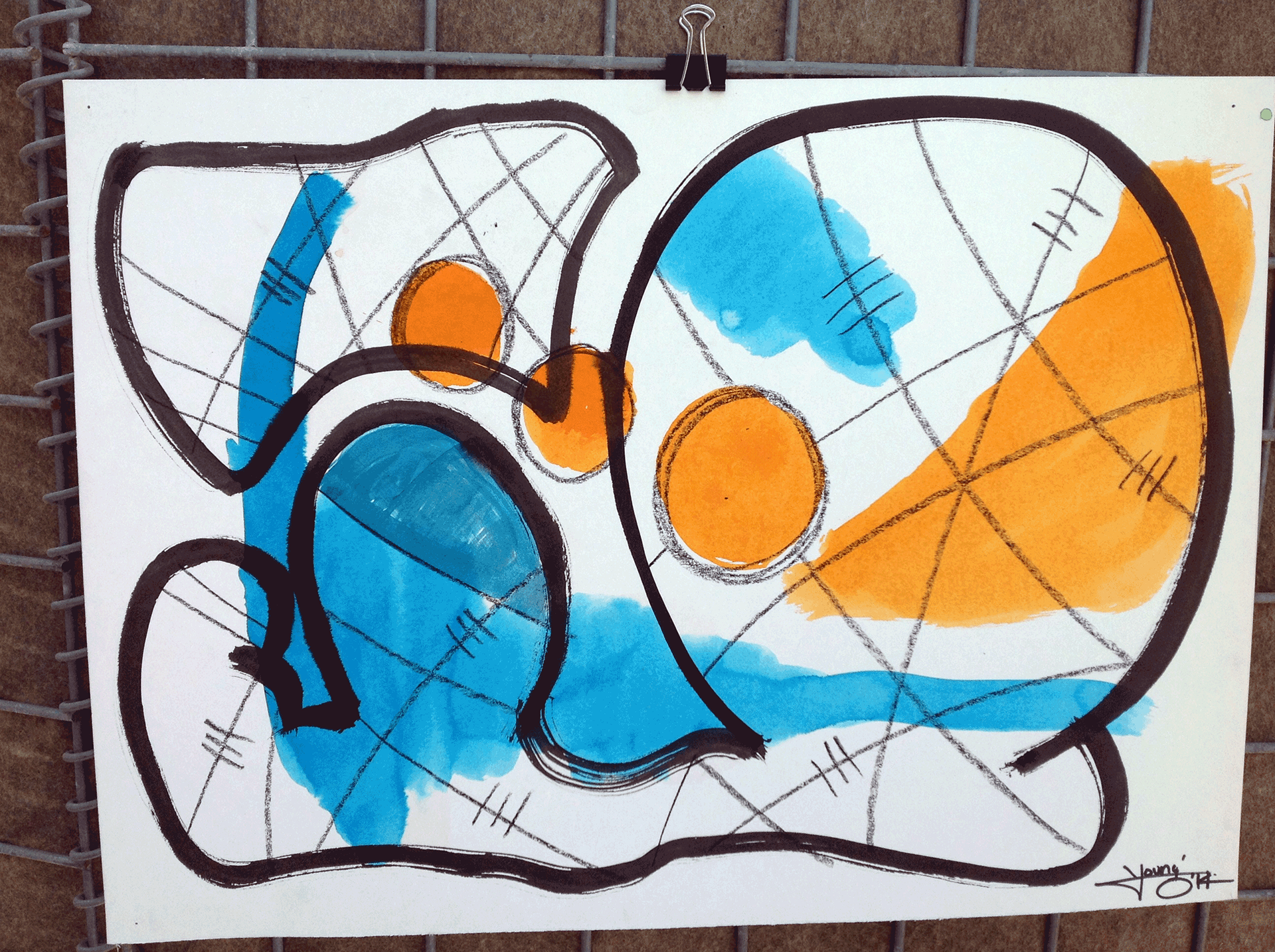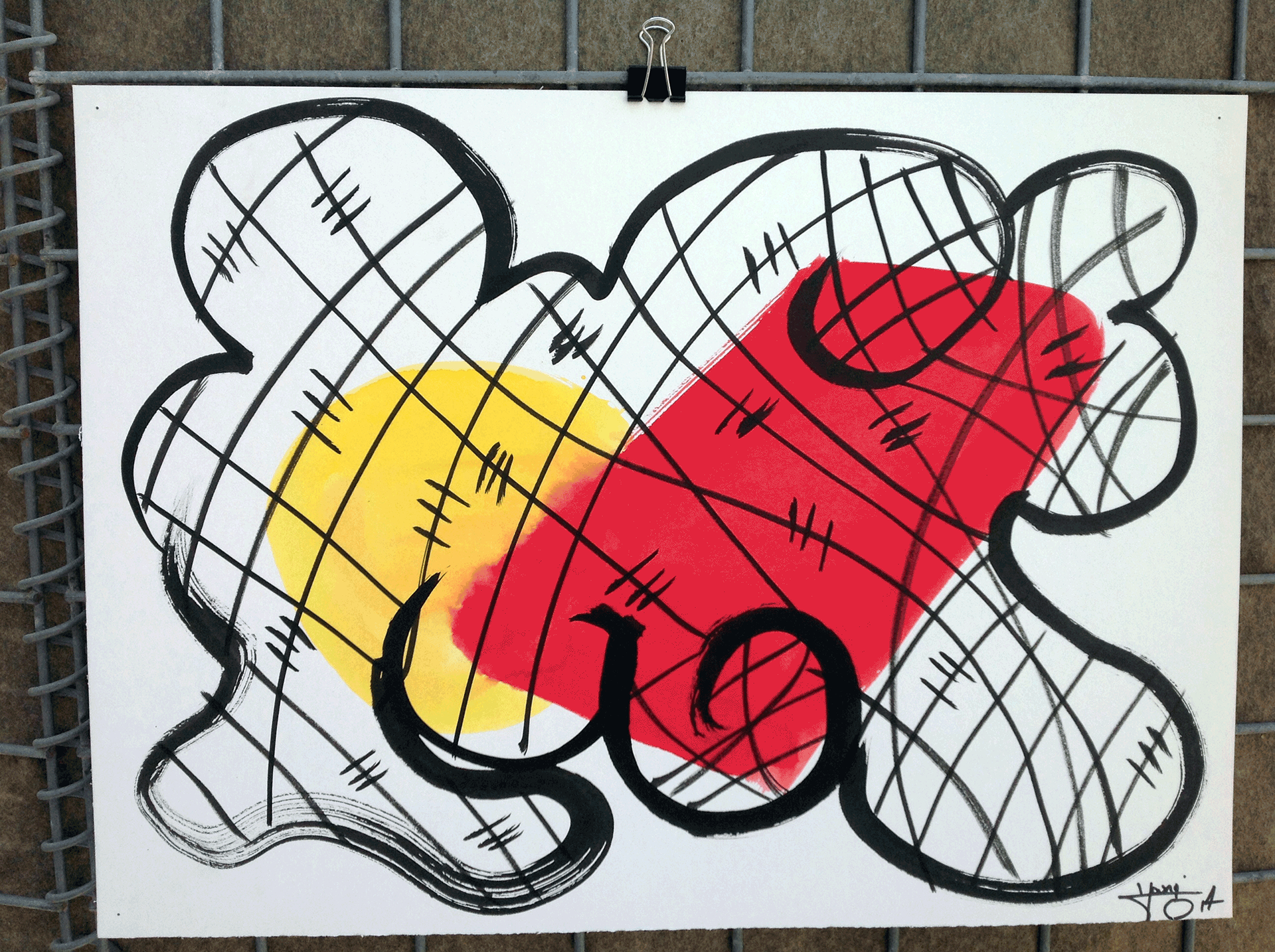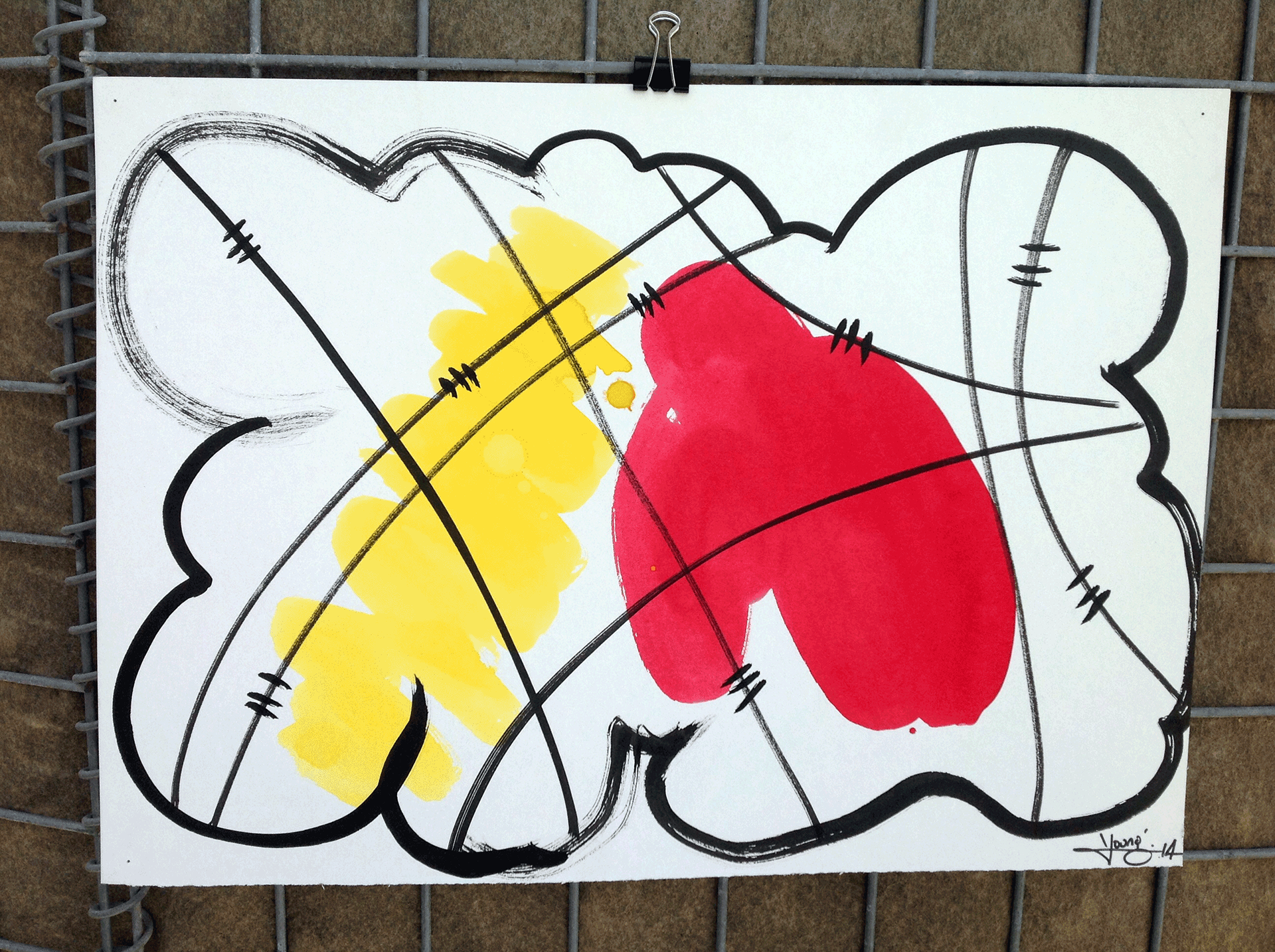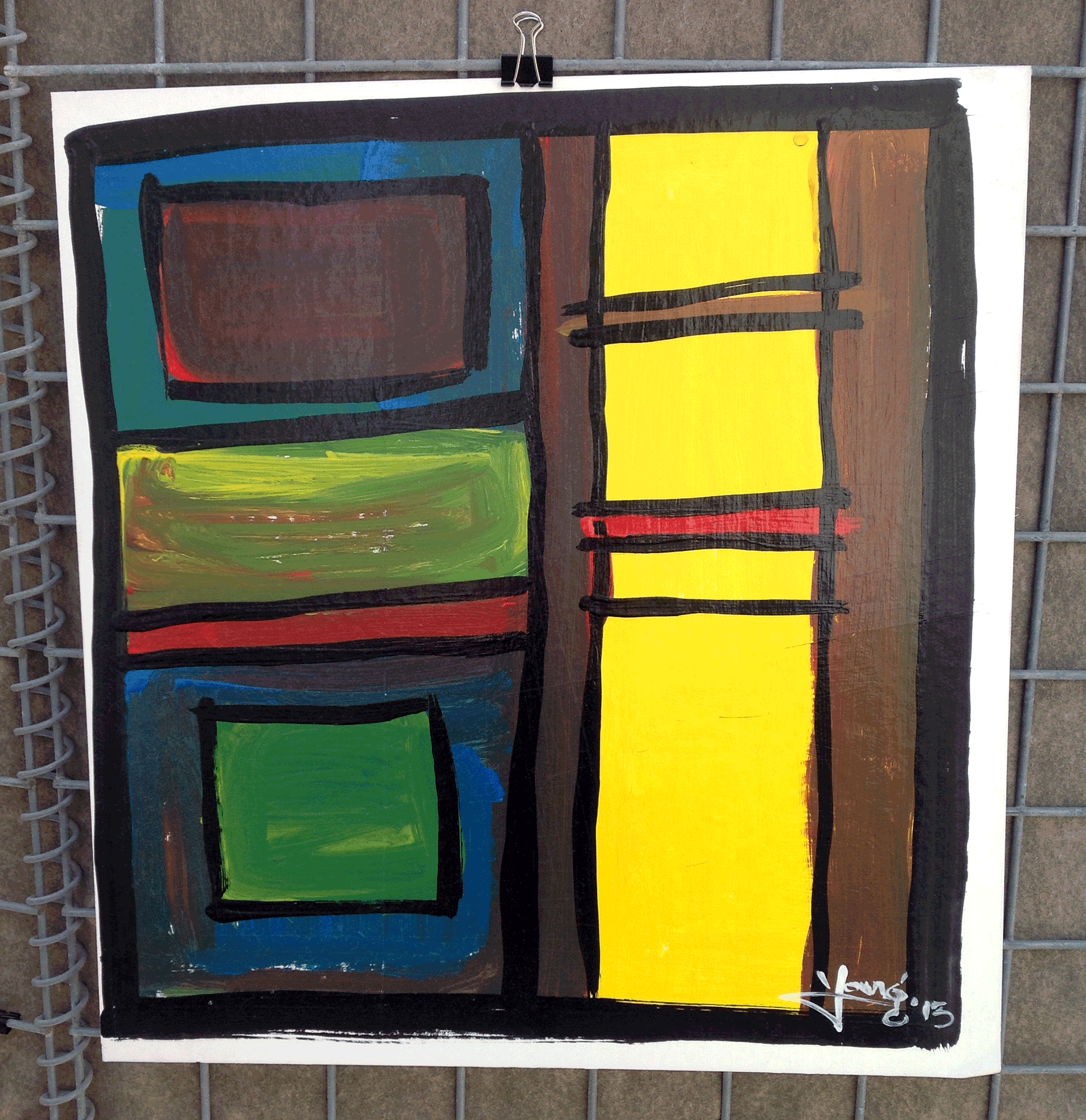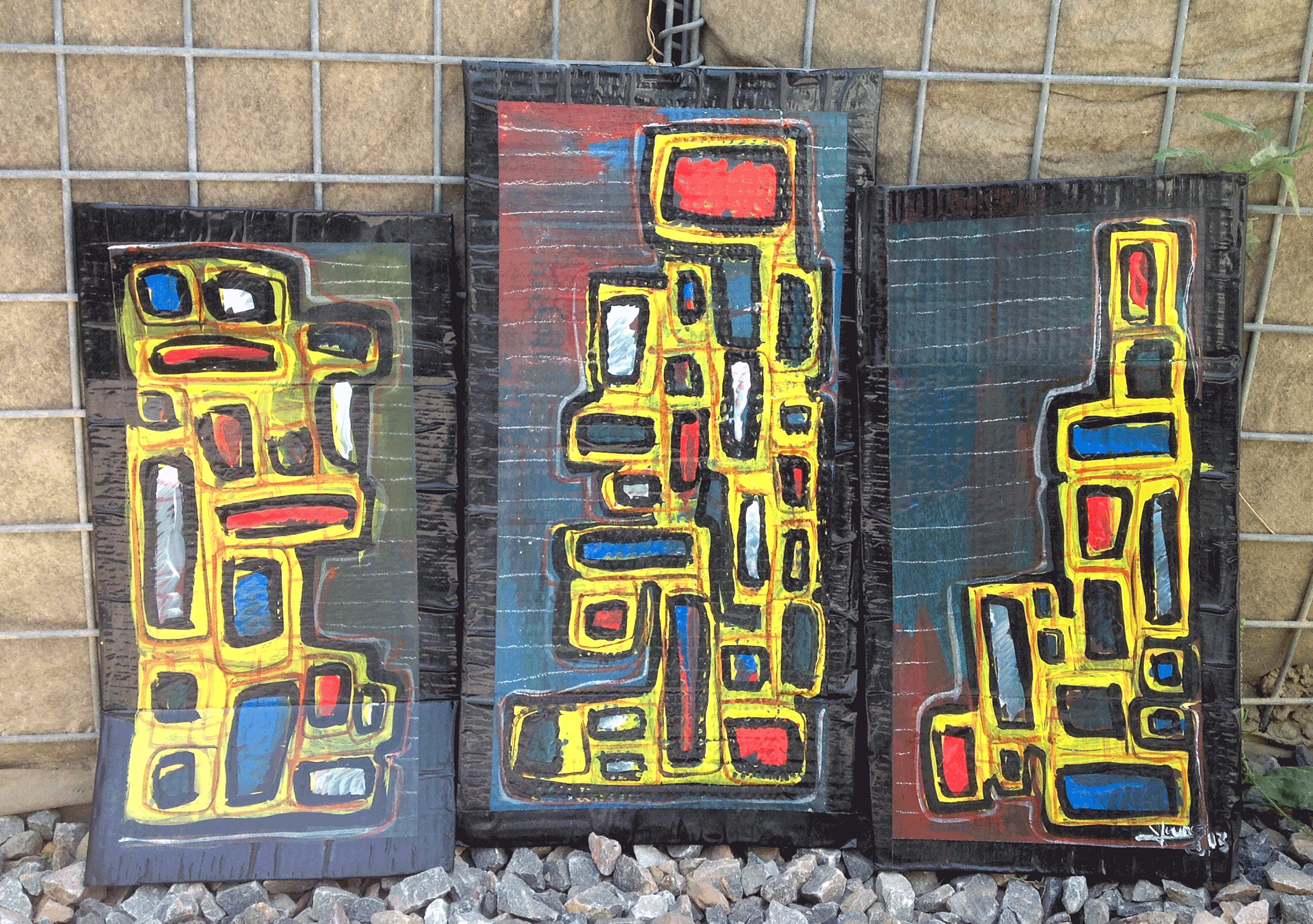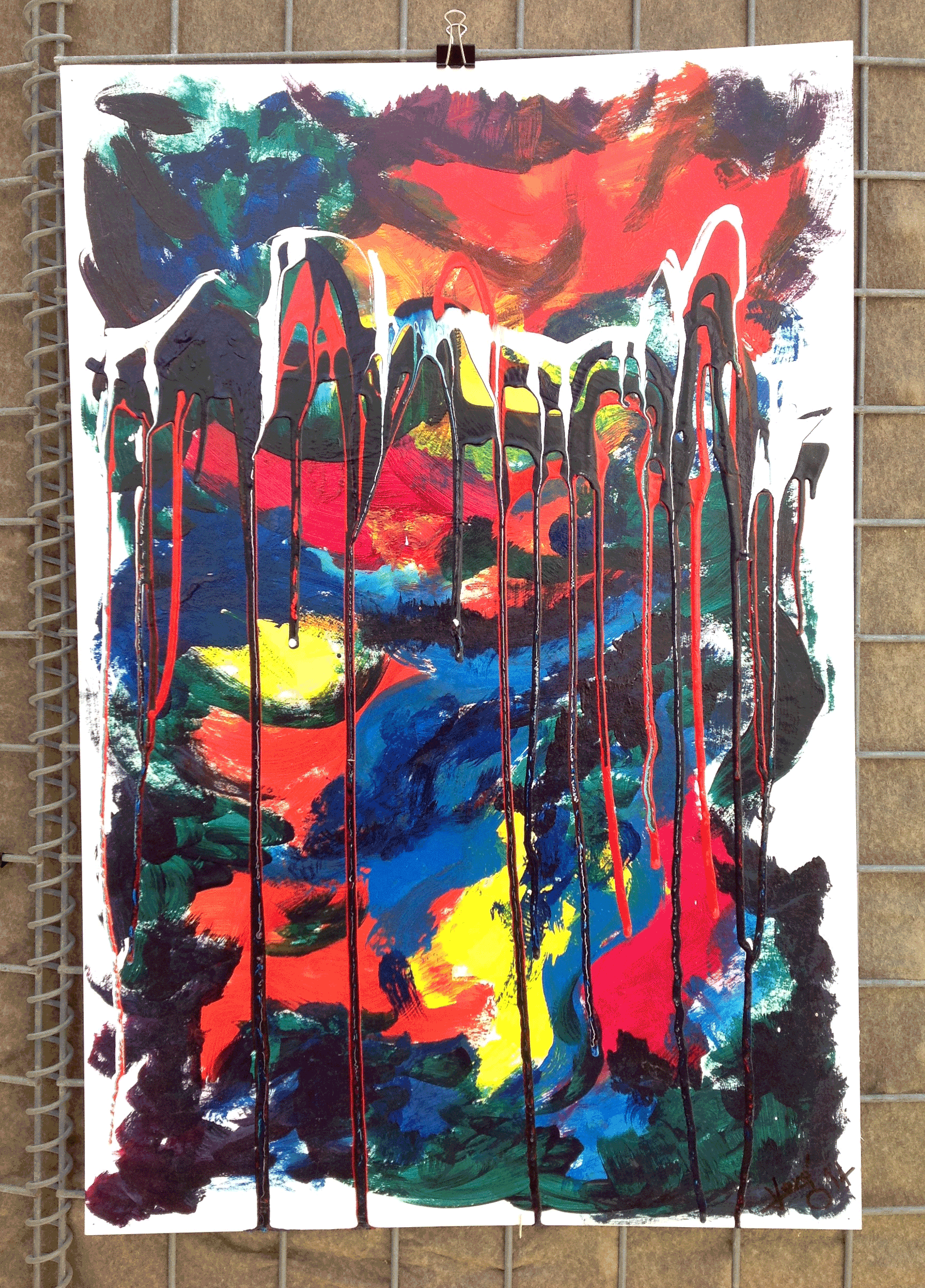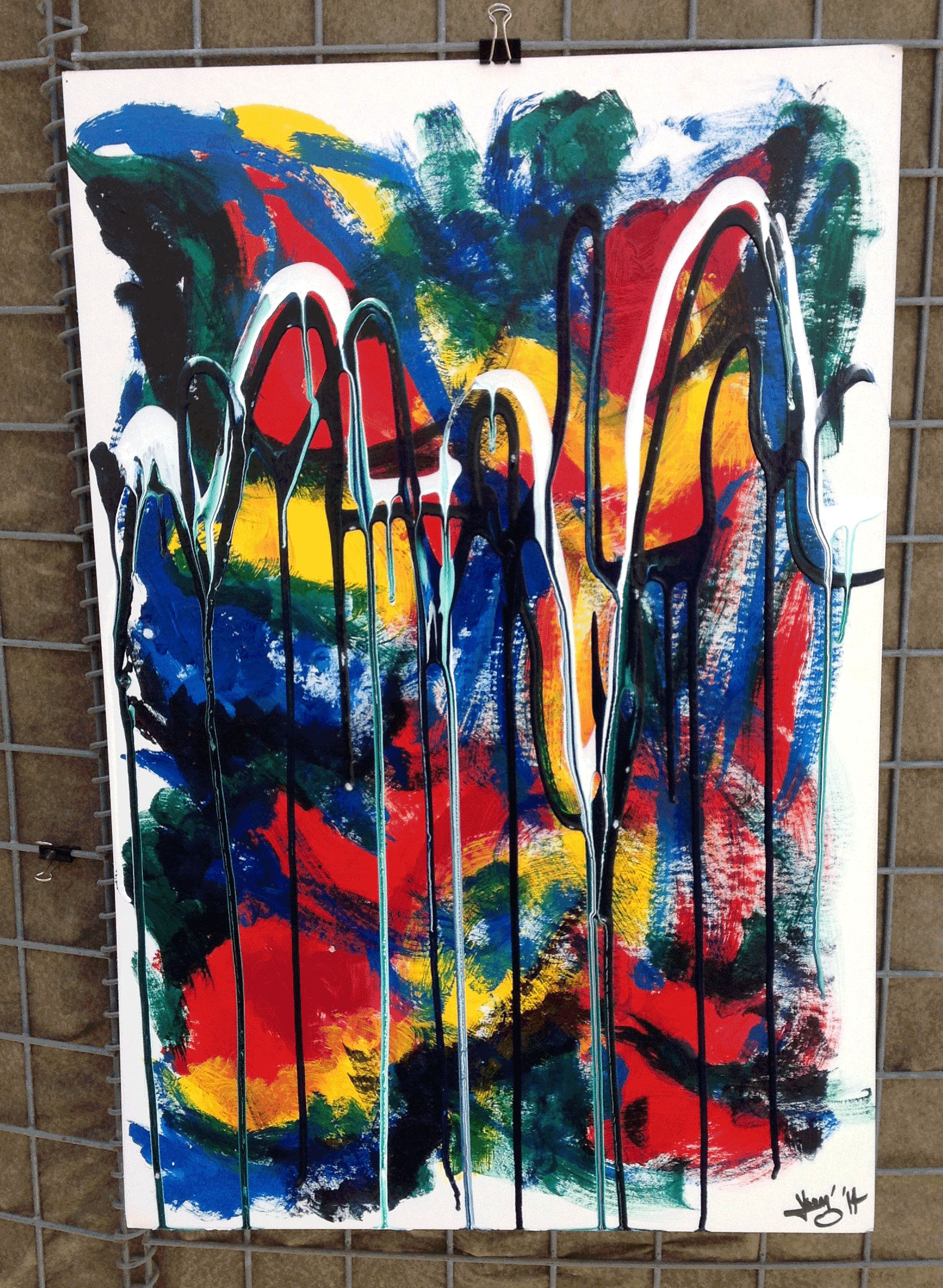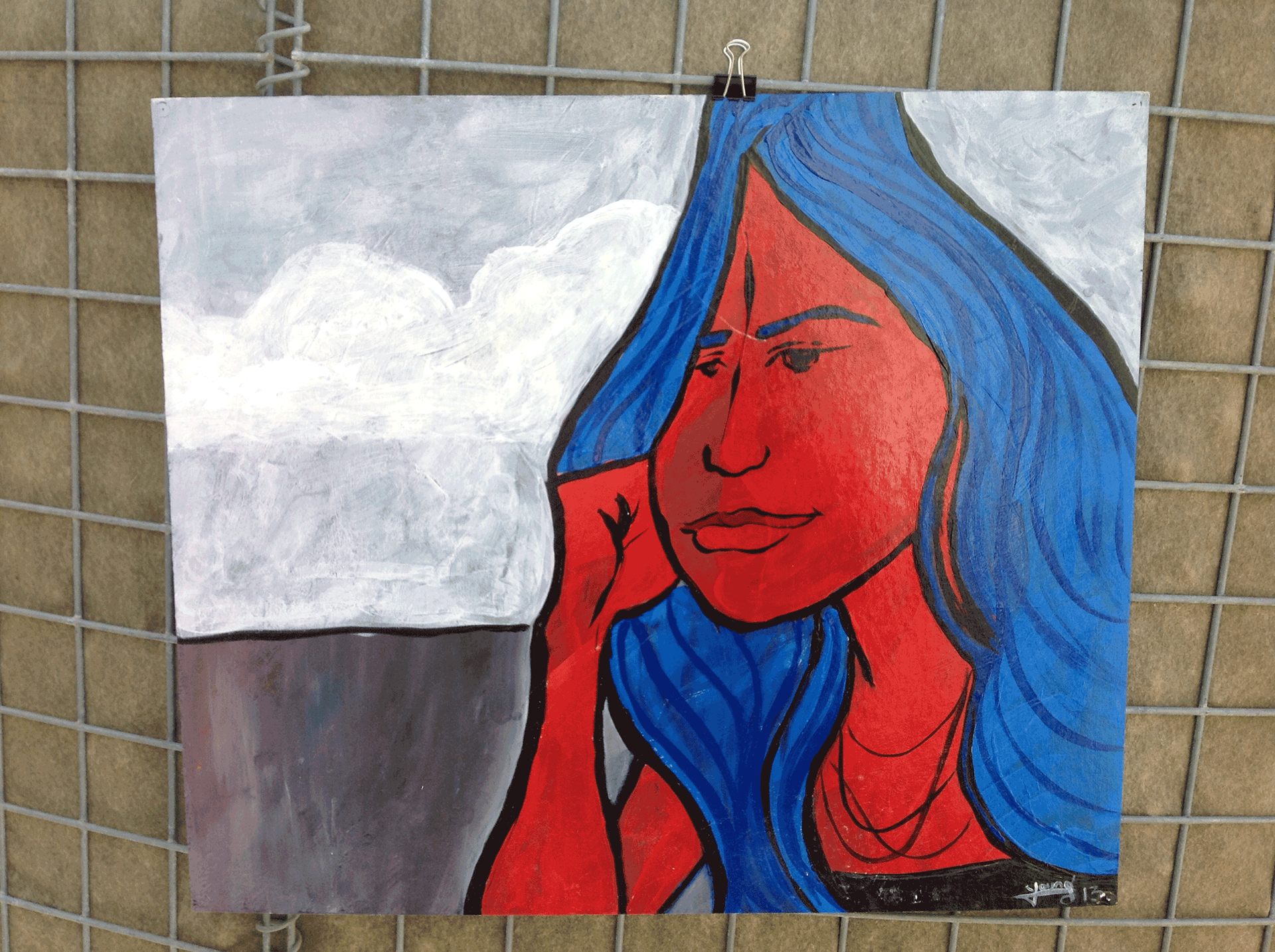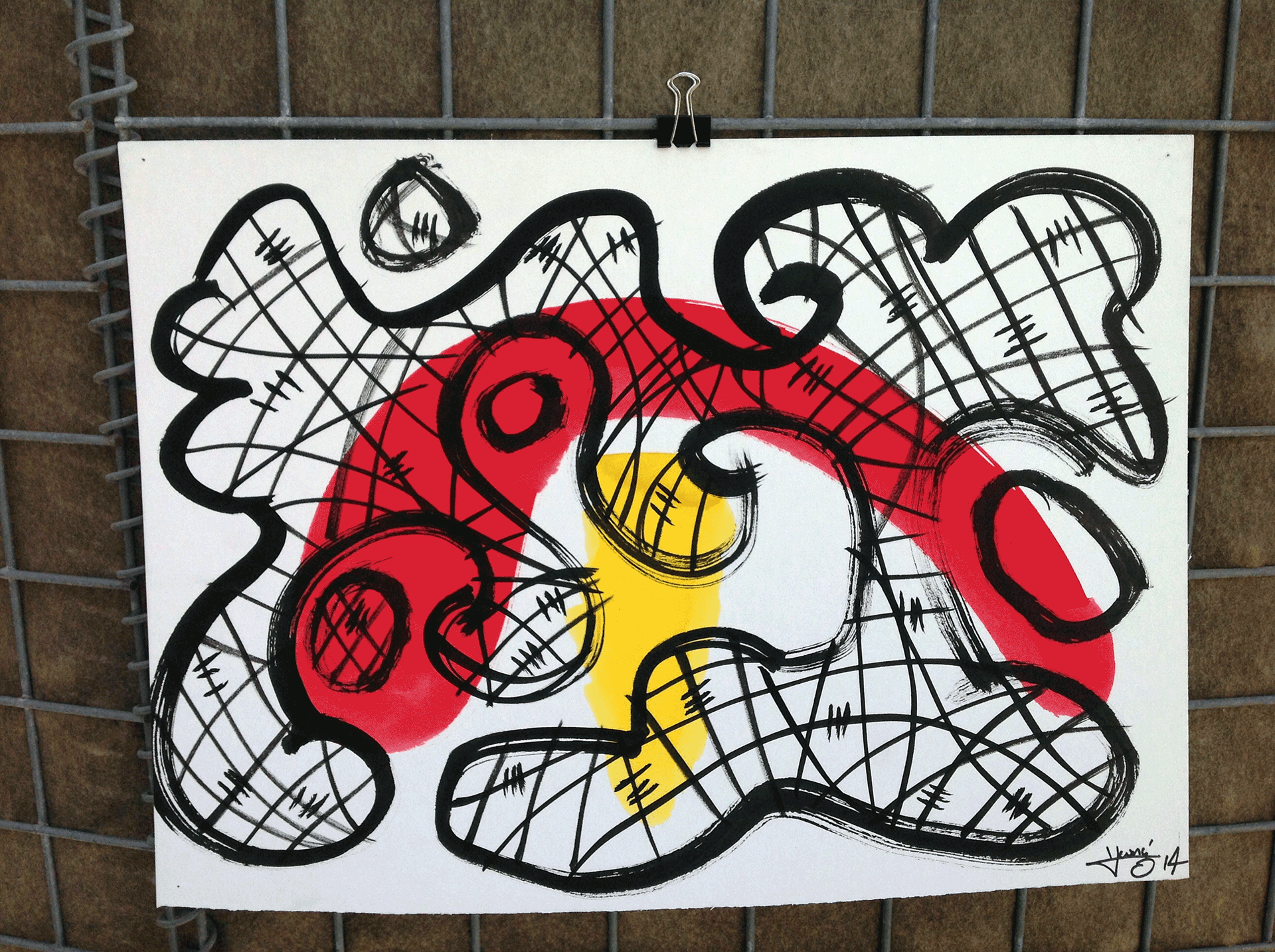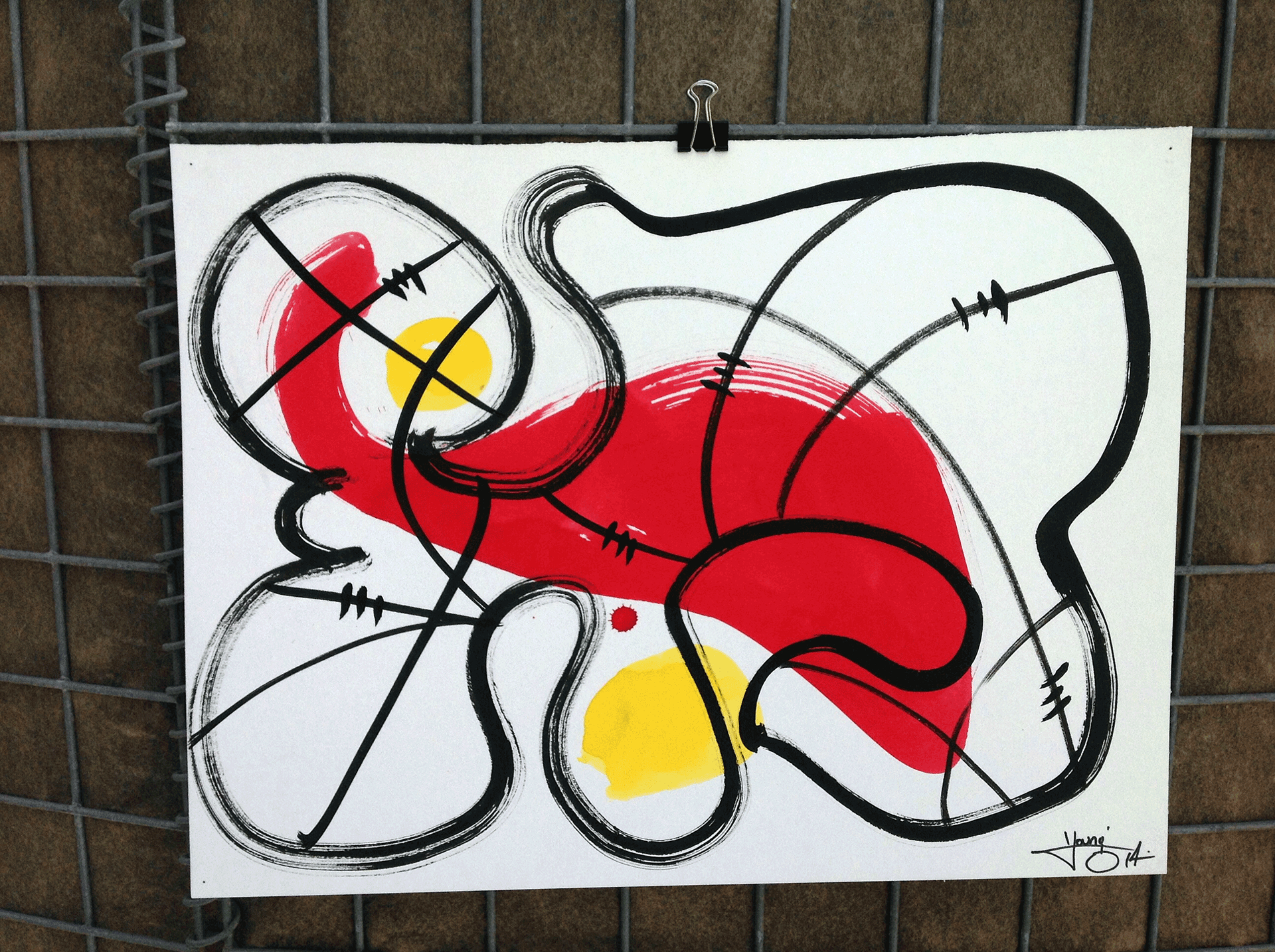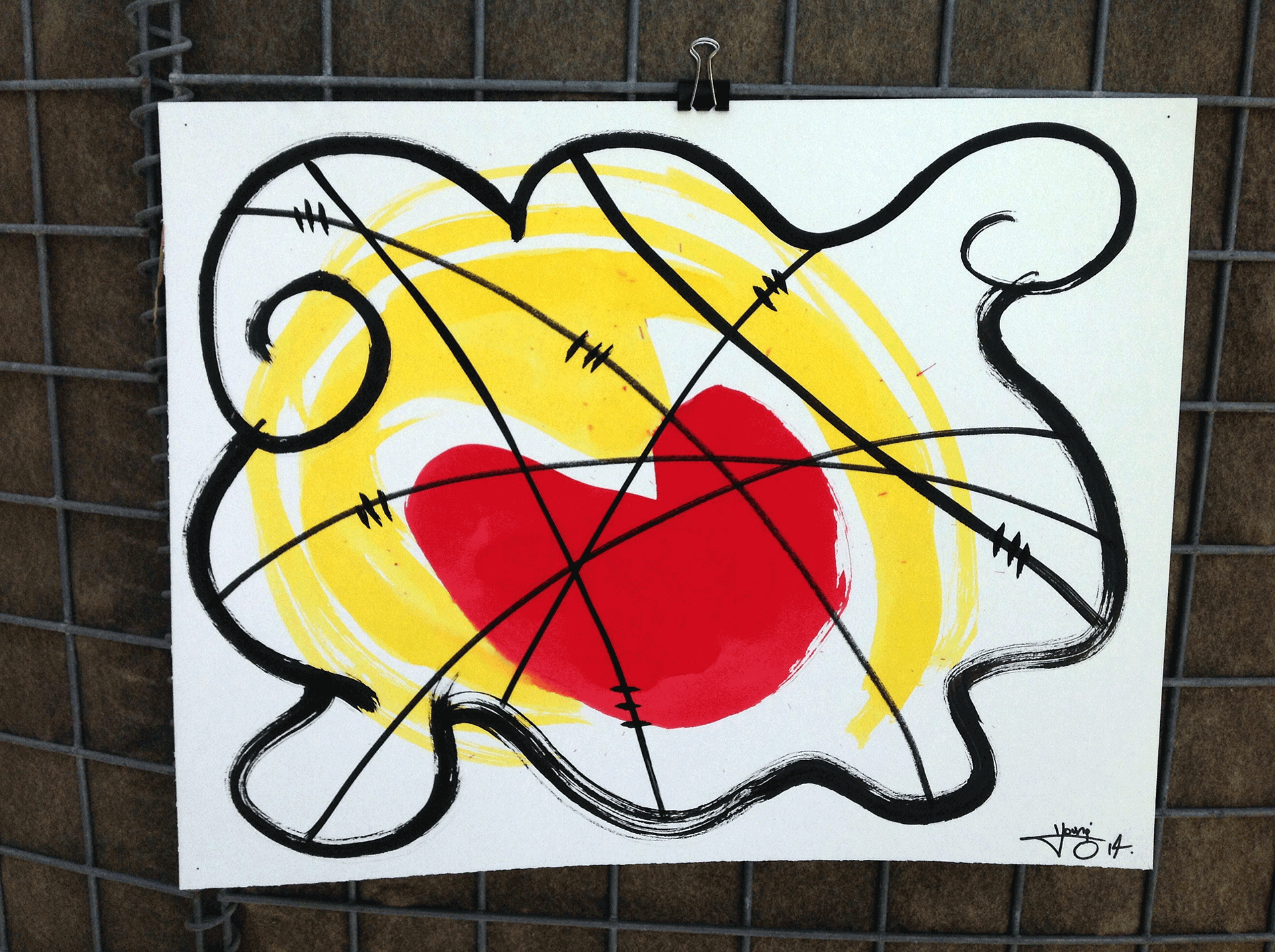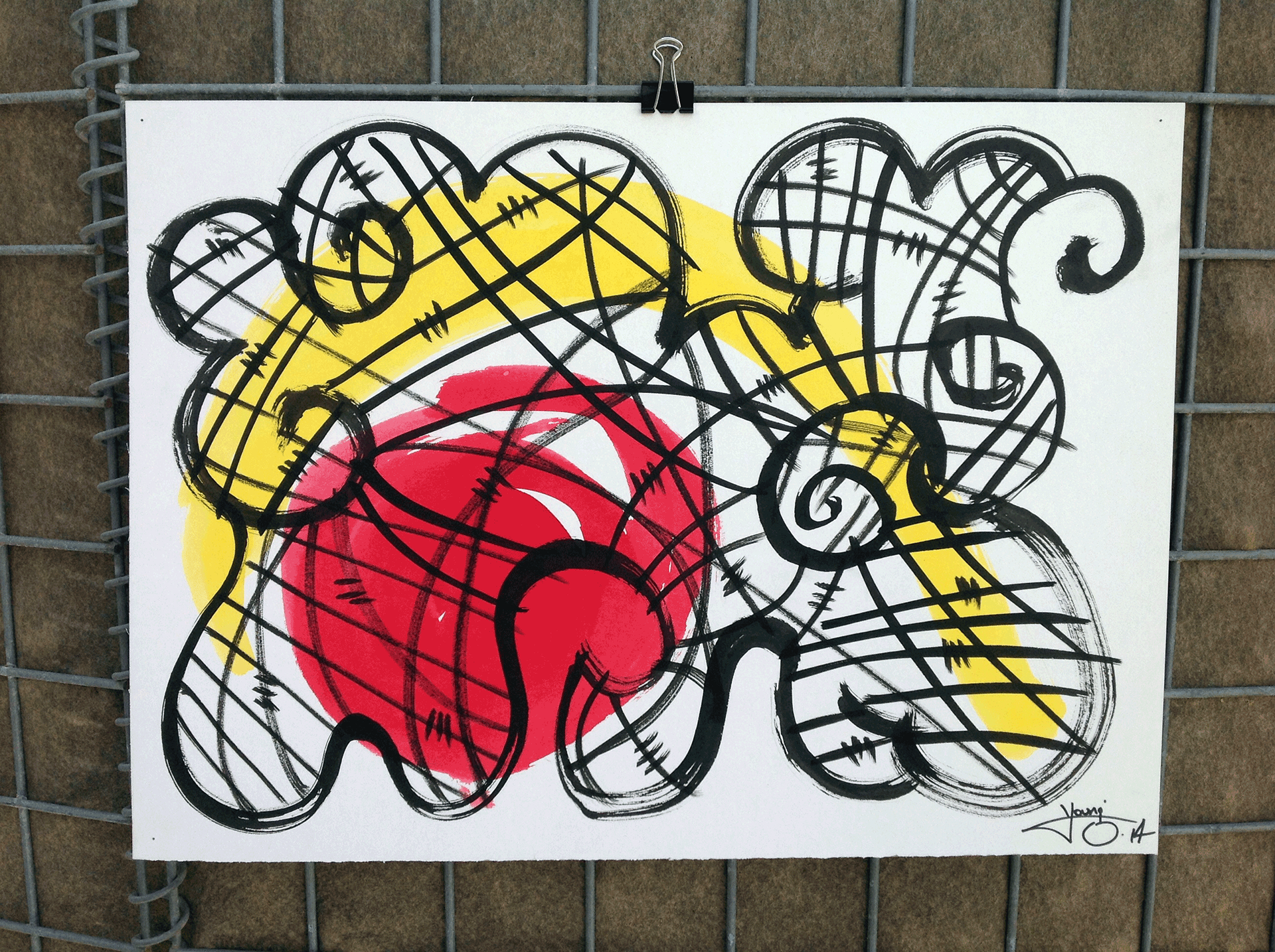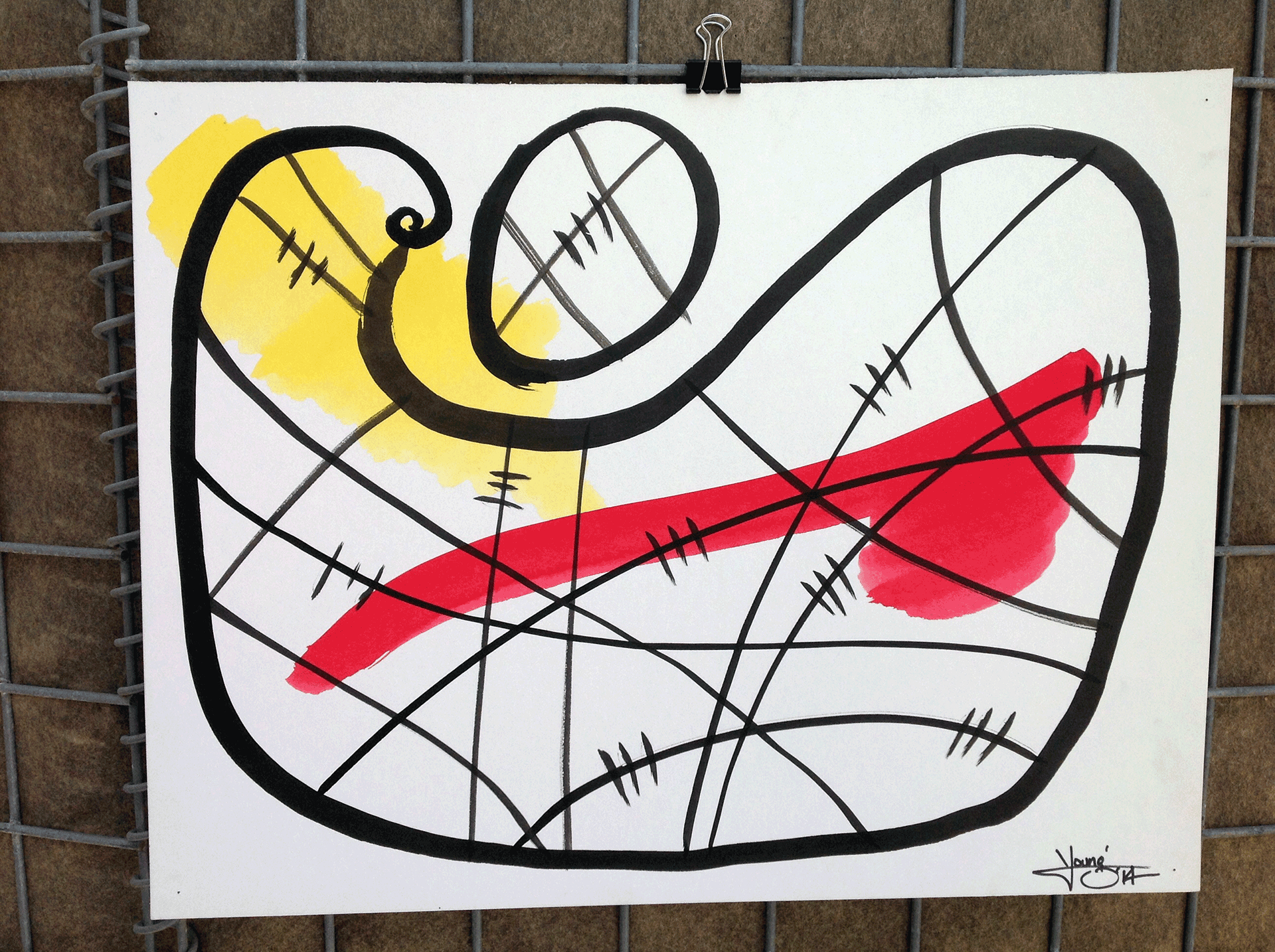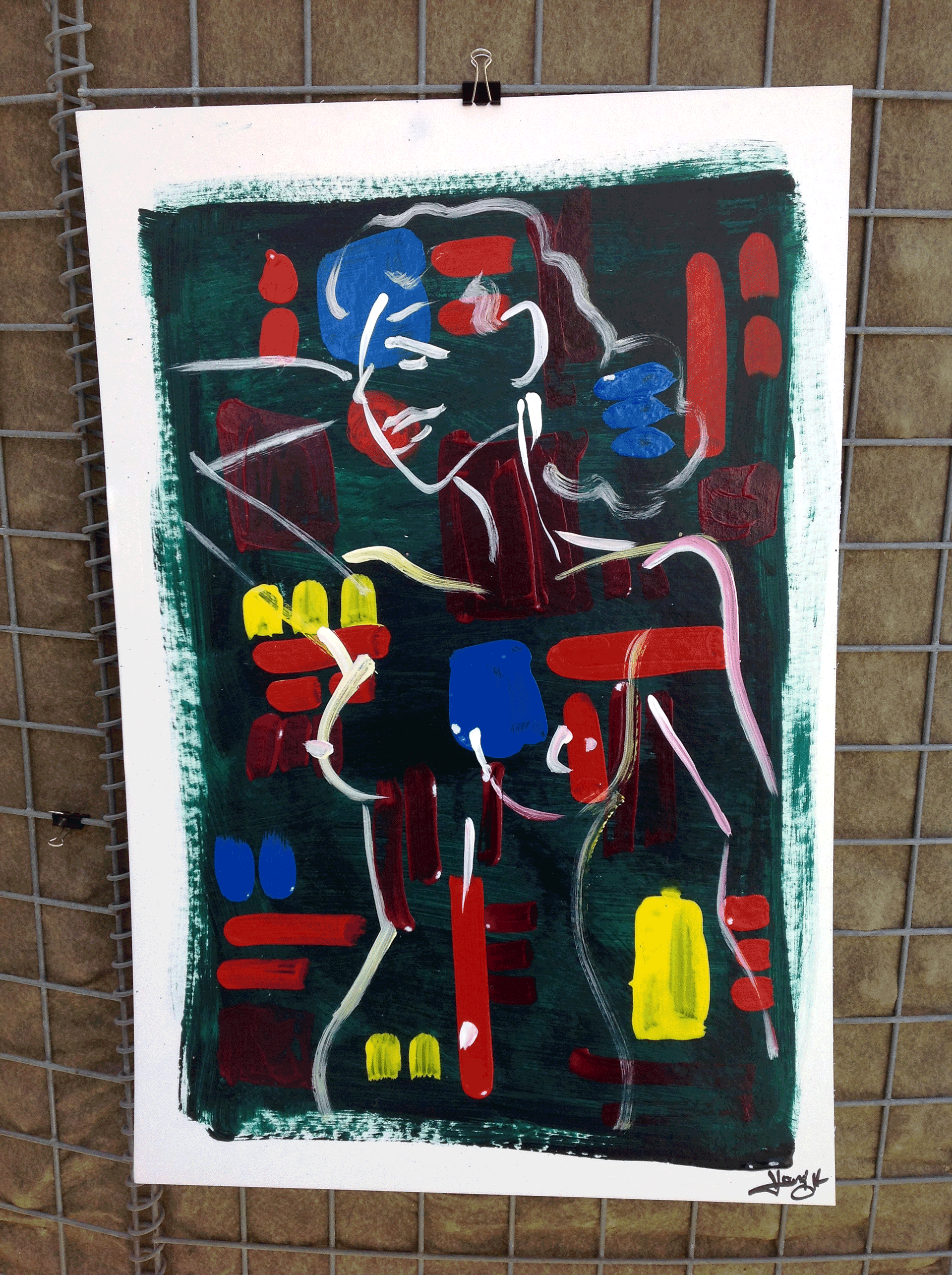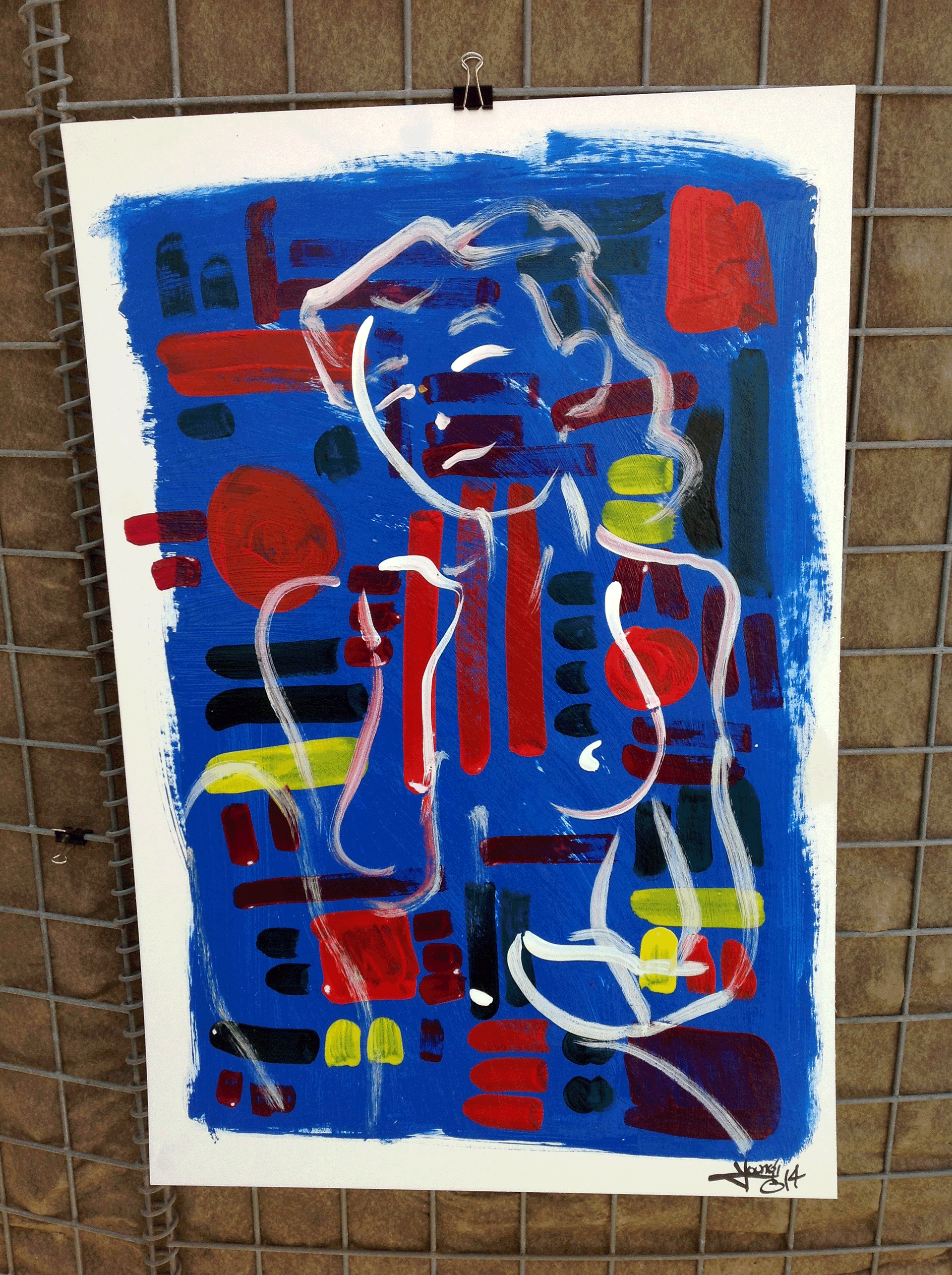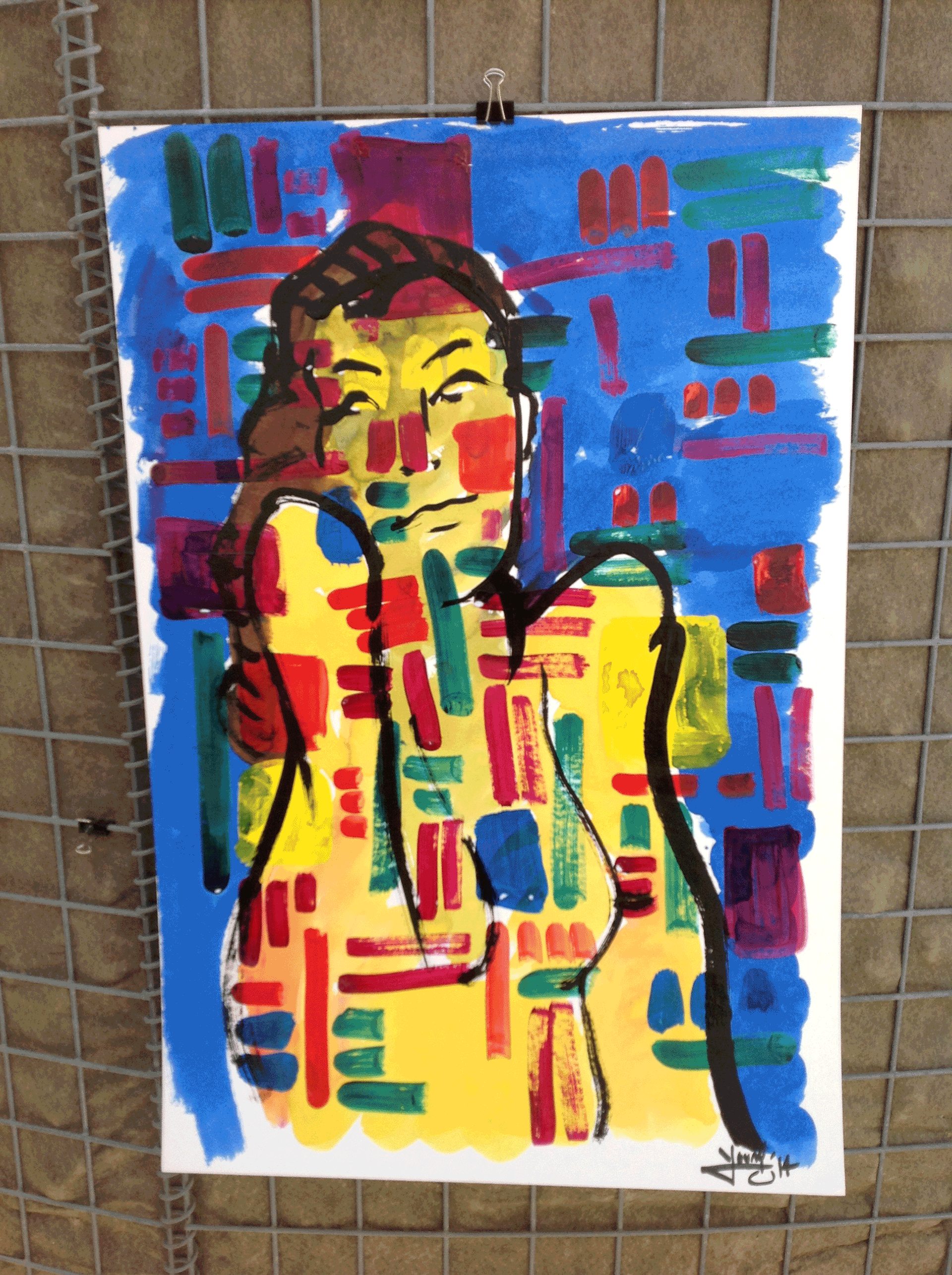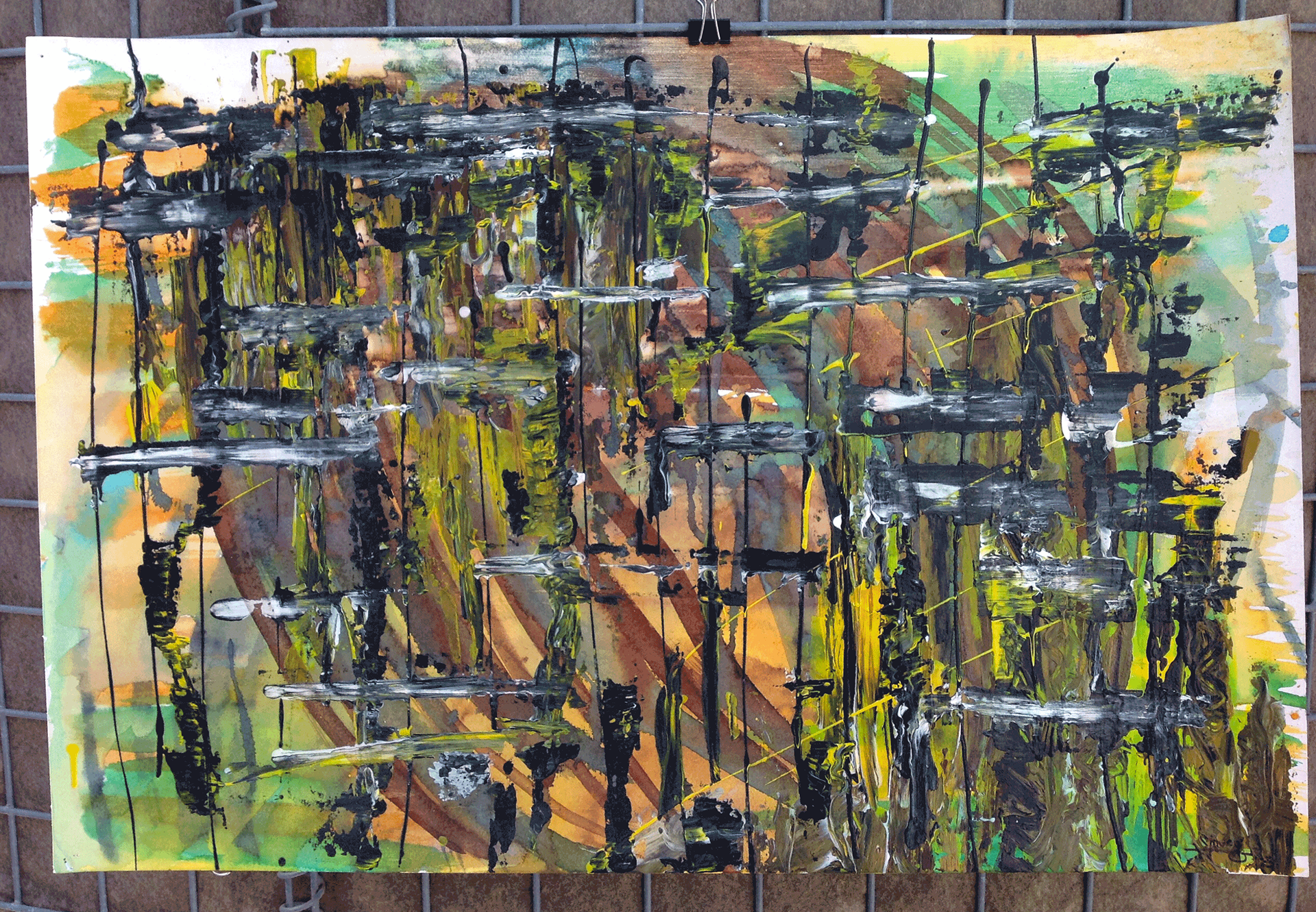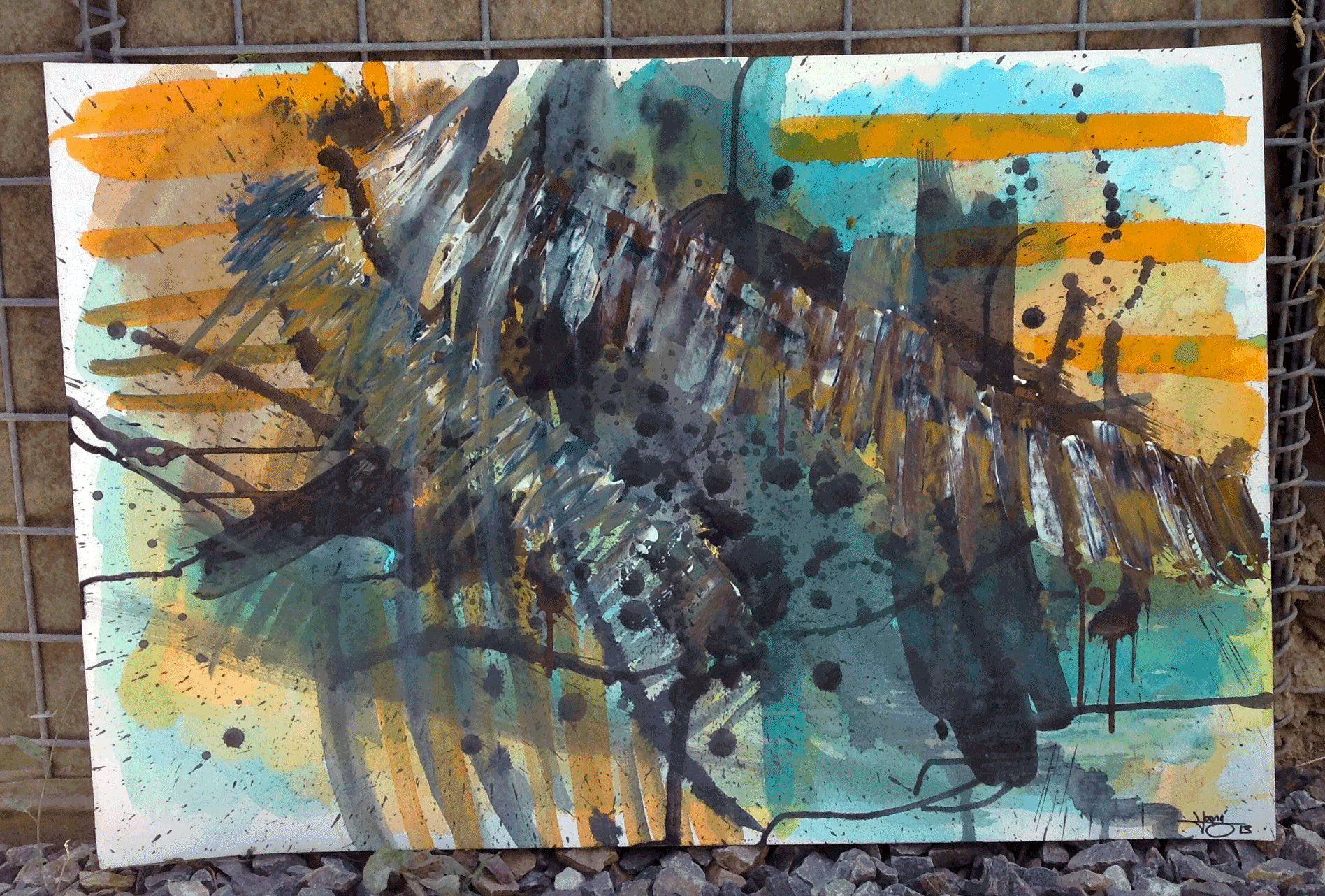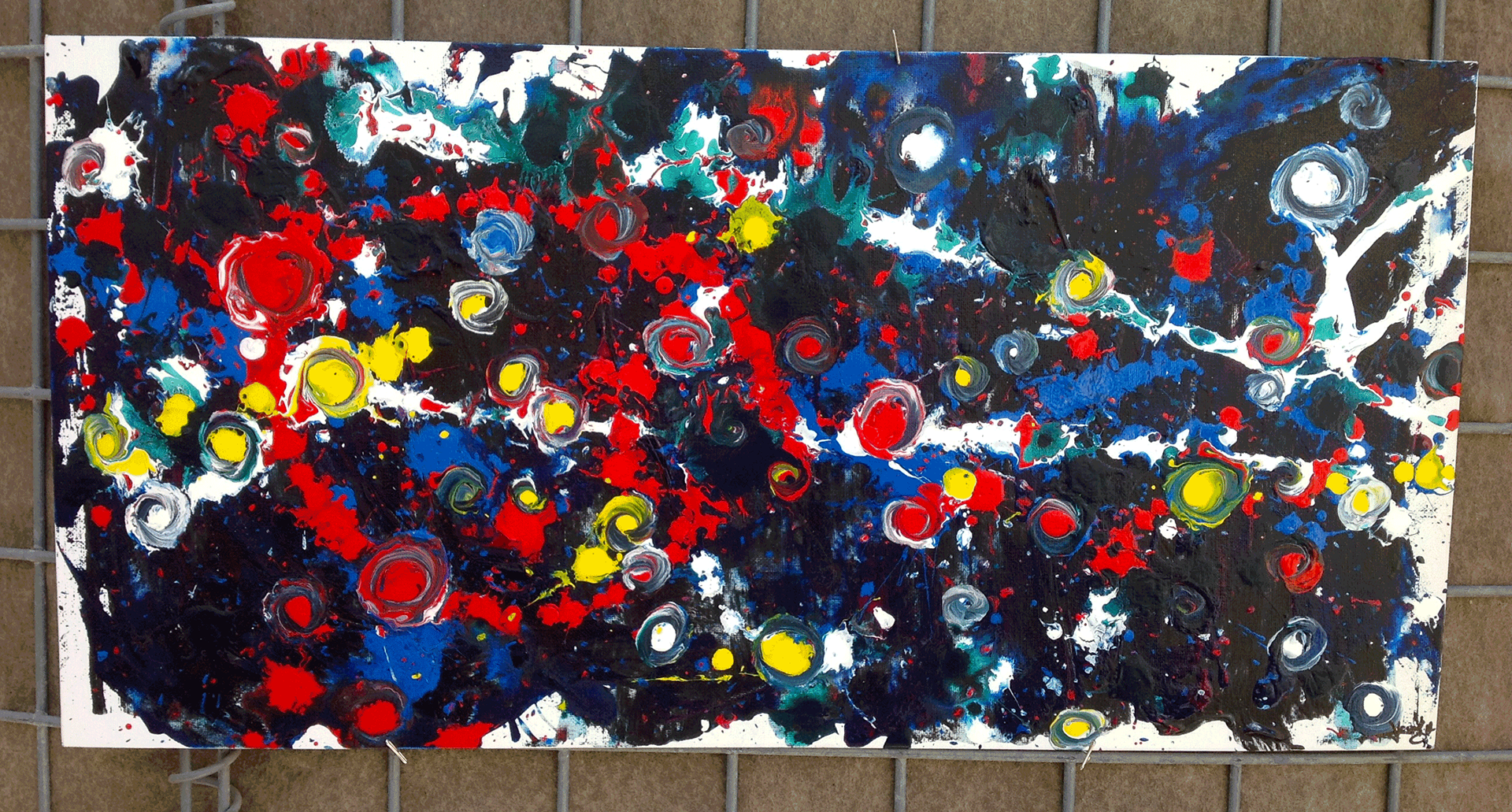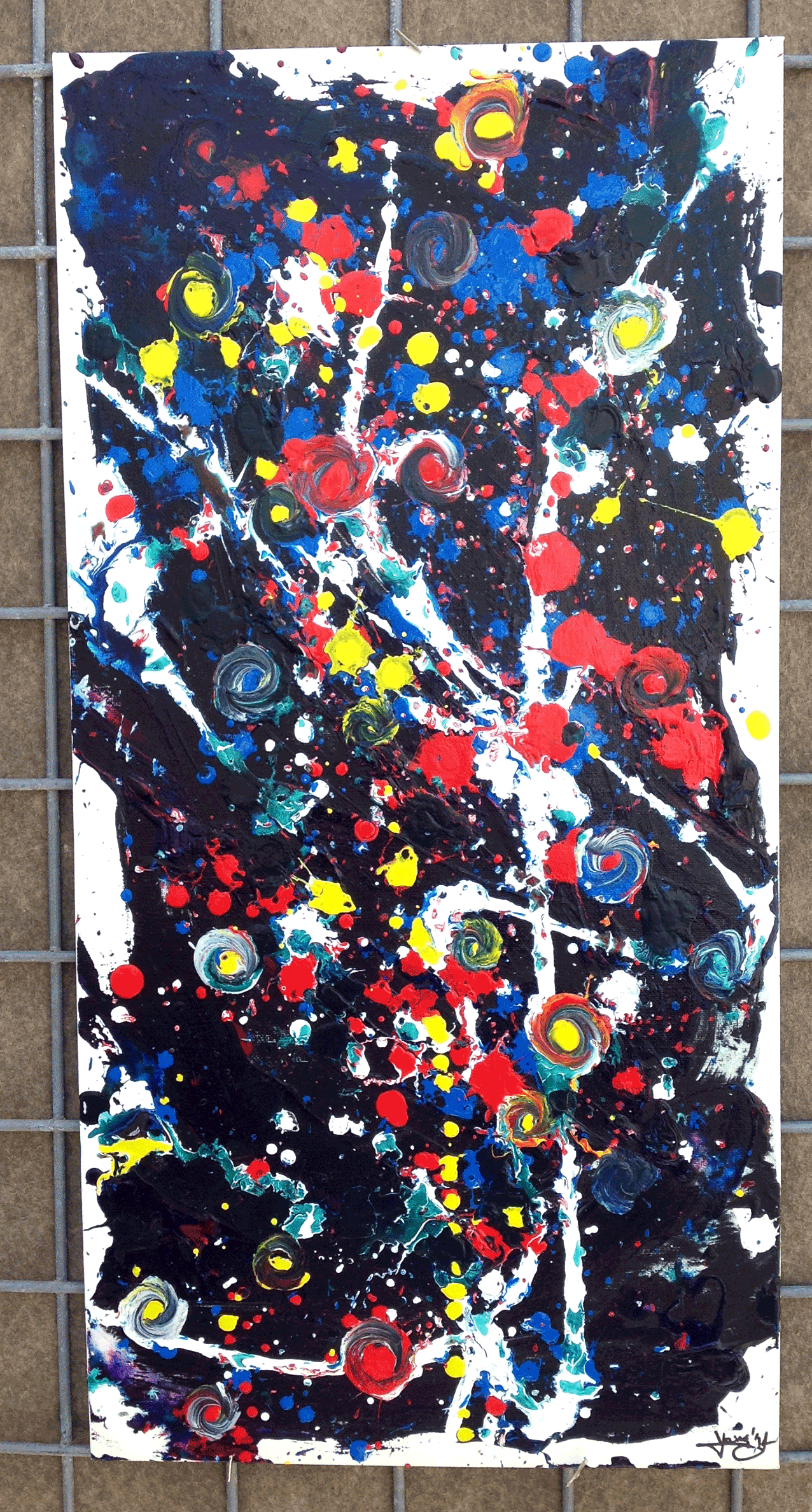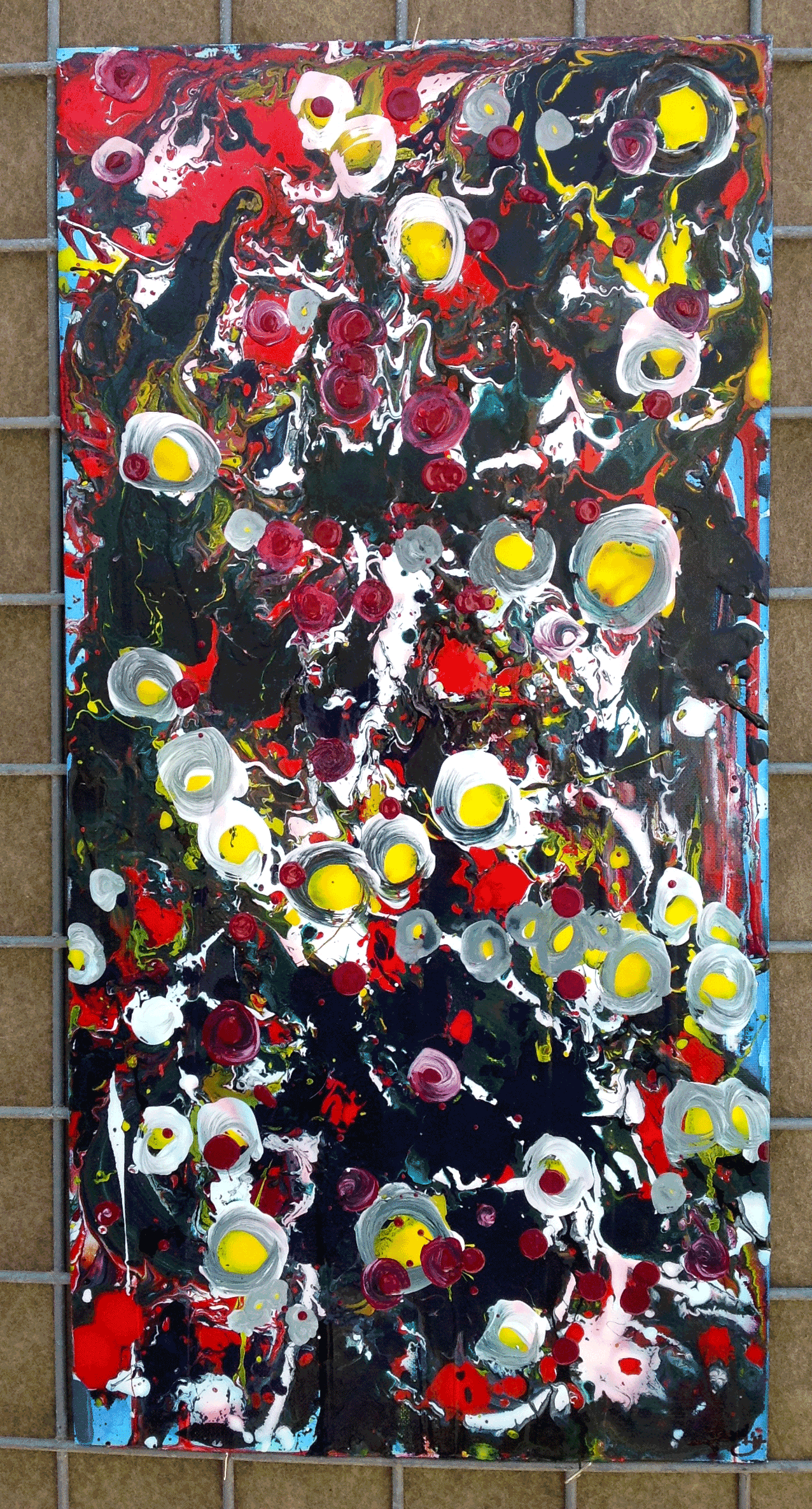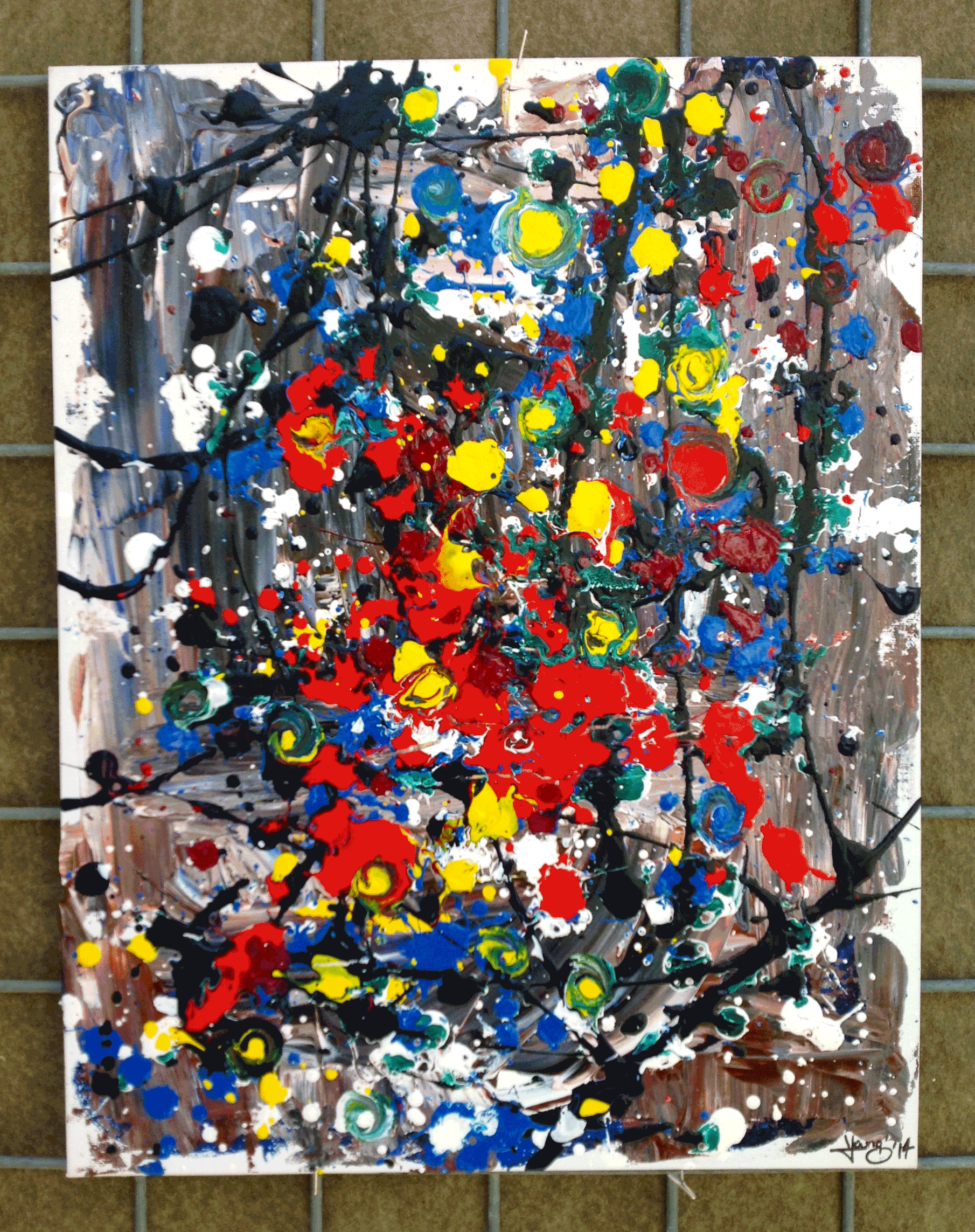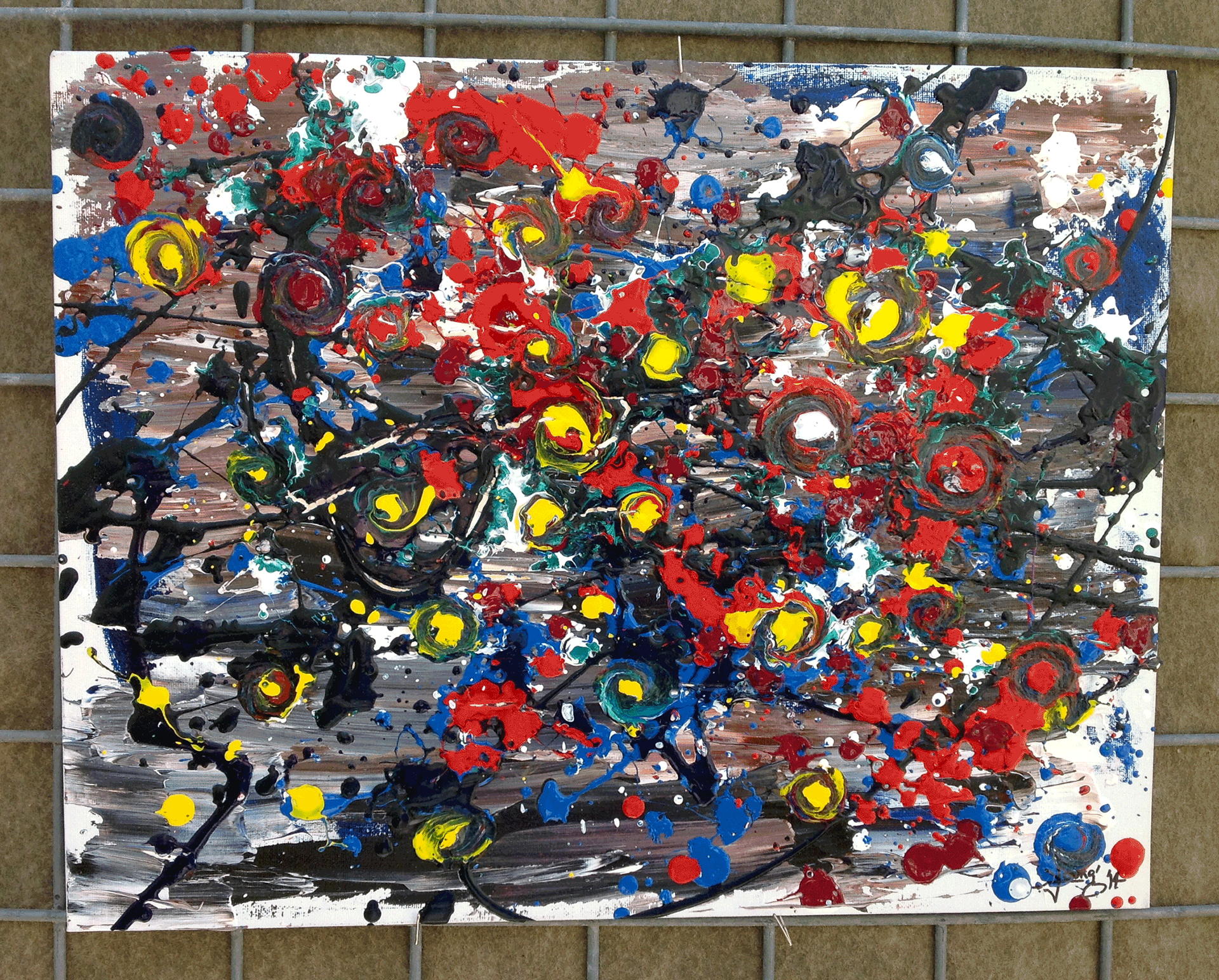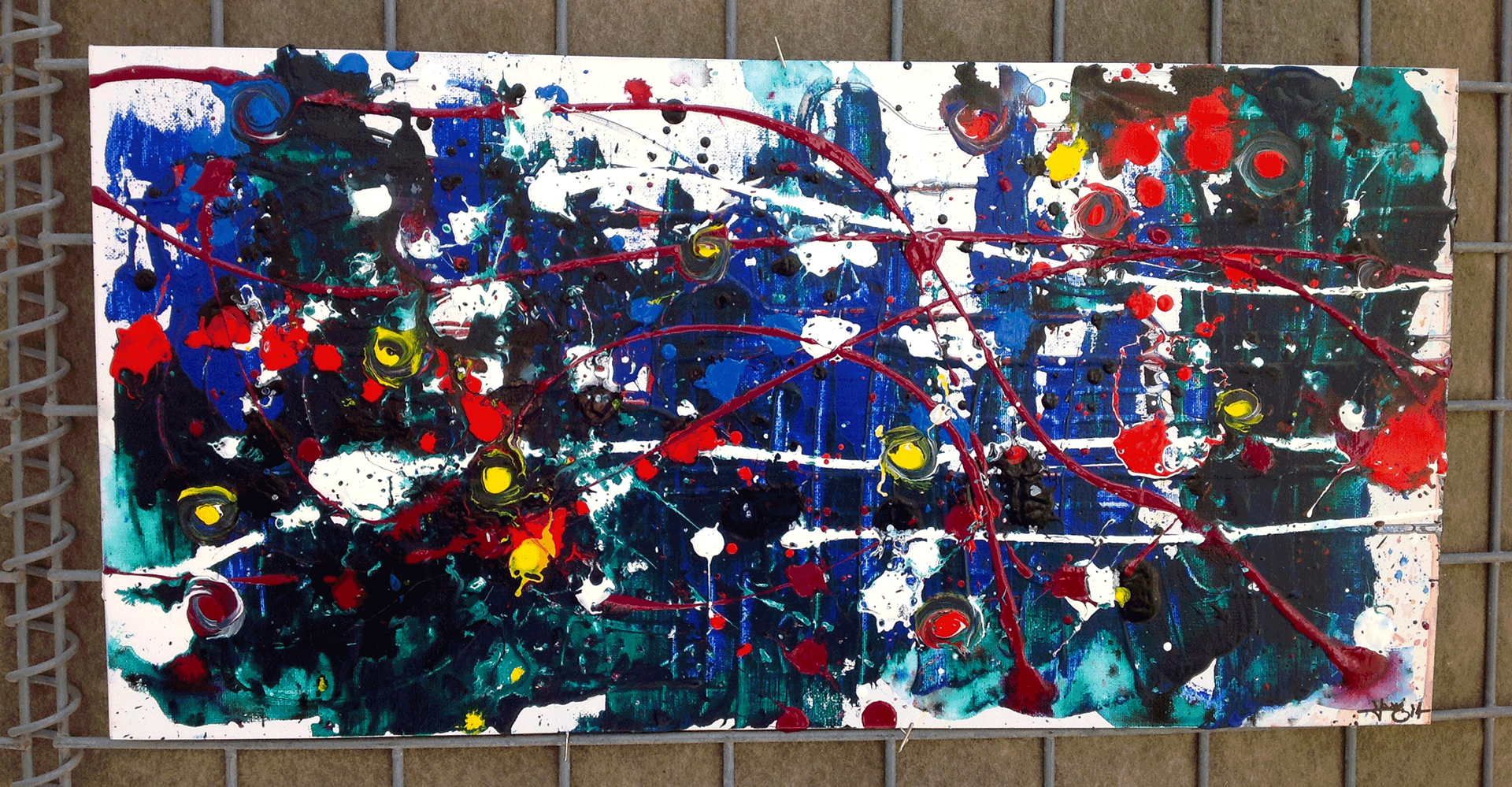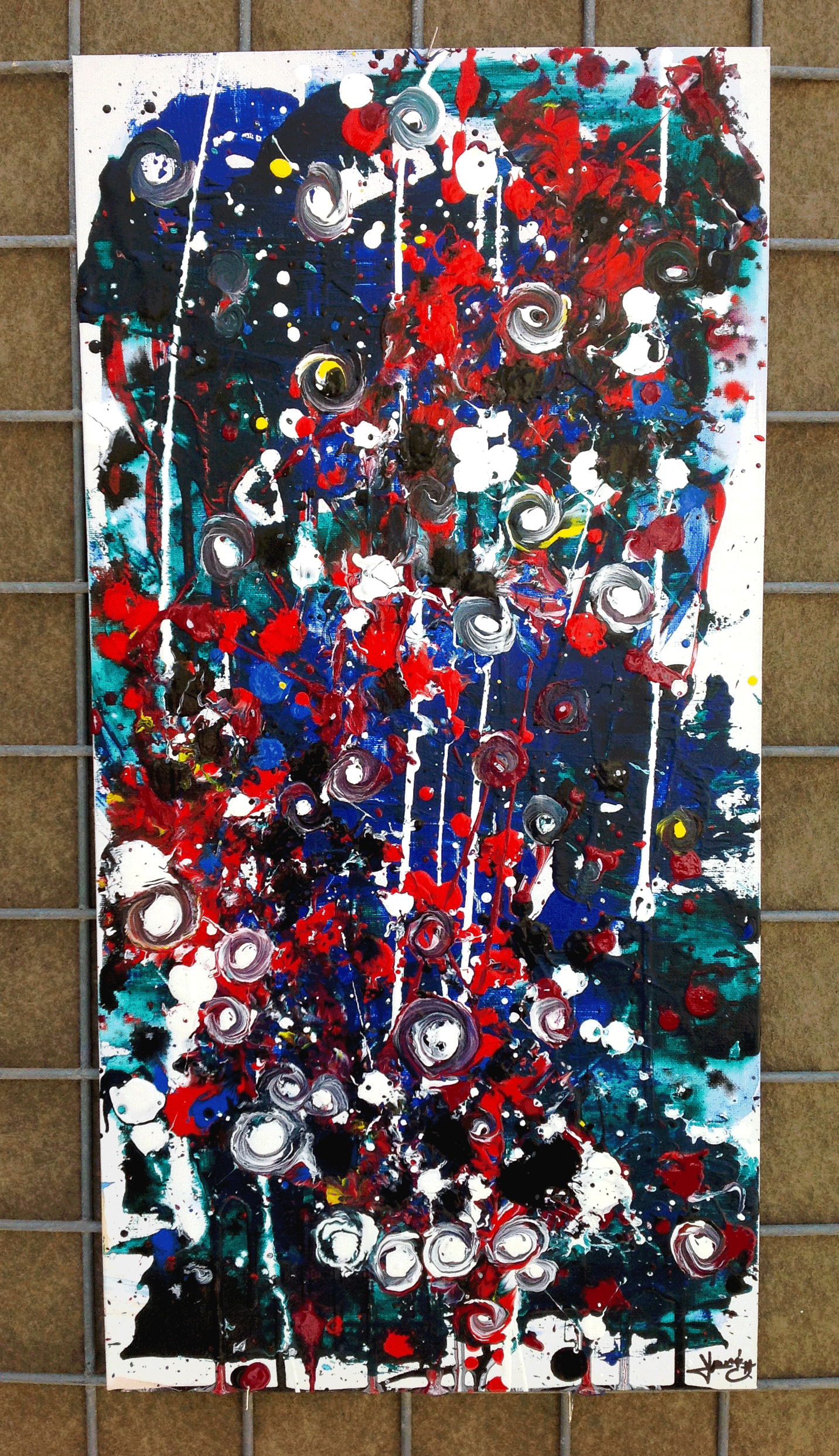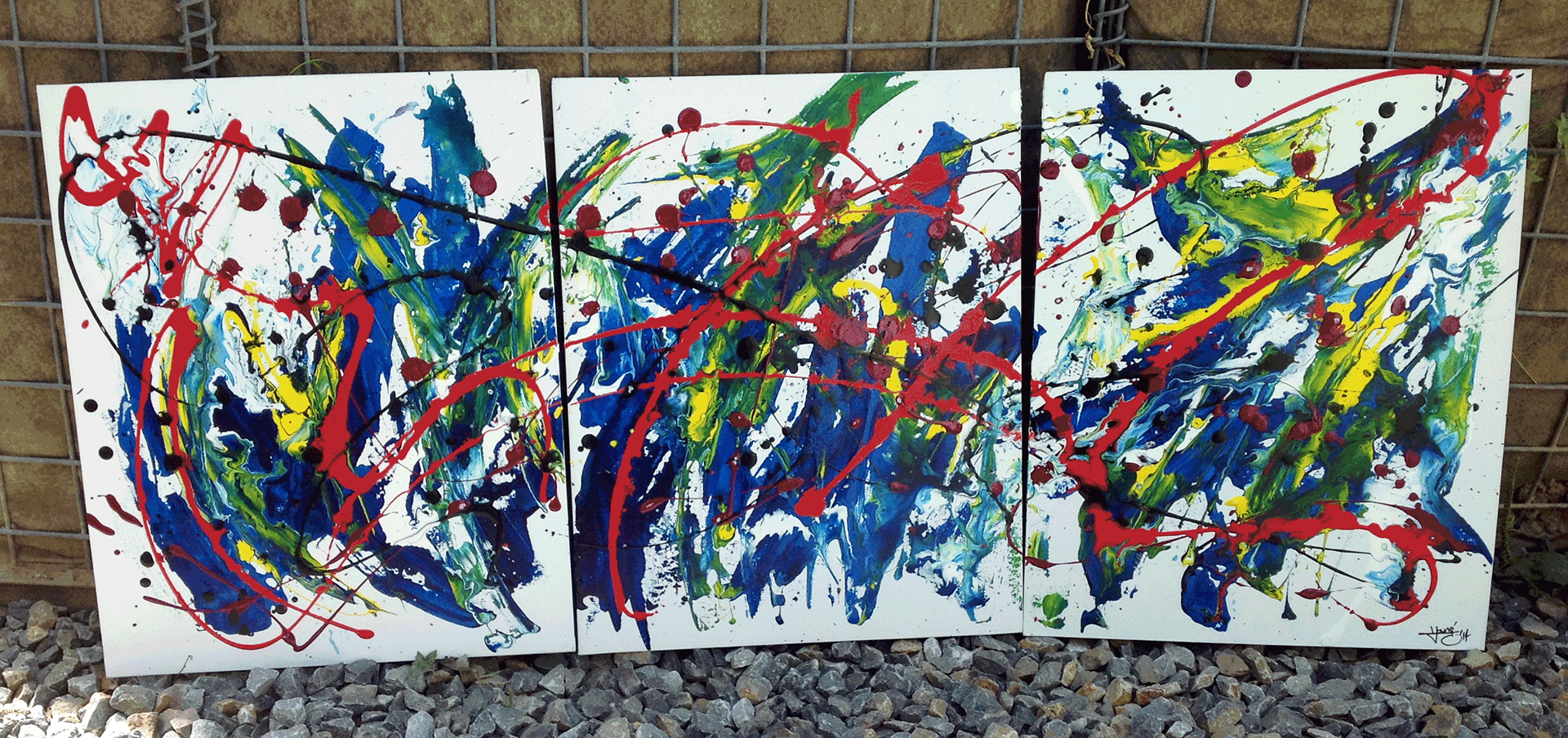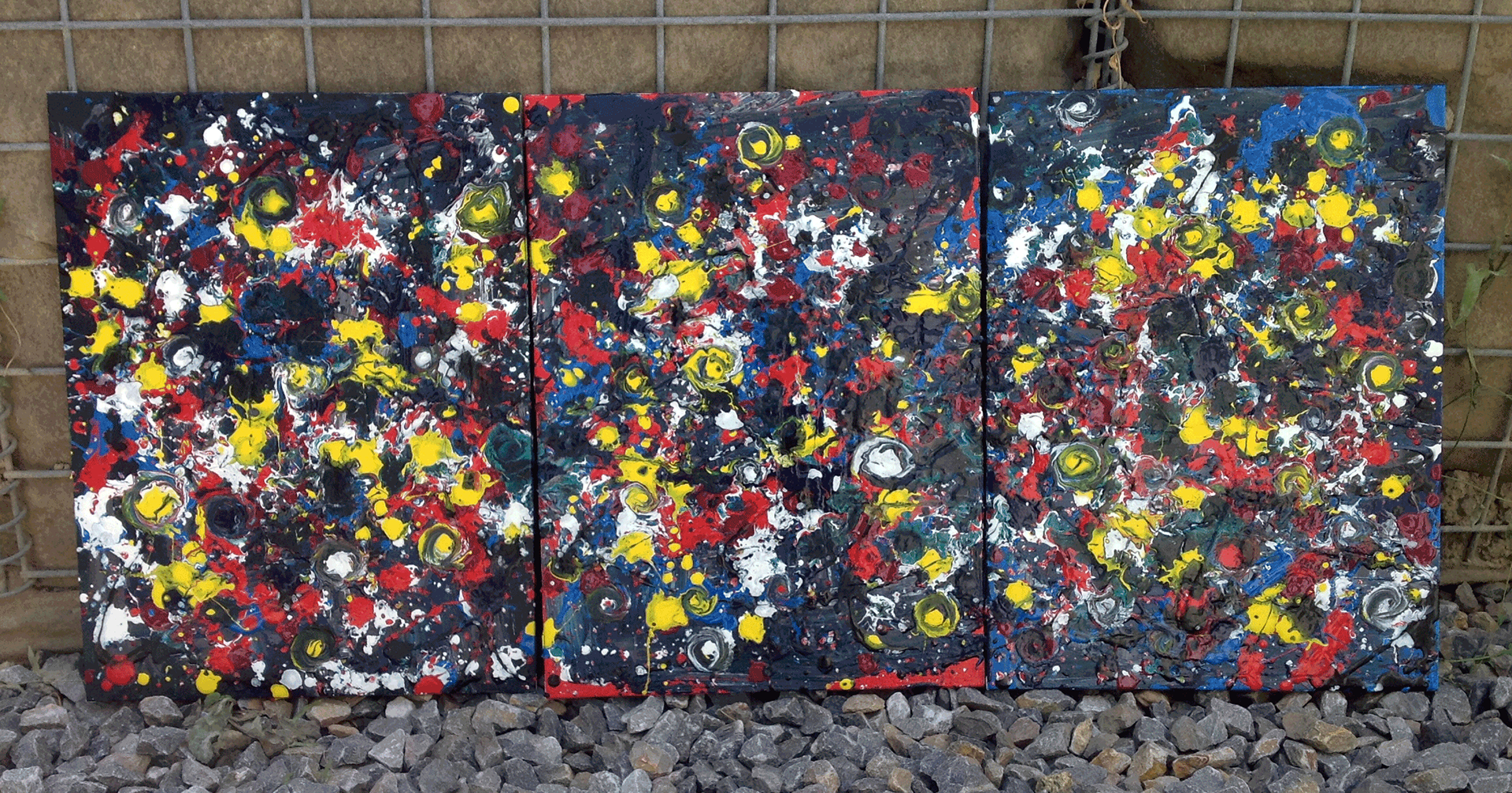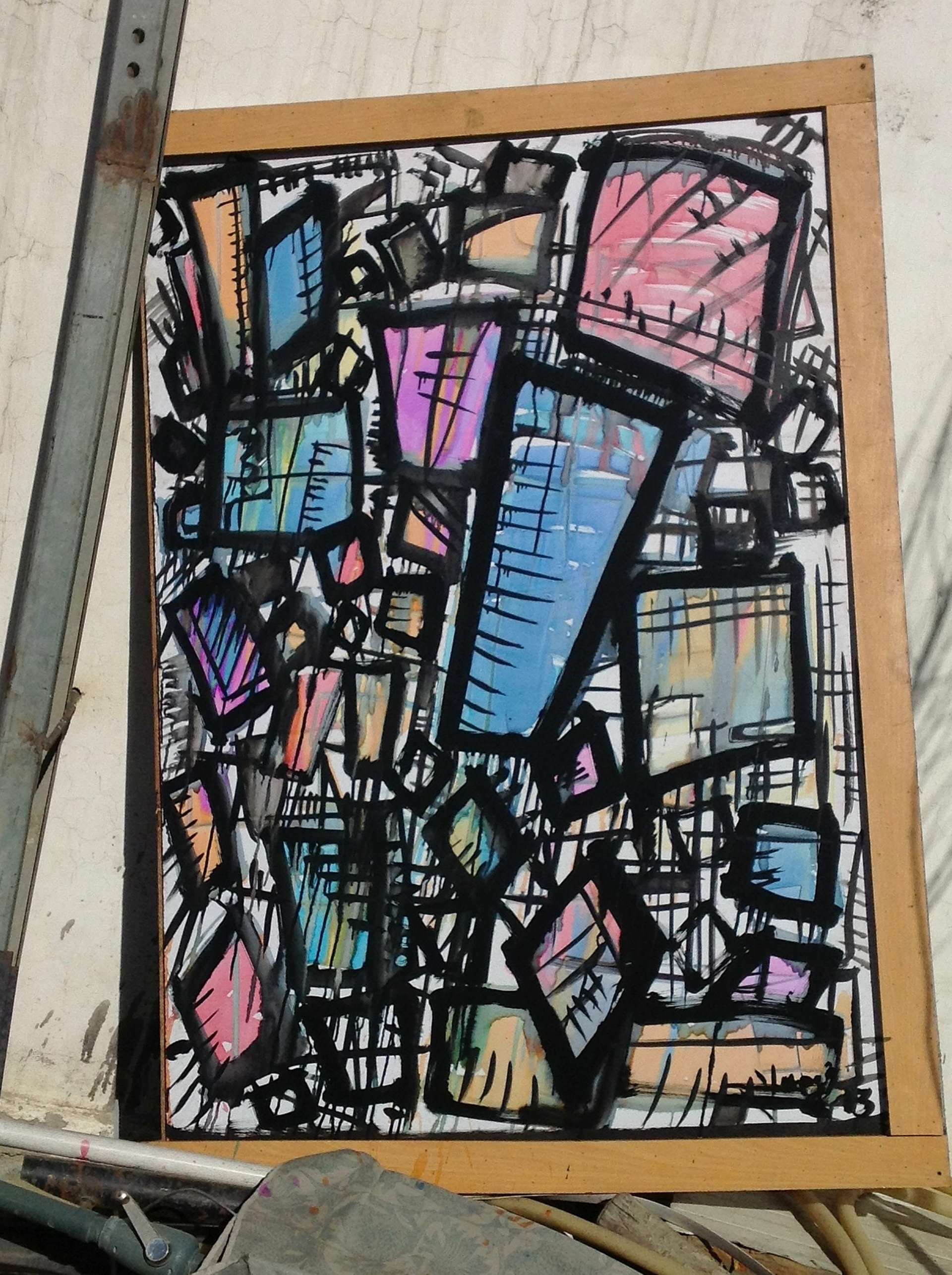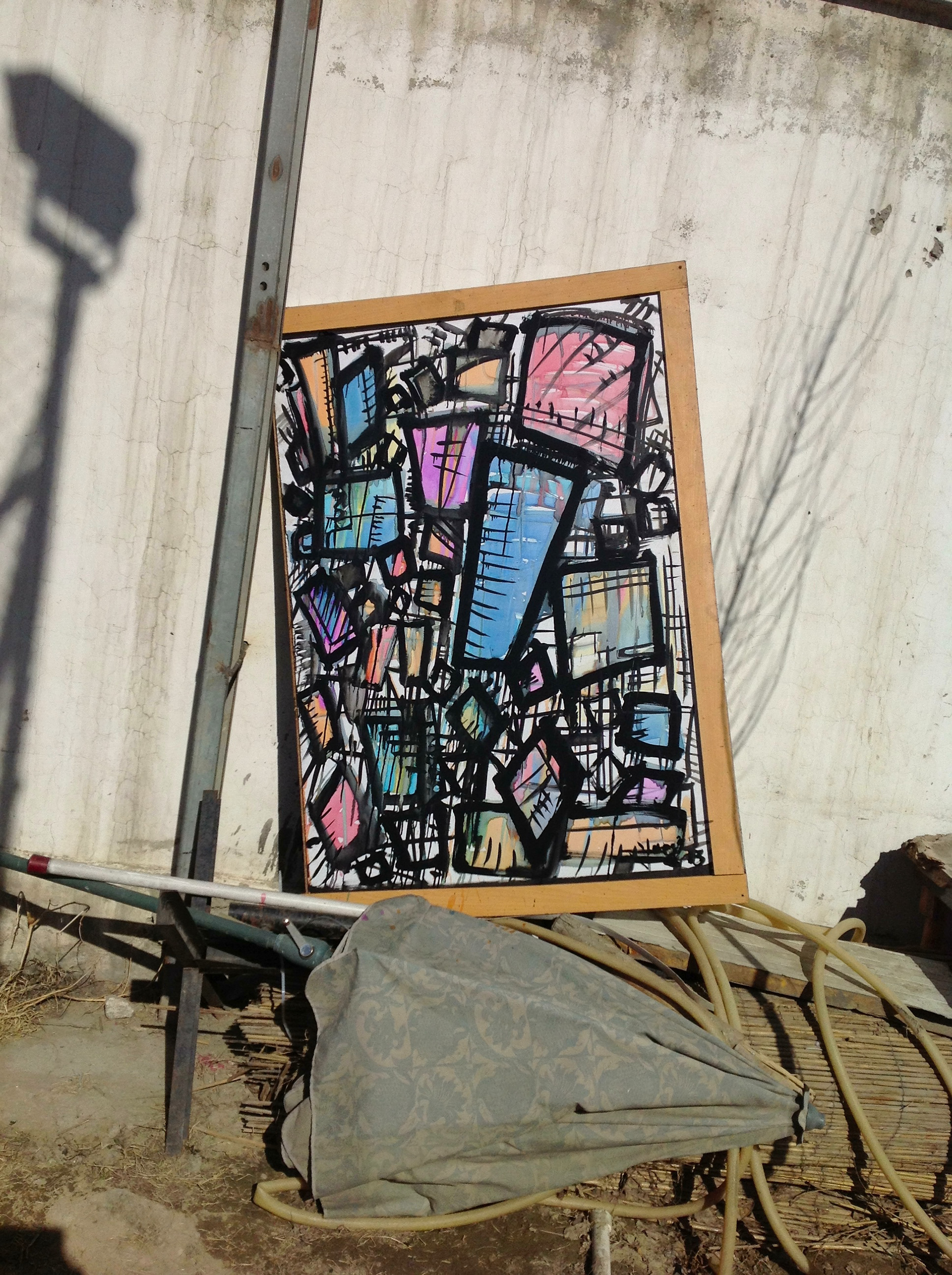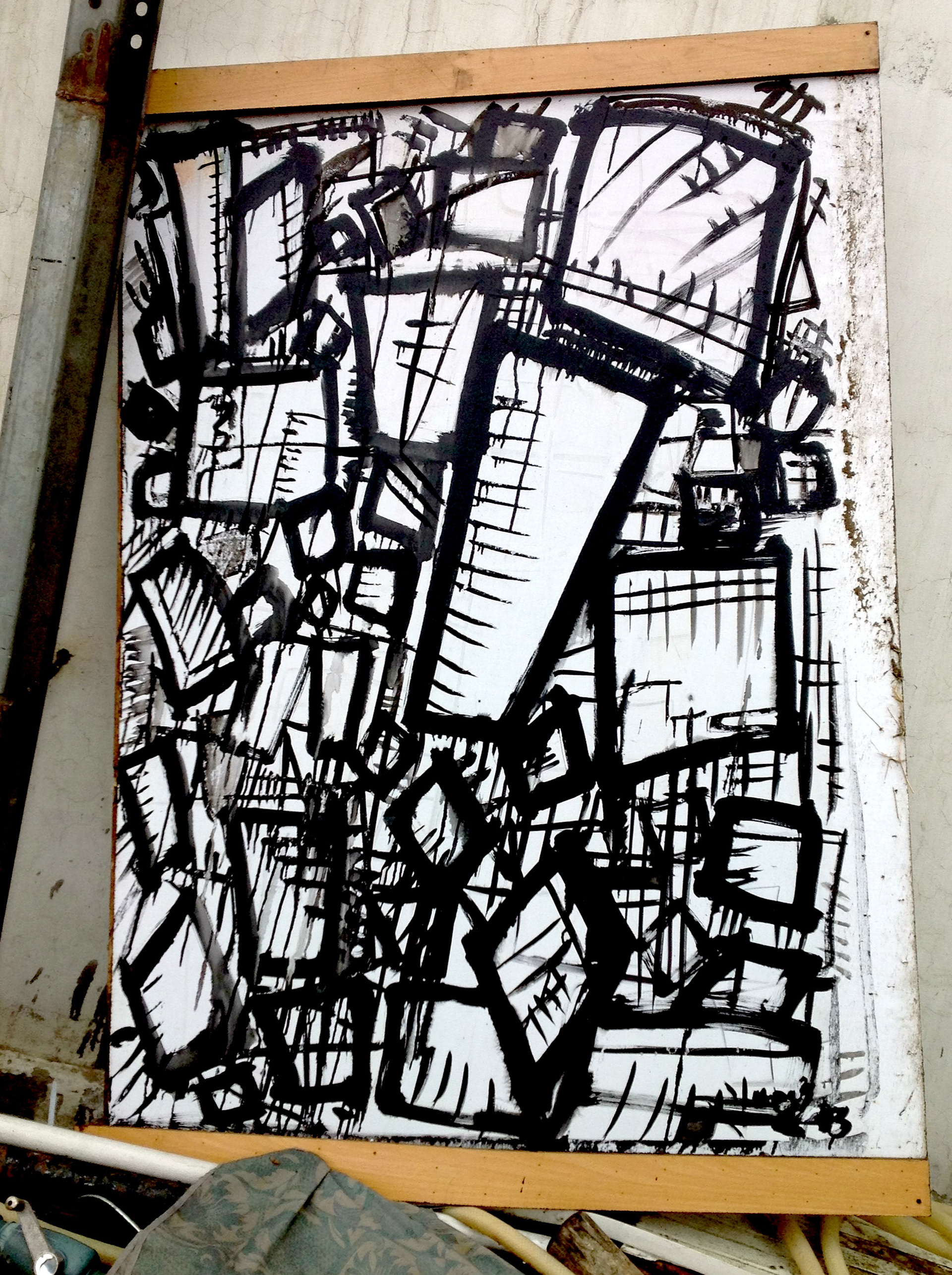OK, F2-13 The room I spent a lot of time in and during my time over in Afghanistan. This has been a project nine years in the making. While I was there, I had the opportunity after some time to sit down and really kind of focus on my artworkthat I hadn't had time or kind of the center to do.
I really thought about the impermanence of art while I was there because I had the opportunity to create all this stuff and I was using cardboard and illustration board and other art supplies that we had brought in.
The impermanence of, you know, I wasn't going to be able to take everything home.
So I thought, Hey, you know, I'll just create without even thinking about that.
And at the end, the only thing that will be left will be this the images that I take of it and the footage that I document from it.
So, you know, it's really kind of cool and freeing that, you know, you're not treating anything precious.
You're not really working with precious materials. You're not thinking, how am I going to protect this
or keep it or make sure it survives.
or keep it or make sure it survives.
Which kind of, you know, had in the back of my mind, you know, the artwork they restore.
And it made me think, how many times can you restore something before it becomes a derivative of what it really was?
And it made me think, how many times can you restore something before it becomes a derivative of what it really was?
It's no longer the person who created it. You've put so much extra stuff into it that it's no longer,
you know, the original anymore. So with that in mind, I was able to just have fun.
you know, the original anymore. So with that in mind, I was able to just have fun.
You know, I did a lot of stuff digitally that isn't represented here. This just focused on the physical work.
I found like this abandoned piece of of drywall on the compound in a trash pile and was kind of fascinated by the thought that this was destined to be destroyed, so the possibilities were wide open. I went over and painted on it
and then it rained and washed the color out.
and then it rained and washed the color out.
And I'm like, this is kind of cool. It gave it an element of environmental art.
At least I was thinking along those lines.
I remember when I was in art school and one of my teachers was telling us to respect our work by not putting holes in it when we were putting it up to show in class. Showing us the proper way to to treat our artwork and this project was the antithesis of everything she said.
I knew it ultimately I was going to burn it all. One final blaze of glory and offering to the gods and muses of creativity.
Part of me was trying to think how to ship all this home. Then wondering what am I going to do with it once I get it home. It was all part of the process, all part of the journey.
Being able to experiment. Make a mess.
Being able to just do anything and everything.
Being able to just do anything and everything.
Some of it translated to other projects, reused and recreated digitally.
It's sentimental to watch all that time and effort burn. The only record any of it existed being these images and video. It made me think about how the majority of what we create ends up lost and destroyed.
Even the cherished pieces from the Masters is only a very small fraction of a percent of what they actually created and outputted.
So it was just kind of a meditation on creativity and art and making and just being able to do it without any real expectations and seeing where it leads and enjoying the experience.
And, you know, like looking at some of this stuff again, I'm like, damn, I wish I kind of had that stuff now.
But, it would probably be in the basement gathering dust.
I think now more than ever, we have the ability to find outlets like YouTube or Instagram or Twitter or just social media in general that probably aren't going anywhere anytime soon so that we have the opportunity to leave
for lack of a better word, a legacy or a record of everything we've done, which is actually kind of cool.
But, you know, it feels like there should be a space free space out there for us to leave our footprint for the future,
our families, our friends, or anybody who stumbles across us to be able to, see and enjoy kind of who we were
and what we did.
for lack of a better word, a legacy or a record of everything we've done, which is actually kind of cool.
But, you know, it feels like there should be a space free space out there for us to leave our footprint for the future,
our families, our friends, or anybody who stumbles across us to be able to, see and enjoy kind of who we were
and what we did.
So thanks for watching.
I hope you enjoyed this and like and subscribe.
Come back soon and see more.
Until next time.
